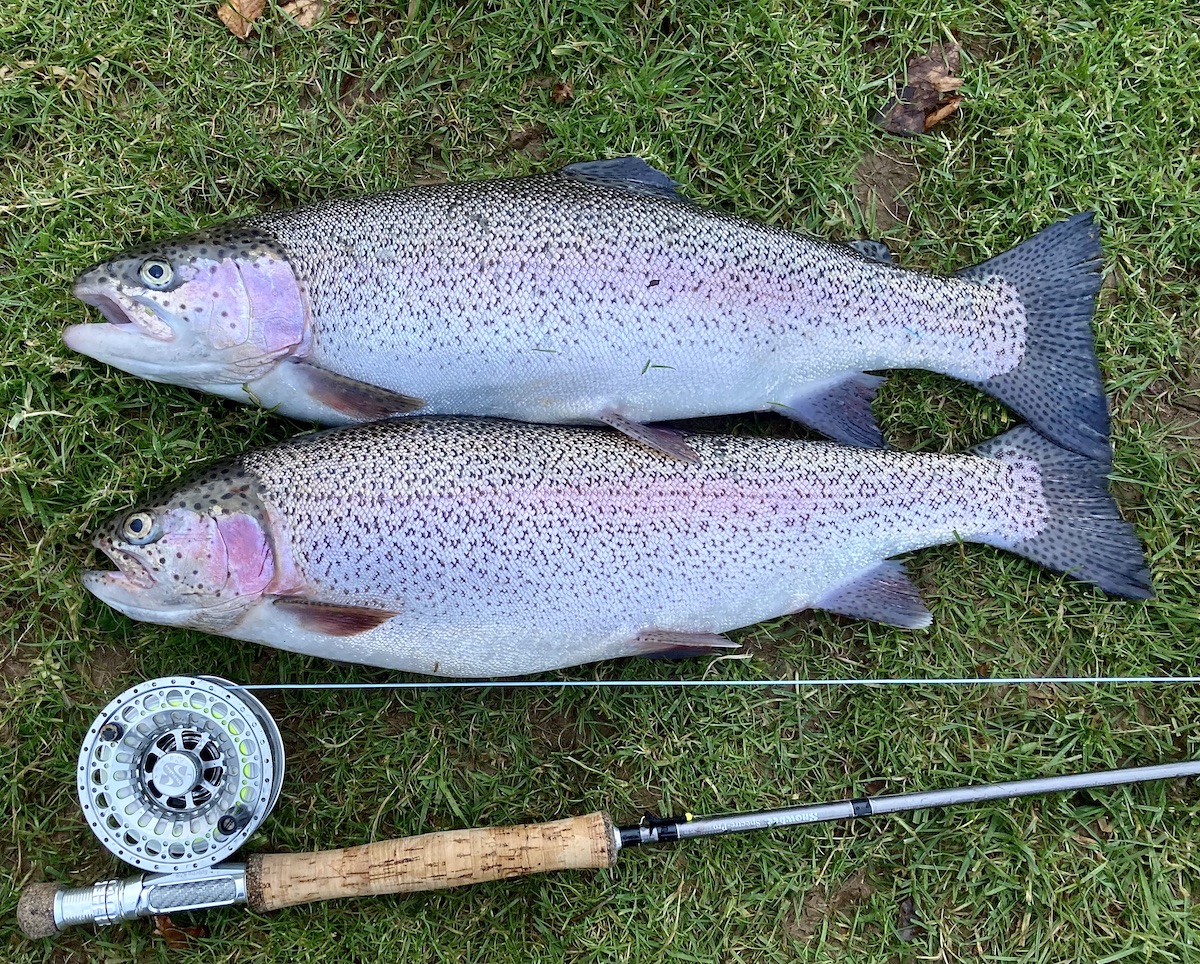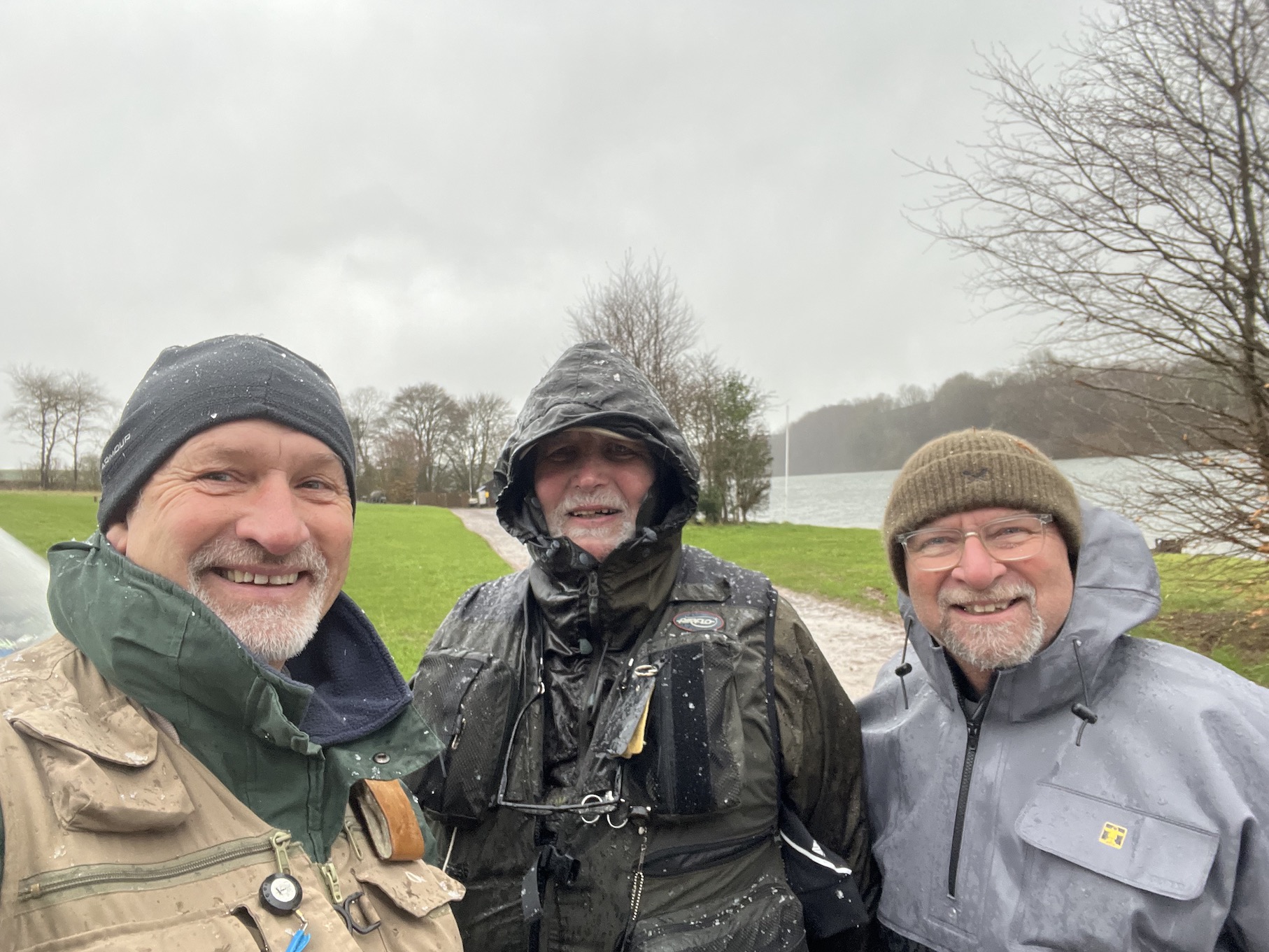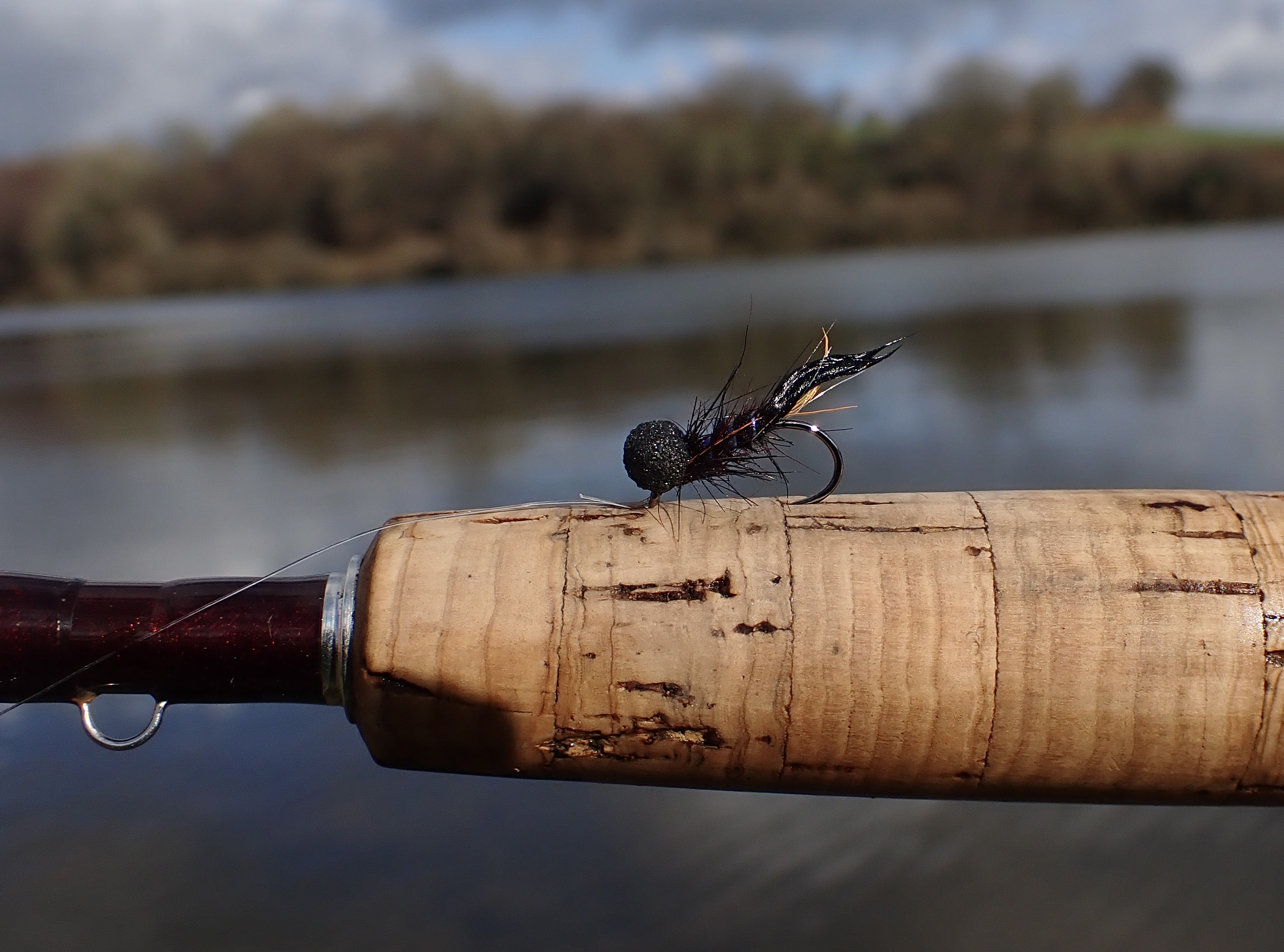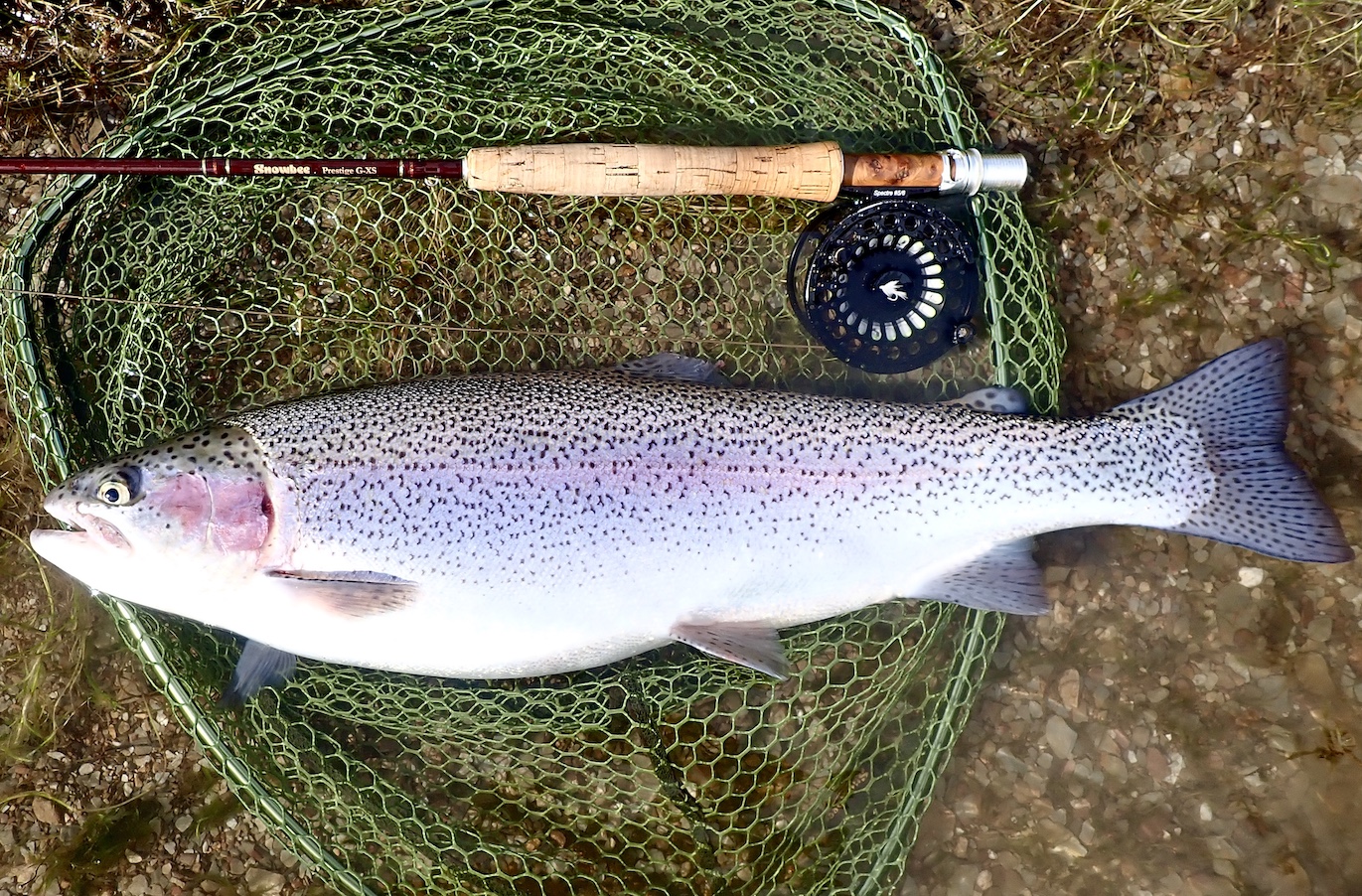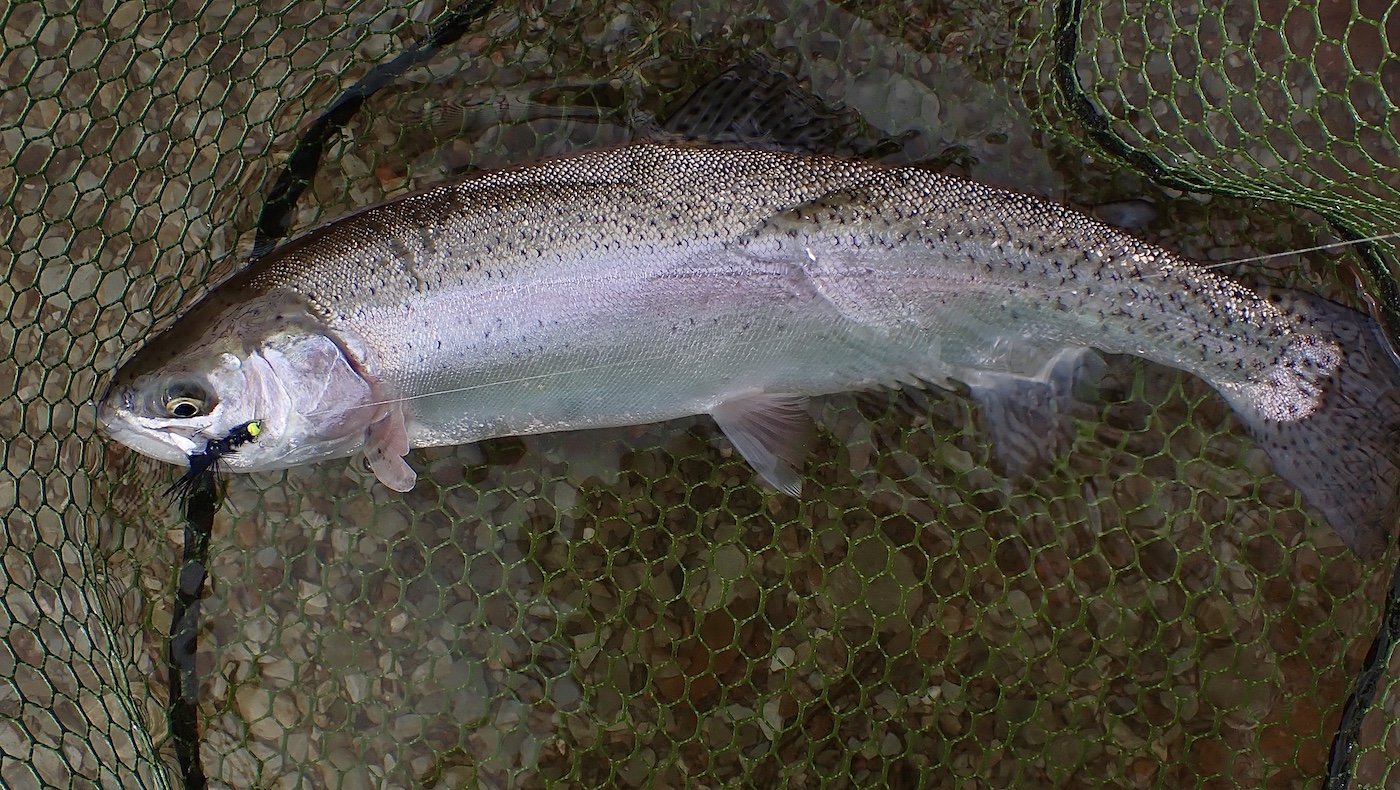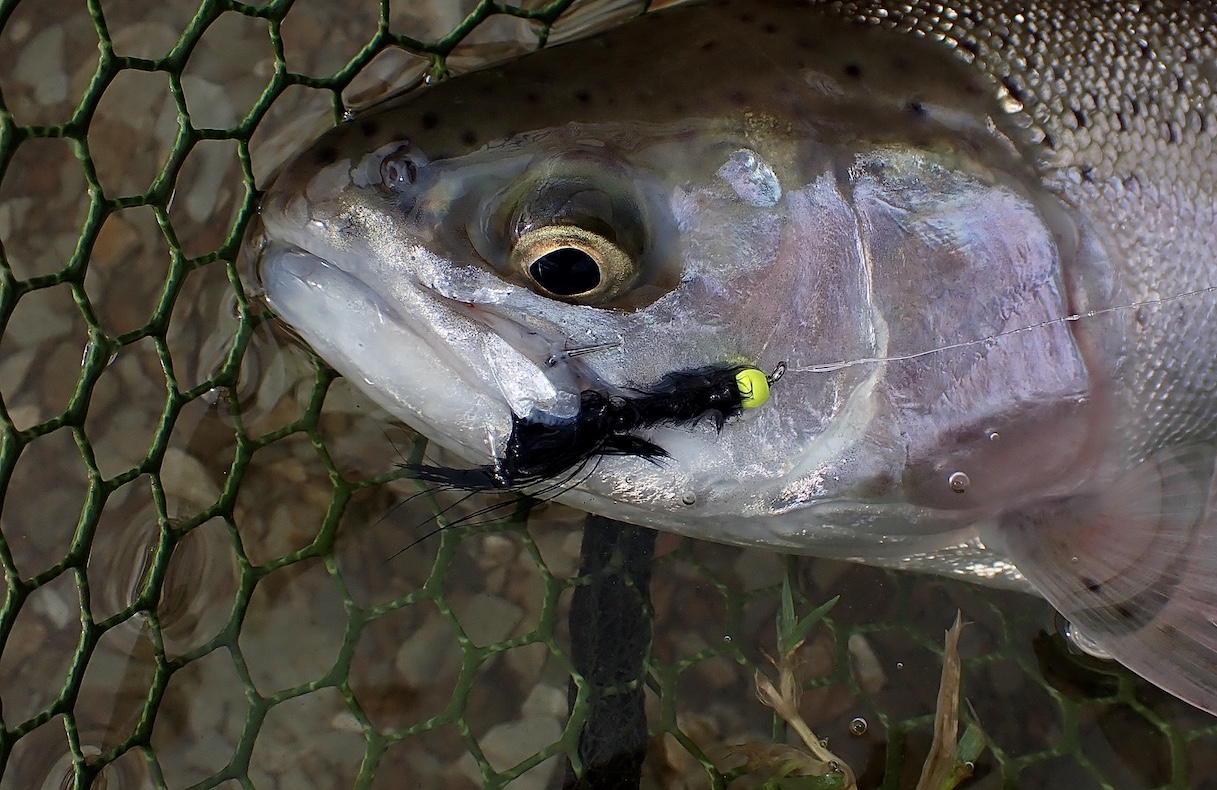The relentless bad weather is playing havoc with fishing and all country pursuits.
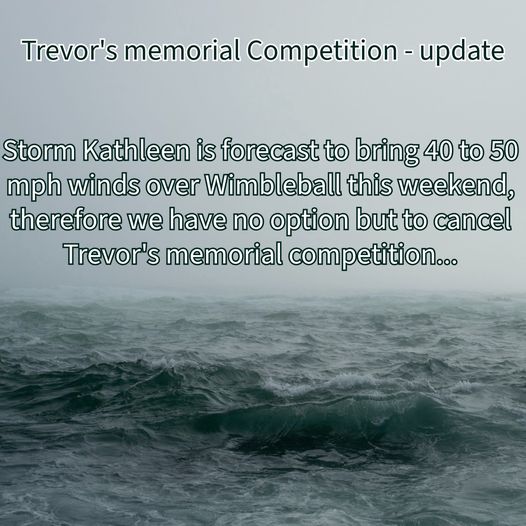

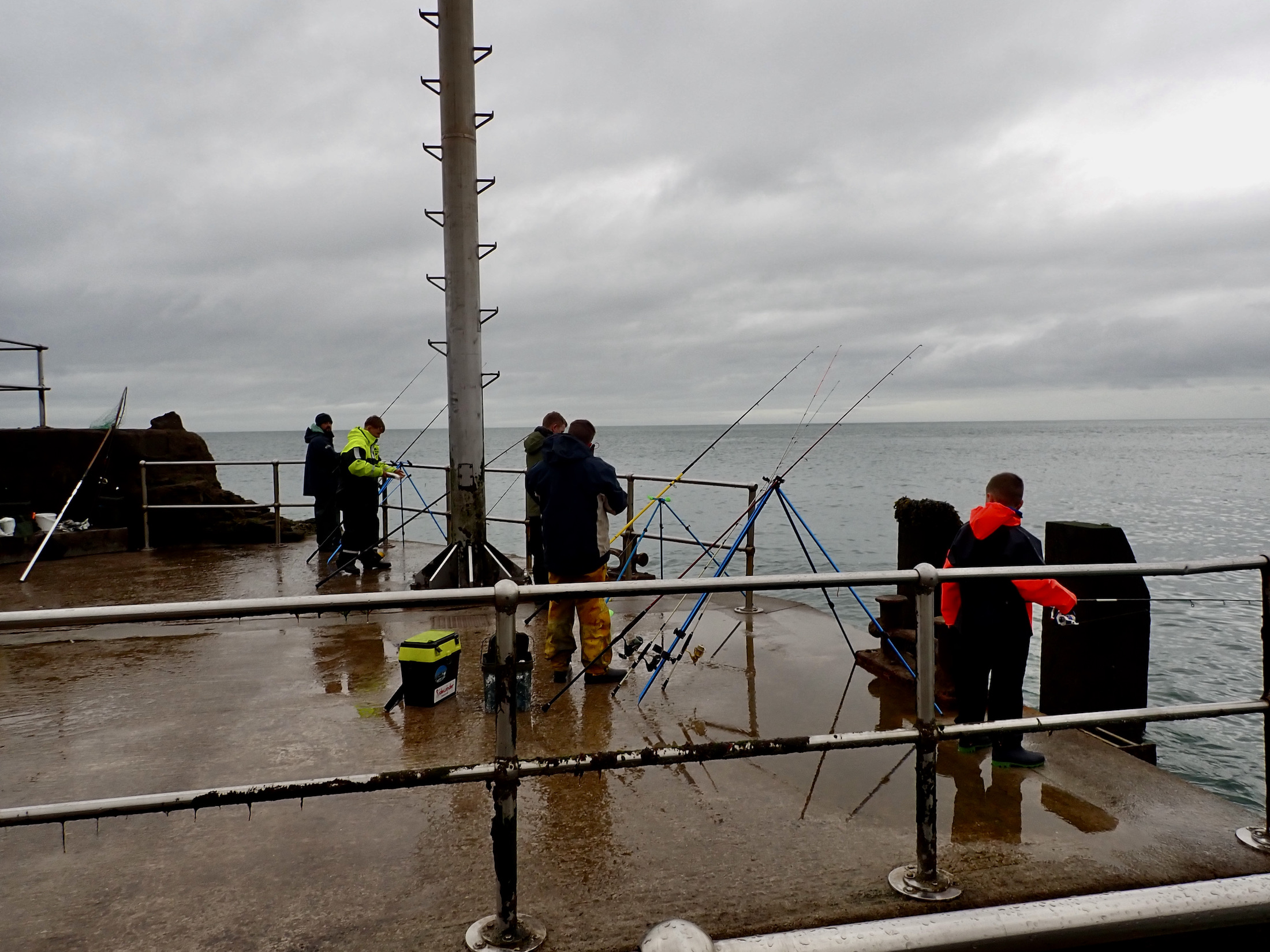
Close to half a dozen members of Combe Martin SAC met up at Ilfracombe Pier for the second pop up fishing session of the Ilfracombe Harbour and Fun Species League. The ongoing dismal Spring weather failed to dent members enthusiasm and I was delighted to find a good number of Junior anglers amongst members attending.
The new format has proved a great success with club members registering an amazing 32 species of fish since February 1st. As this period coincides with what many consider to be the worst time of year for sea fishing off the North Devon coast this is very encouraging.
The leading club members at present are Toby Bassett on 24 species with Daniel Welch and Ross Stanway 22 species each. Gary Prout and Solly Welch are currently joint third on 12. Though this is changing daily and I am struggling to keep up!

With heavy rain pending I was keen to present the prizes for the February and March competitions kindly donated by Danny Watson at High Street Tackle Ilfracombe. The February prize for most species went to Daniel Welch with 22 species and the prize for the best picture also went to Daniel Welch with his stunning picture of a scorpion fish.
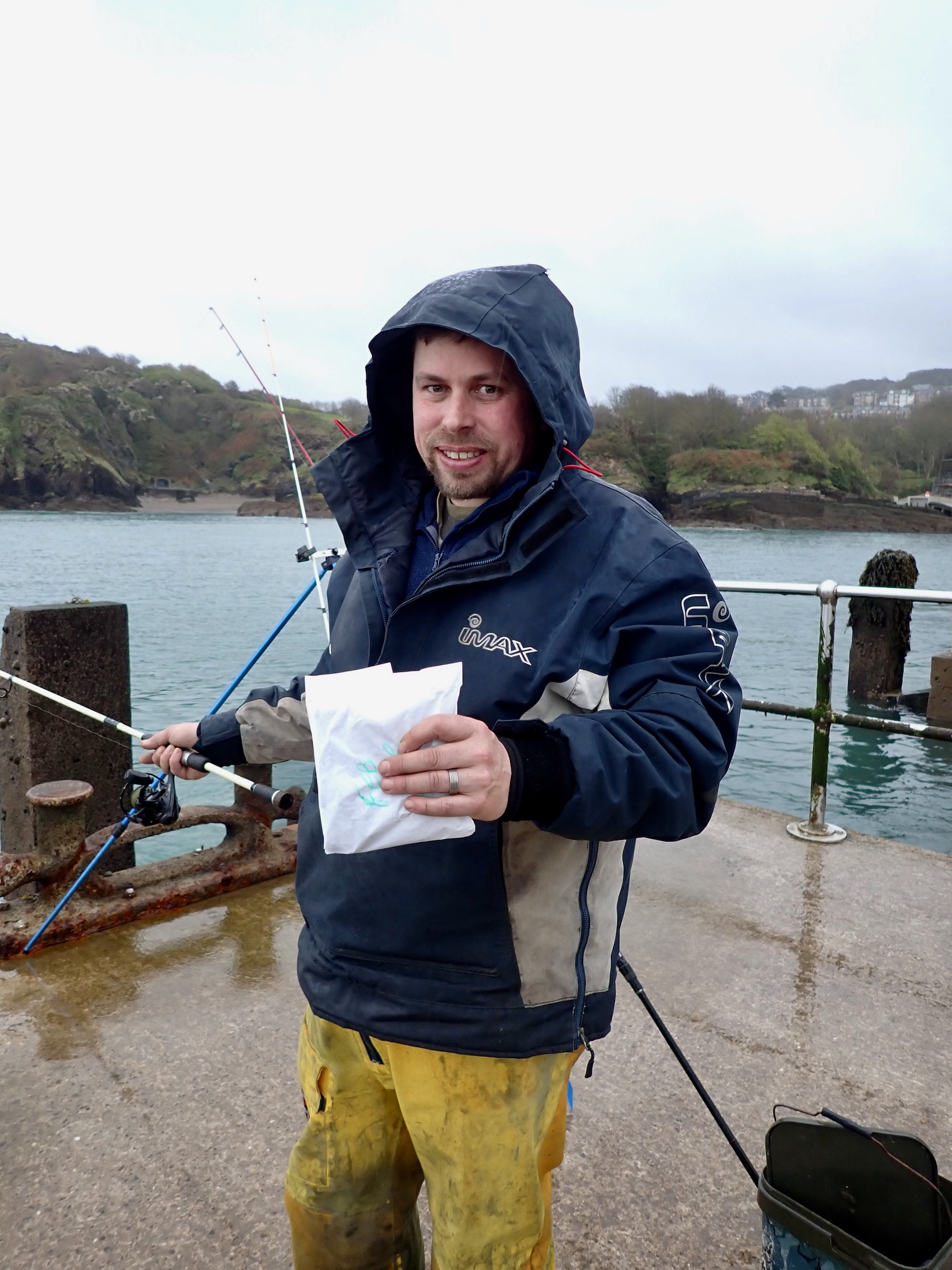
The monthly raffle prize kindly donated by Quay Sports was won by Toby Bassett.
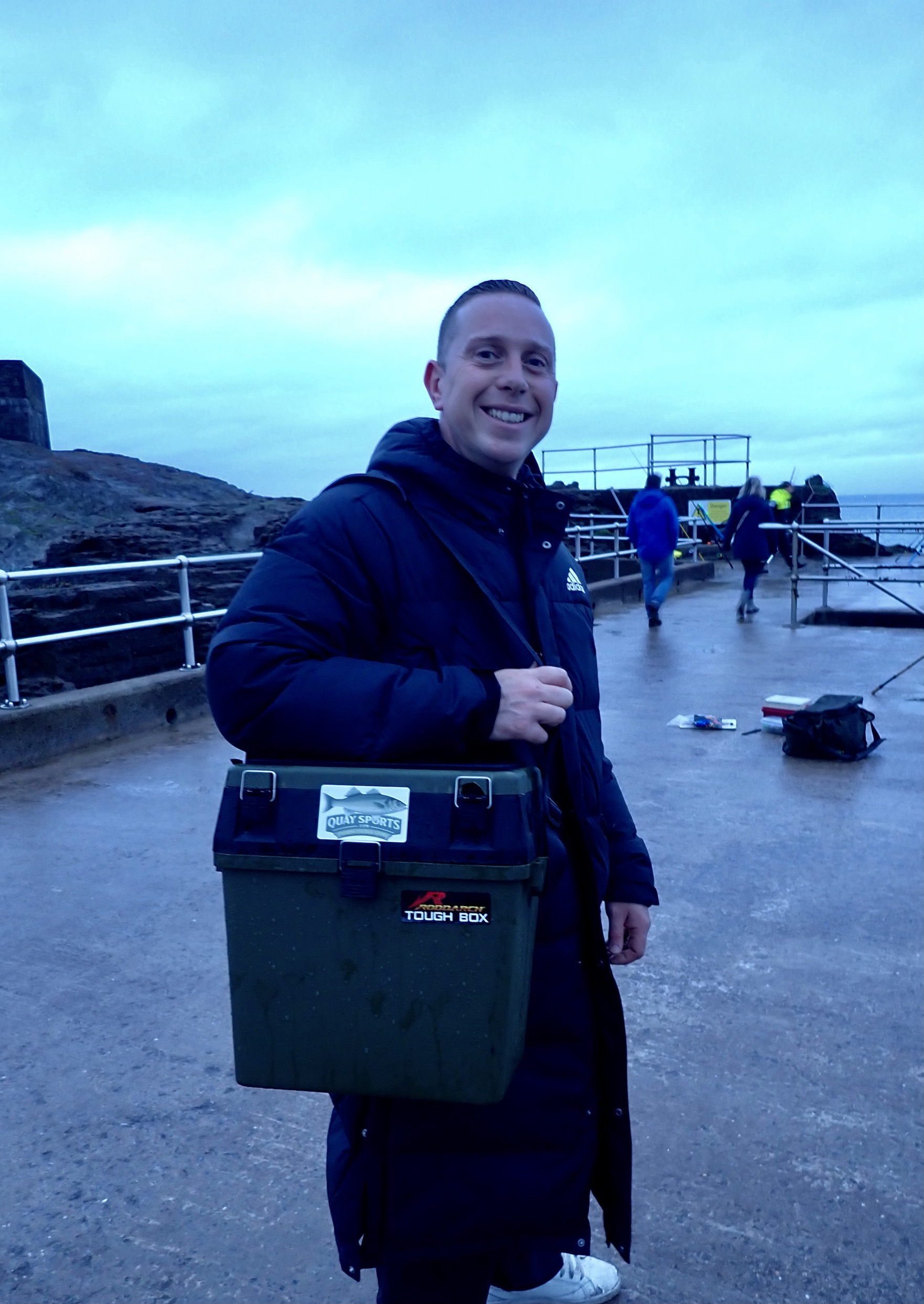

The water clarity was excellent and as the tide ebbed an abundance of fish were swung onto the pier. Several dogfish were caught by Lenny Lake who has taken an early lead in the April competition which is for the longest fish.
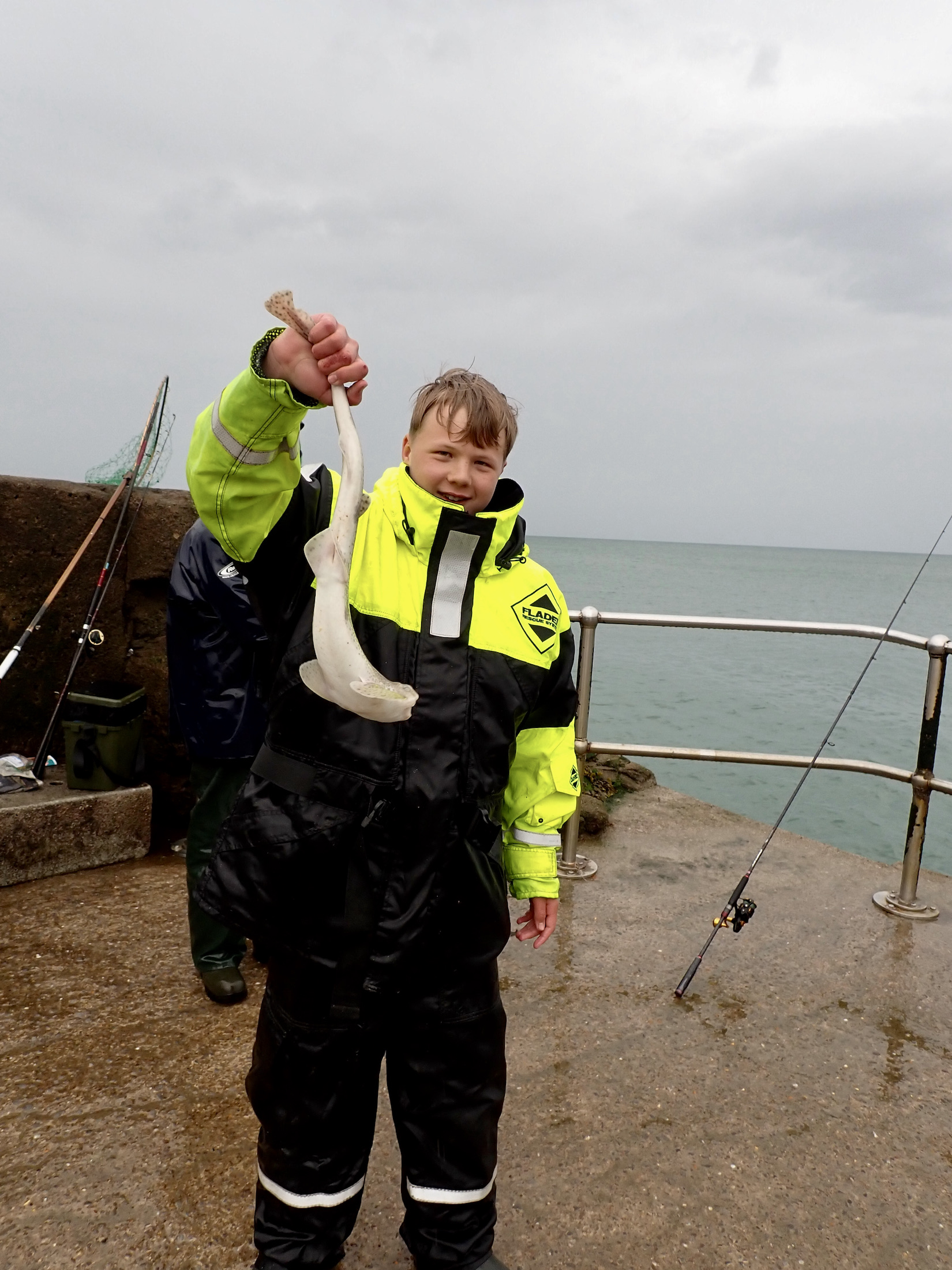
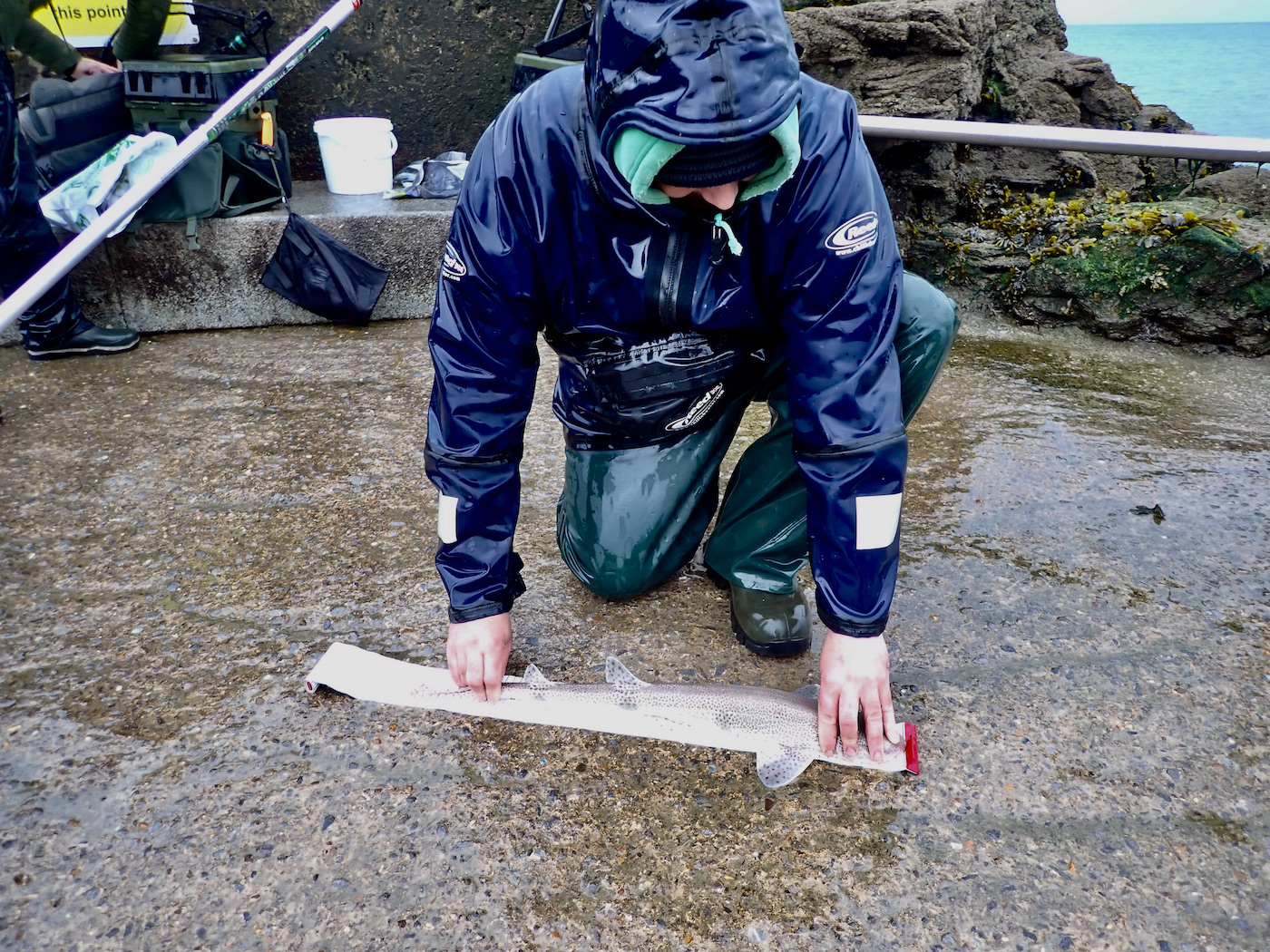
Young Solly Welch caught a number of fish adding a shore rockling to his growing species tally that includes a rare topknot and clingfish.
Andrew Laramy caught a plaice.
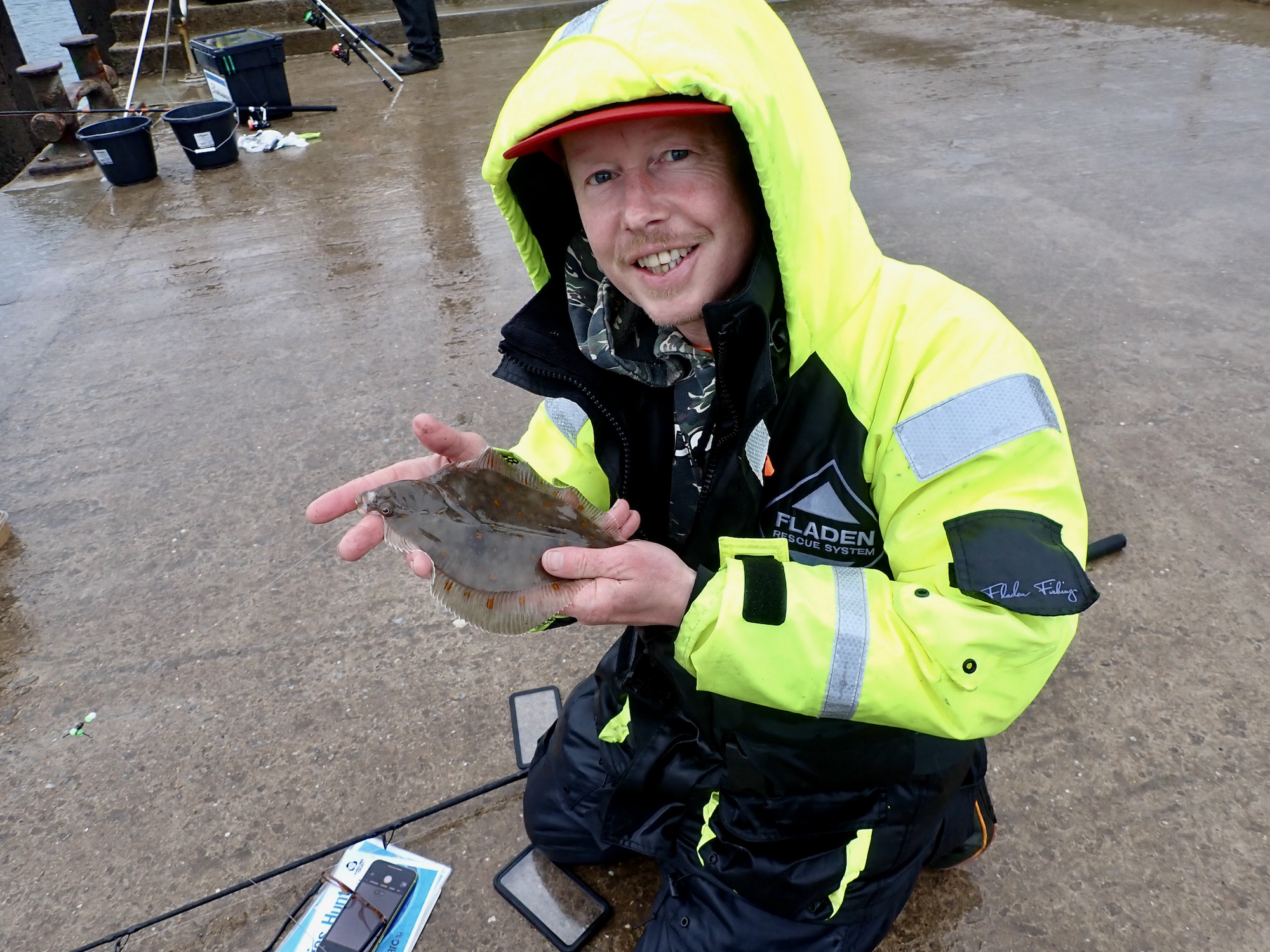
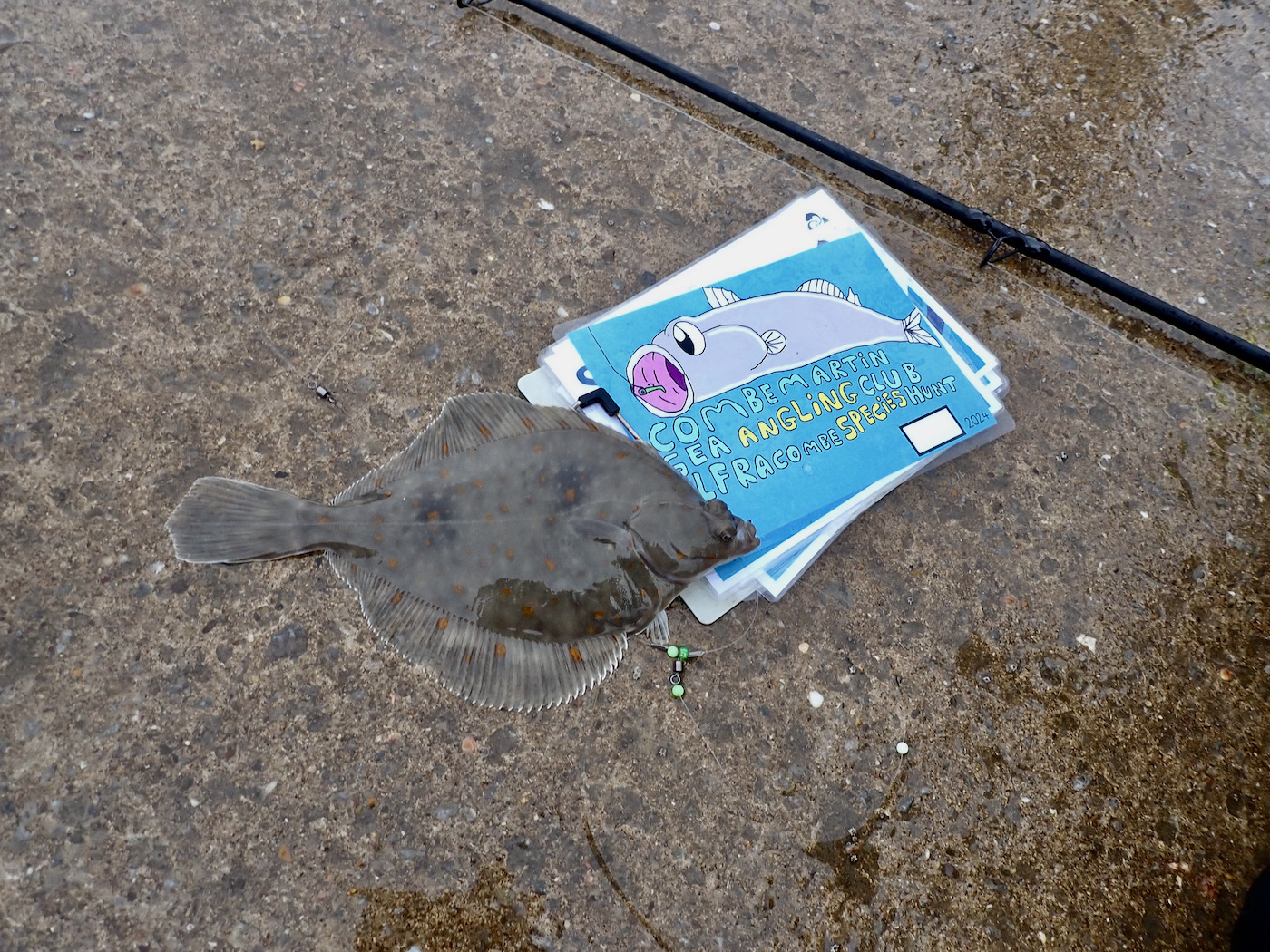
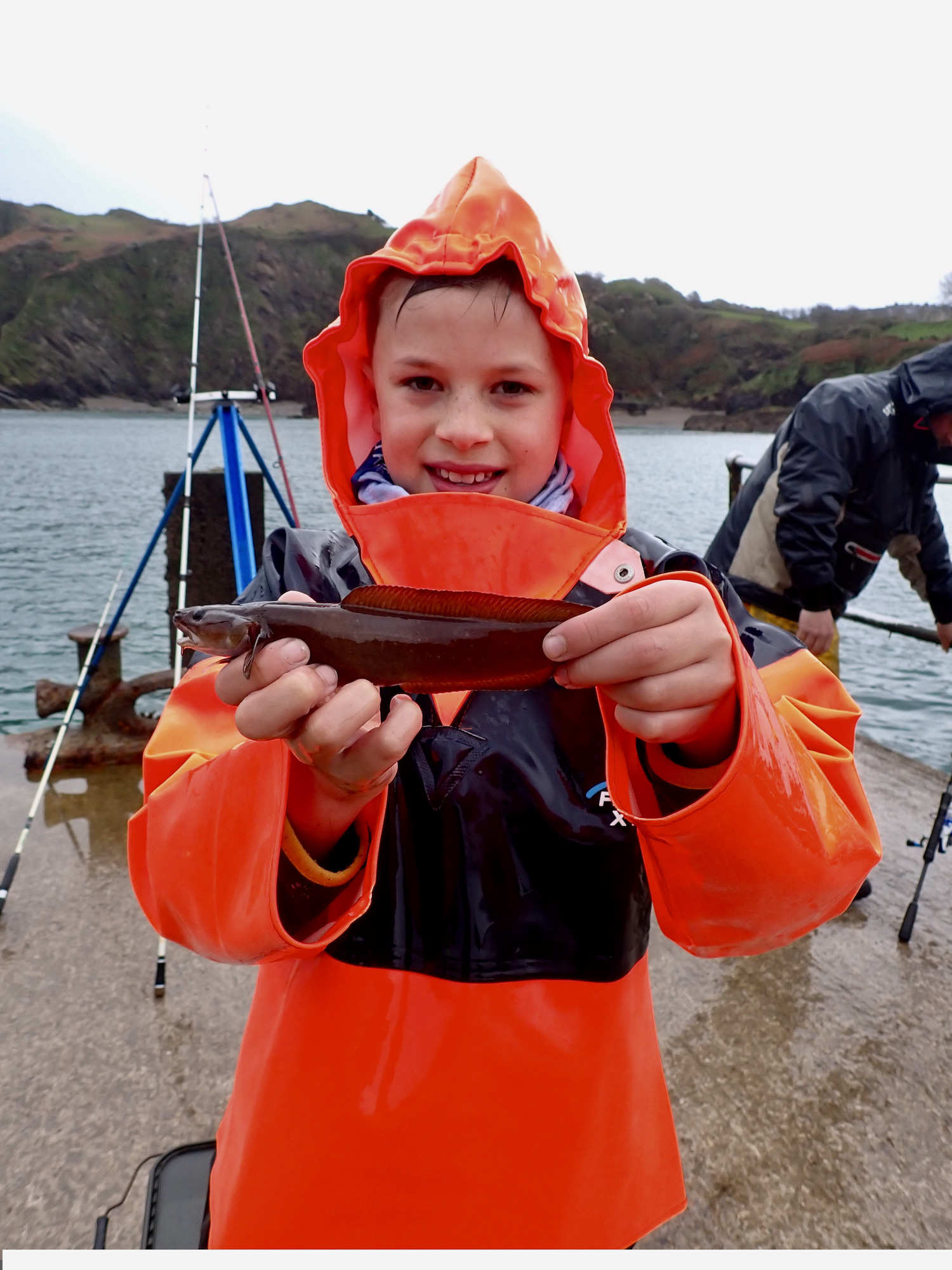
Ted Childs caught several blenny’s fishing from the Piers inner basin. Inspired by young Ted I added a common blenny to my modest tally of species.
I was pleased to add a common blenny to my tally. As the tide ebbed and the light faded the catch rate dropped and members slowly returned home to dry out.
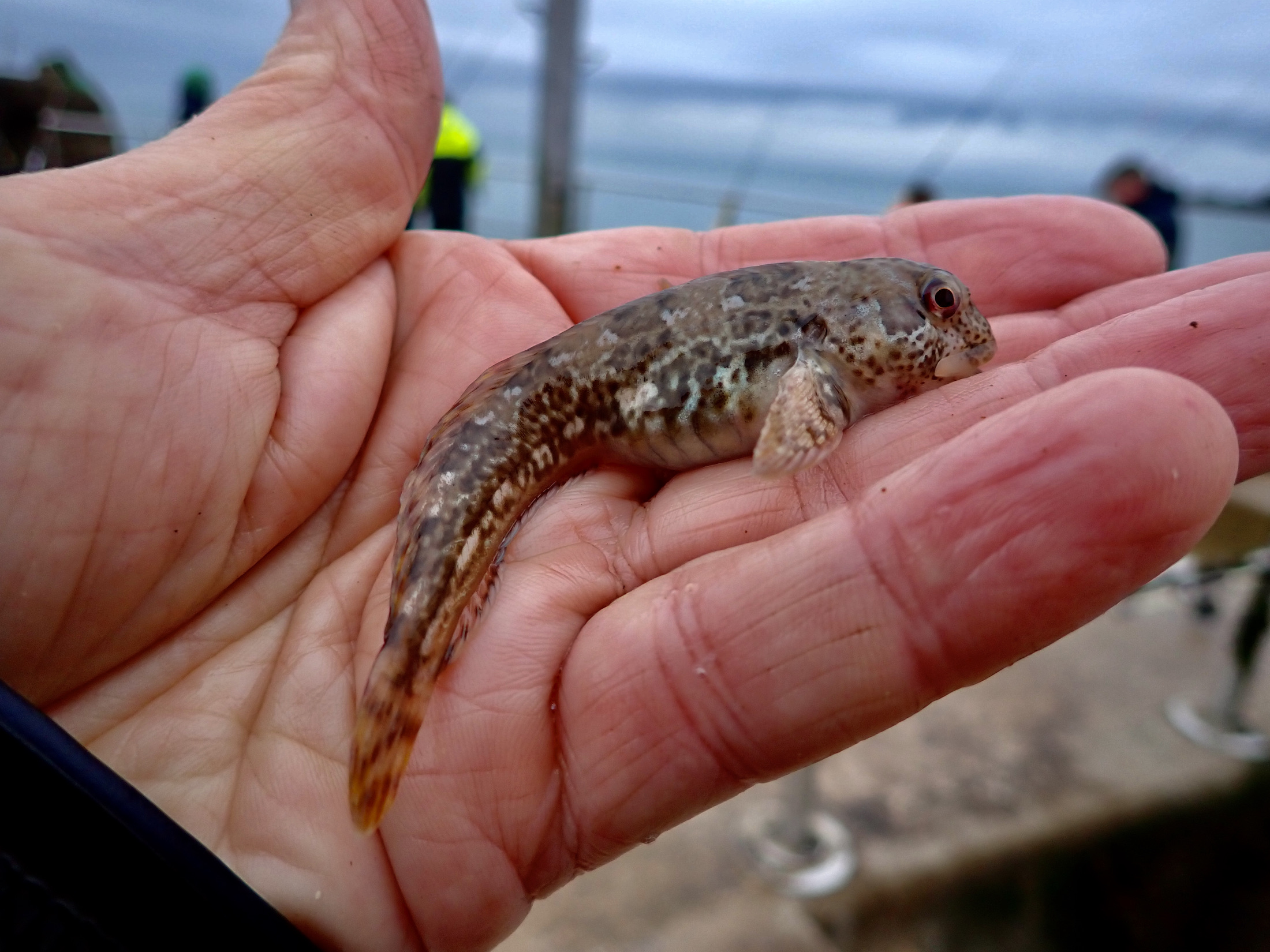
The gig rowers and Lifeboat exercise added life to the Maritime scene.
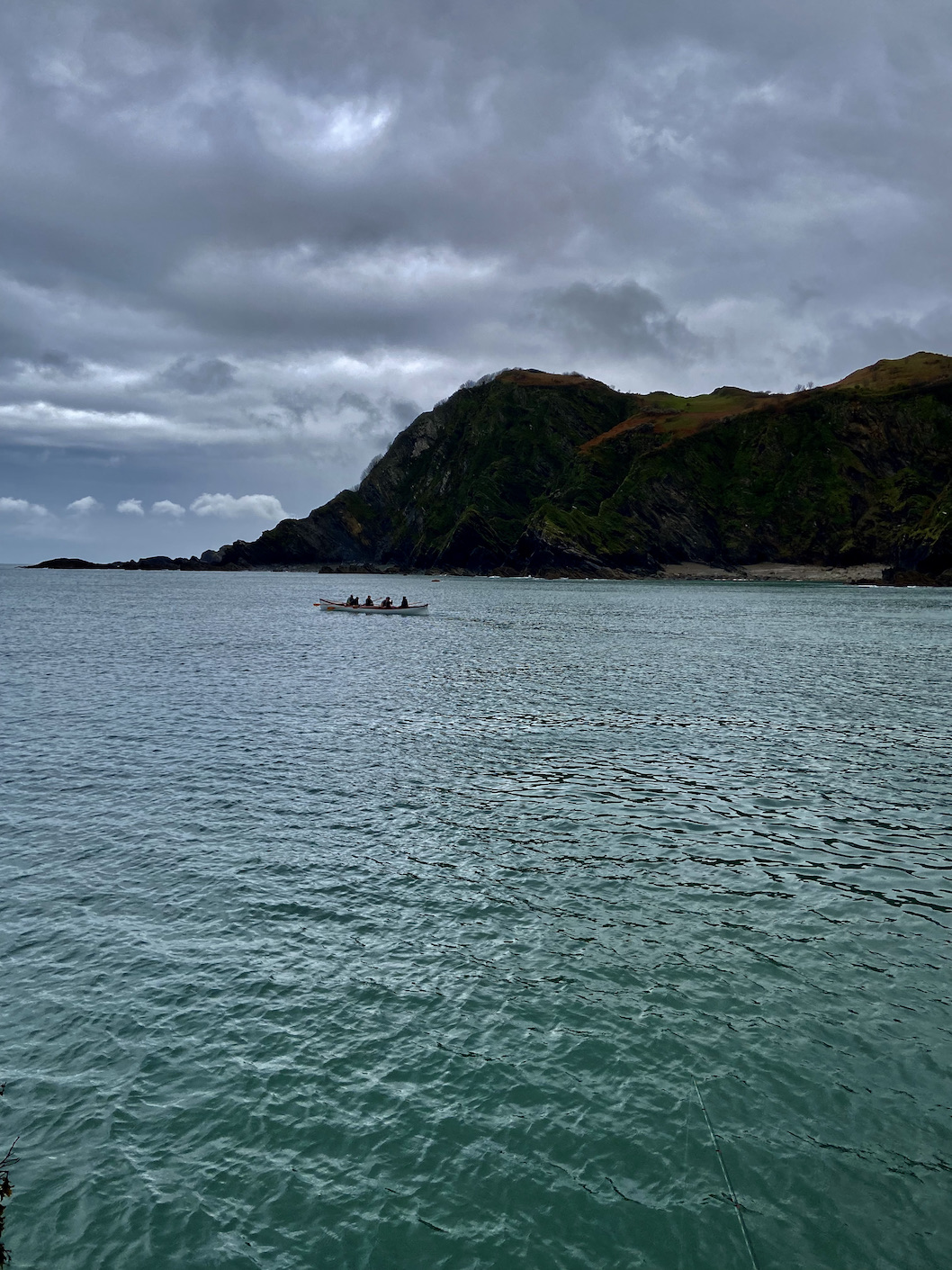
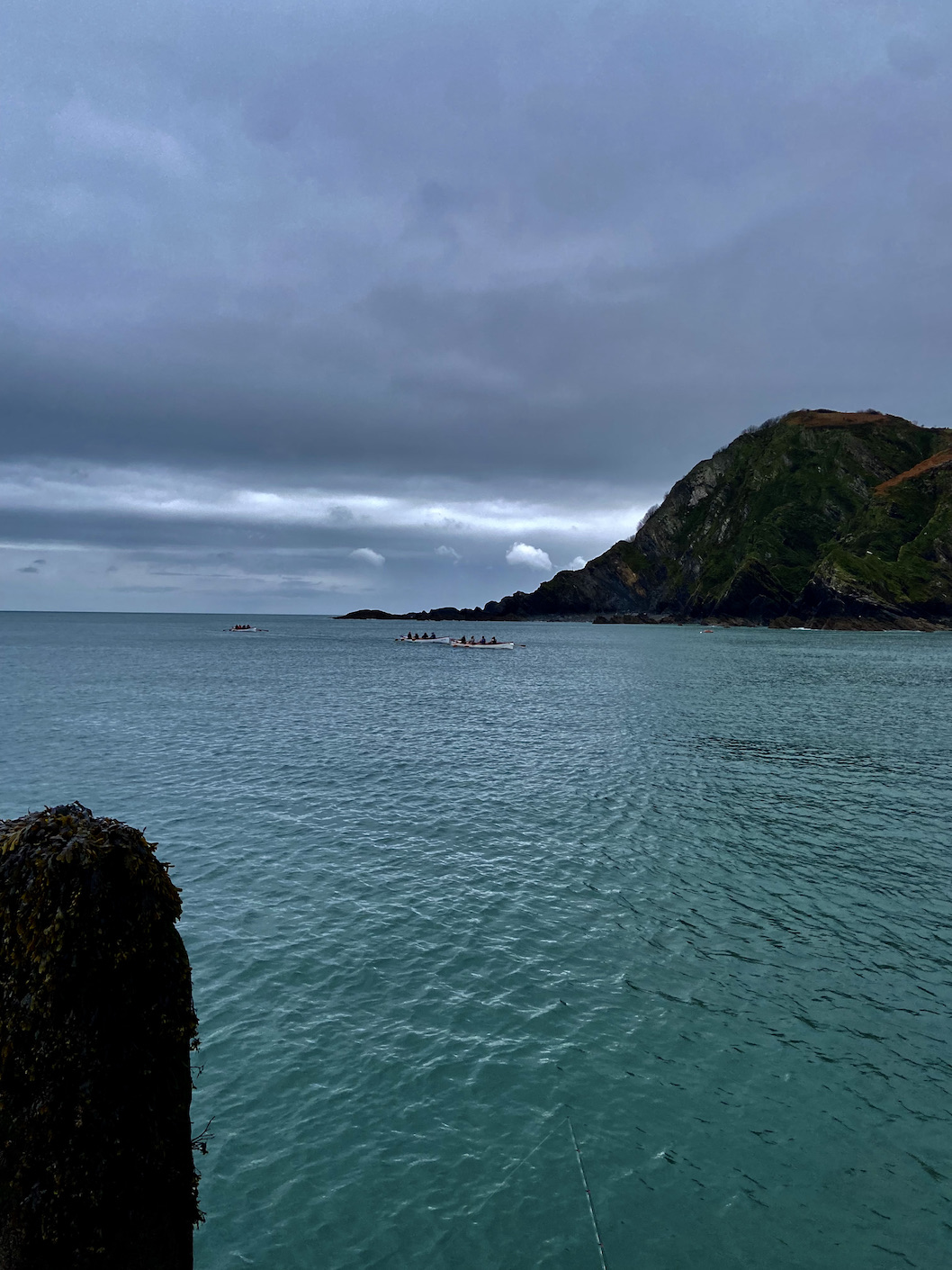
It had been an enjoyable evening and I look forward to the next event that will probably be held on a Sunday morning the plan being to alternate monthly between morning and evening.
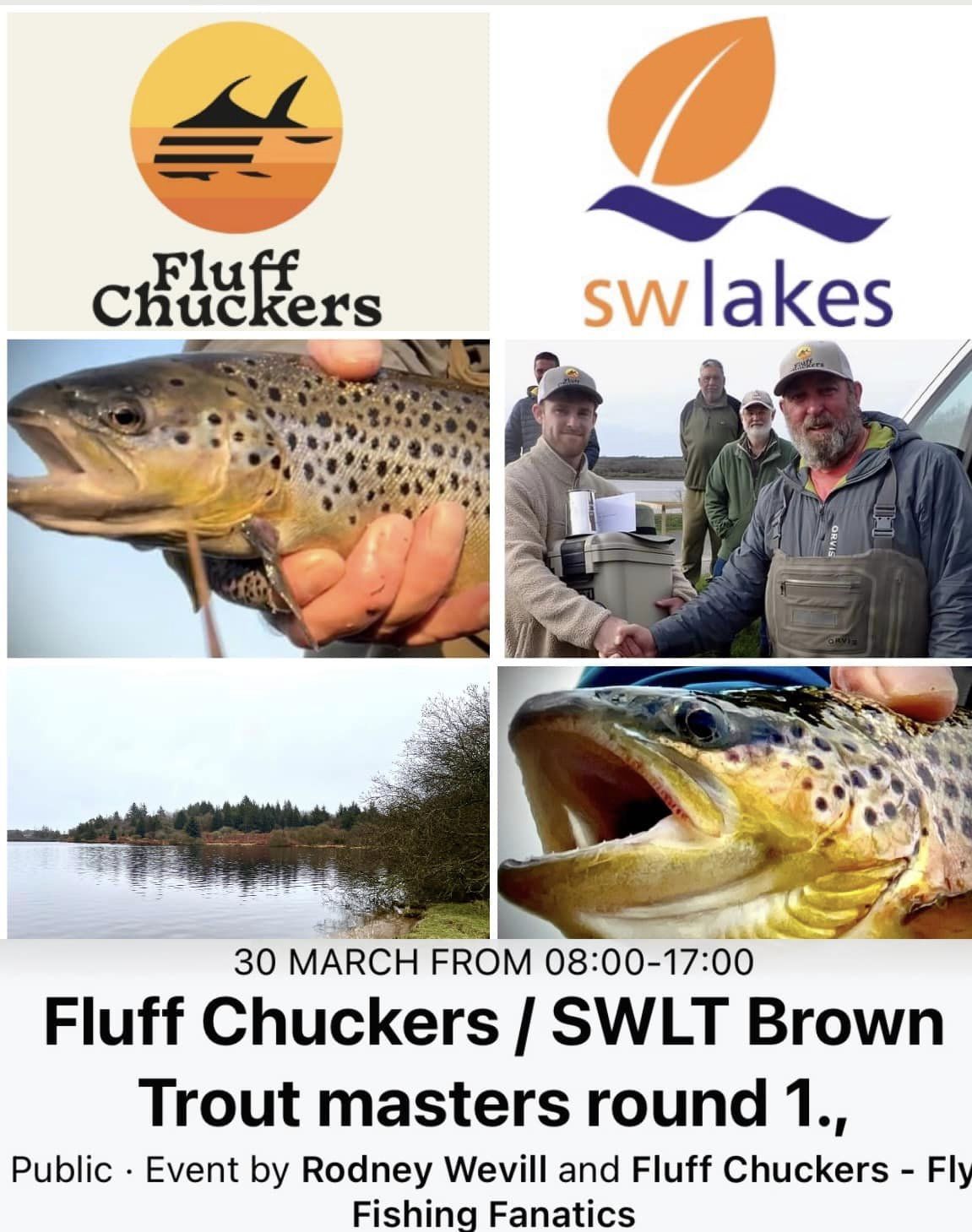
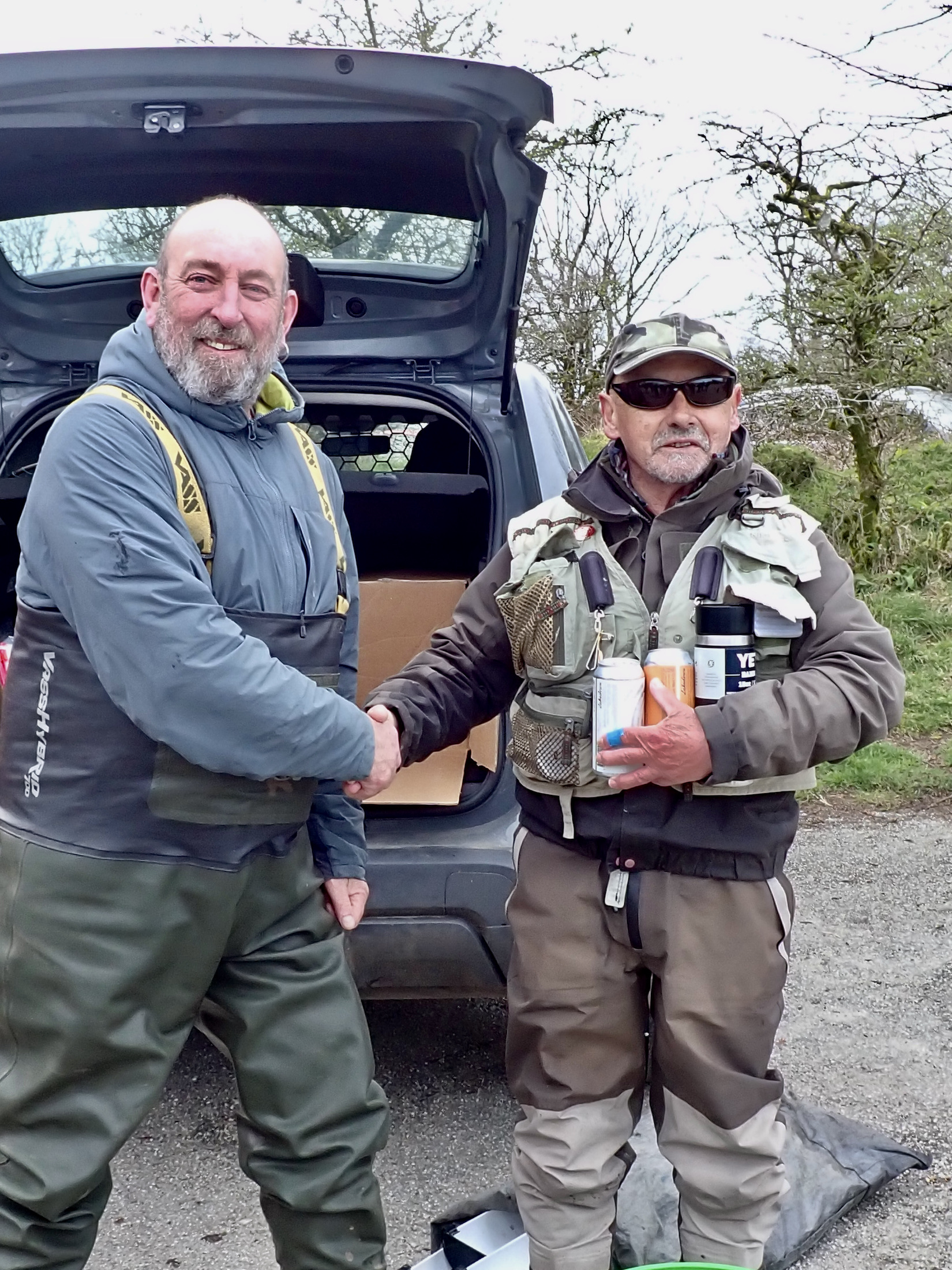
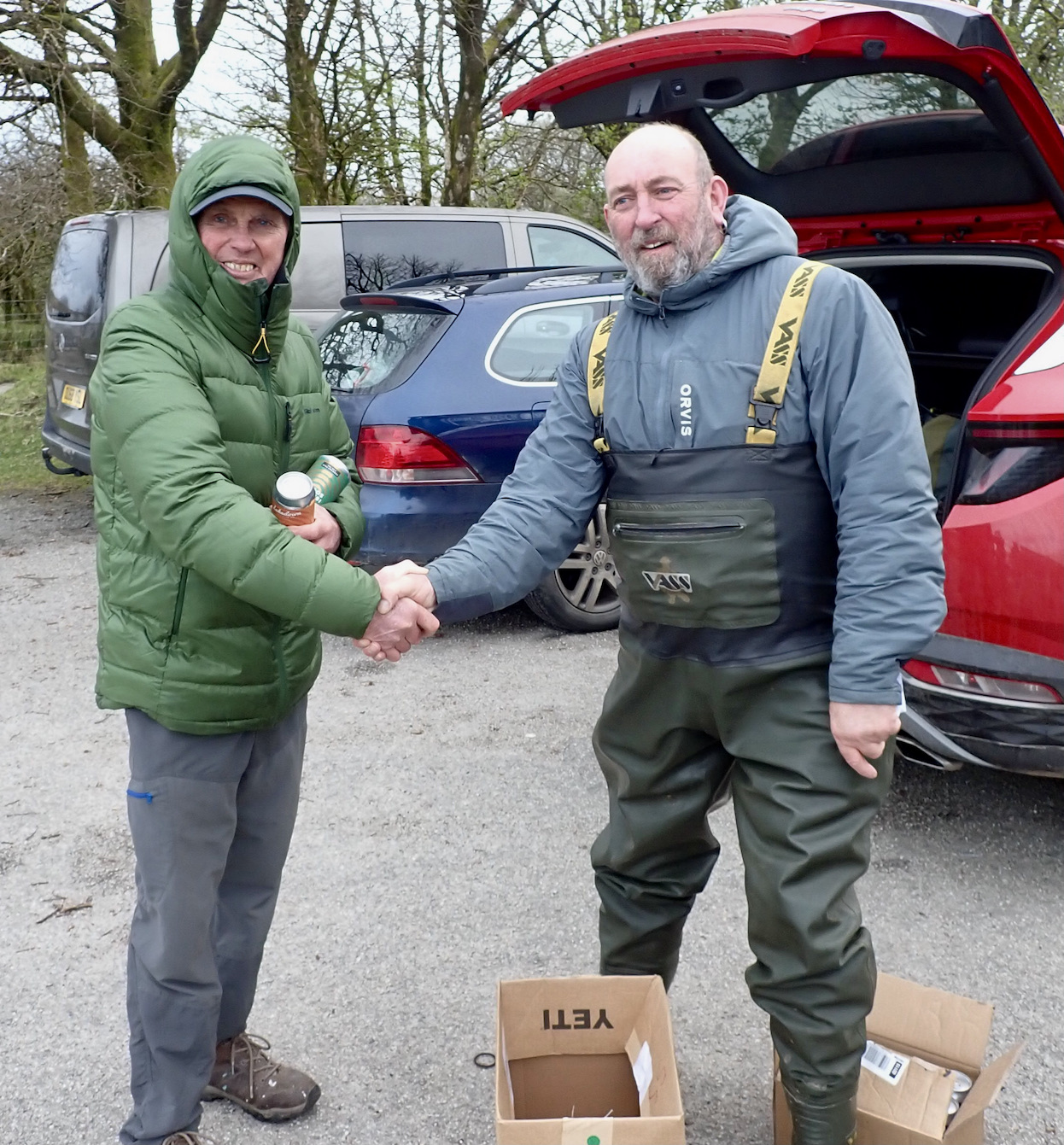
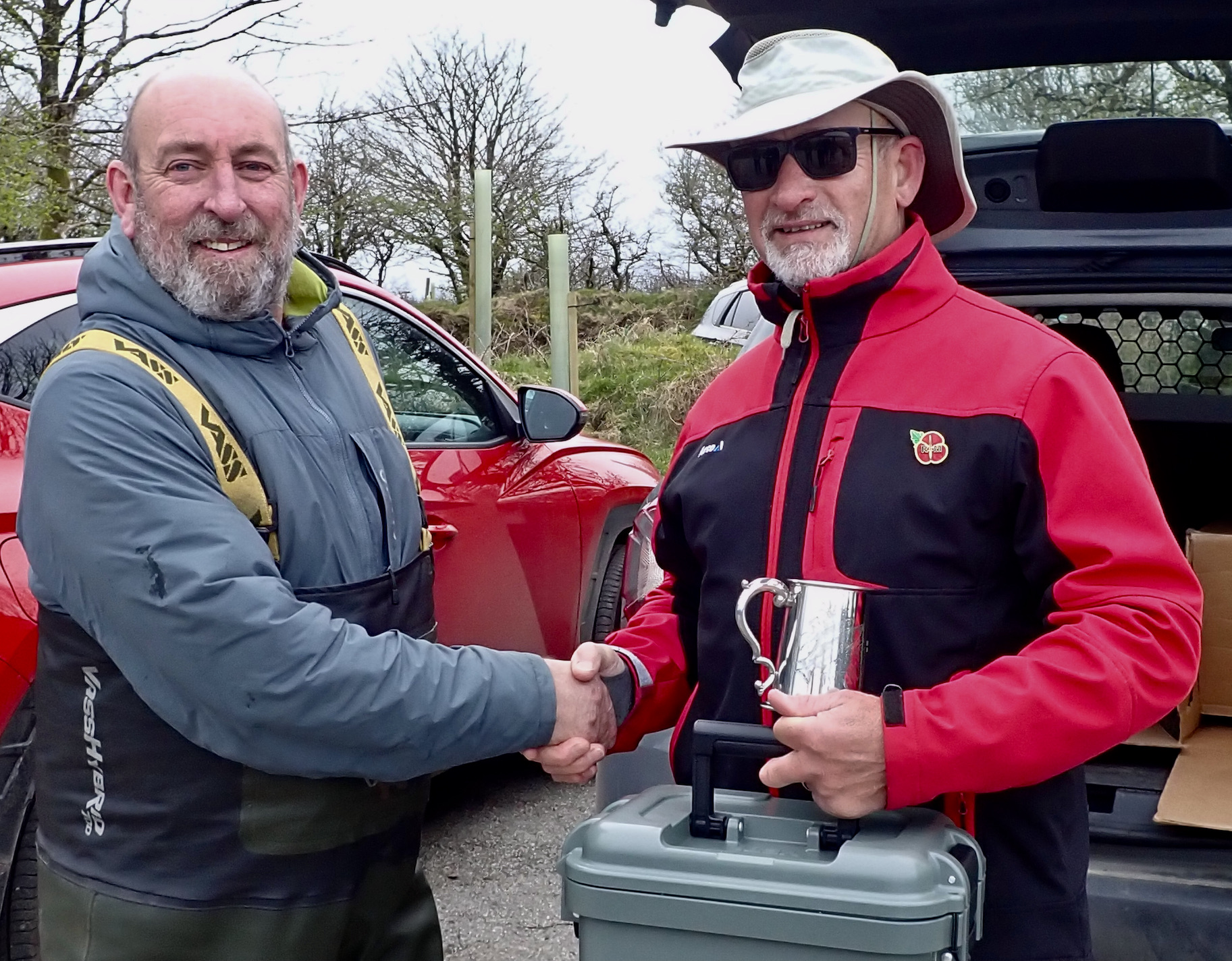
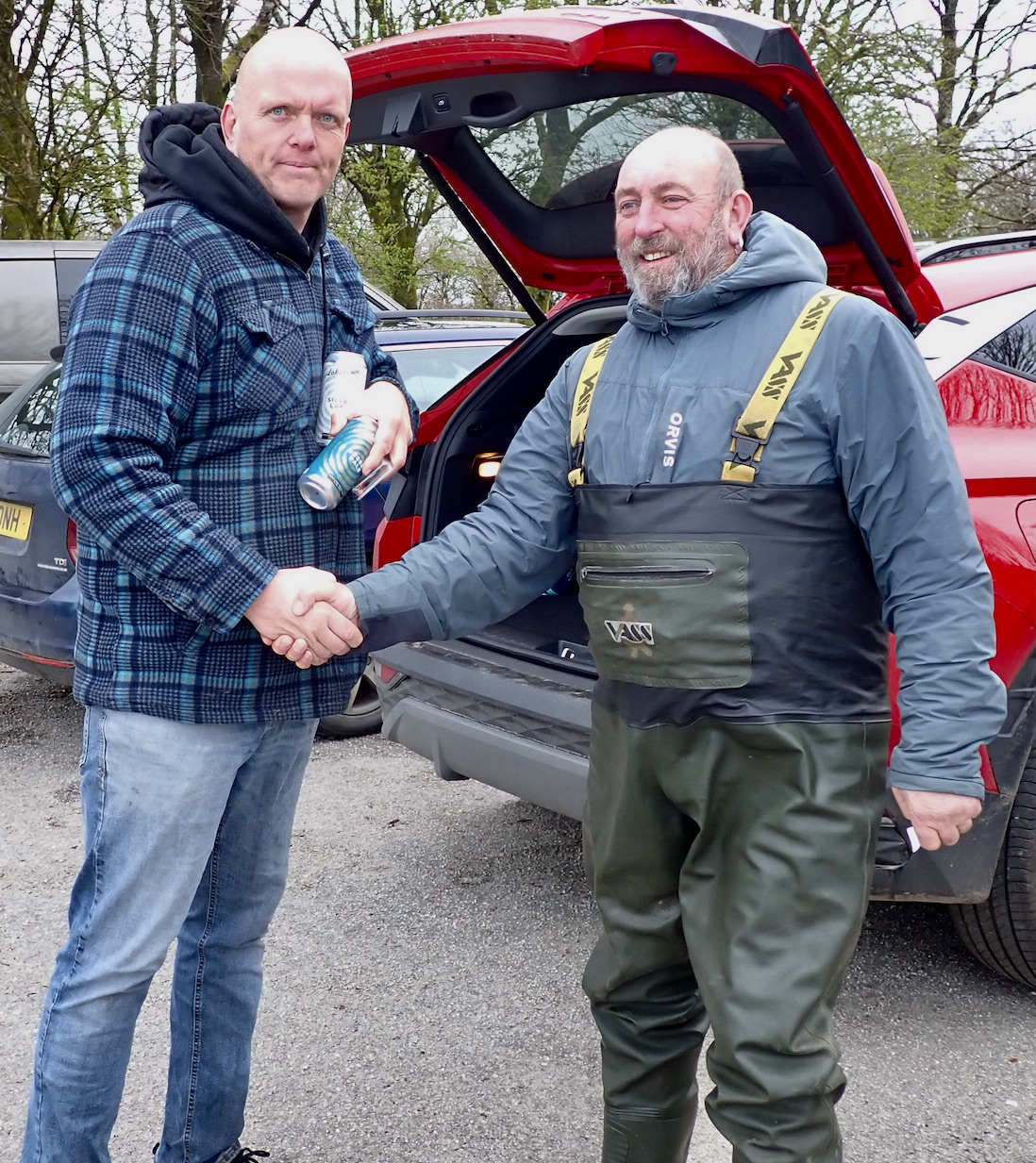
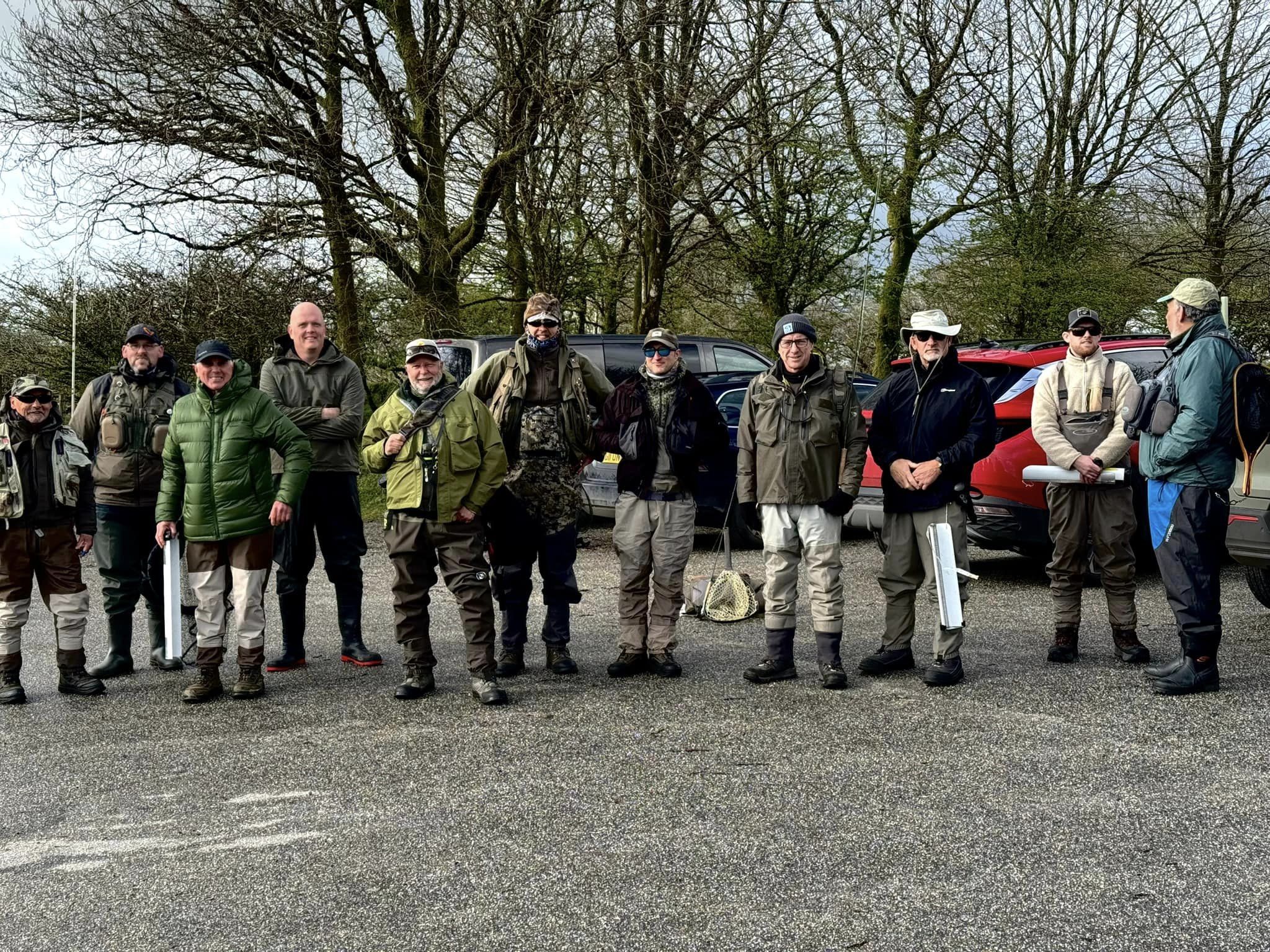
My day at Colliford – A cunning plan
Colliford Reservoir high on Bodmin Moor was the venue for the first leg of the Fluff Chucker’s and SWLT Brown Trout Masters. With a favourable weather forecast I was looking forward to a Spring day targeting the brown trout for which this venue is renowned.
I arrived at the assembly point to meet fellow Fluff Chucker’s and on stepping out of the car I was pleased that I had dressed up for temperatures were far lower than forecast. Whilst the wind was Southerly it felt particularly Baltic as the wind swept across the 900 acres of water.
The atmosphere was cheerful and friendly as angler’s swapped tales and talked of prospects for the day ahead. The rules were carefully explained by head Fluff Chucker Rodney Wevill. At 9.00am suited and booted up, the go fishing call was made and we all set off for our chosen areas.
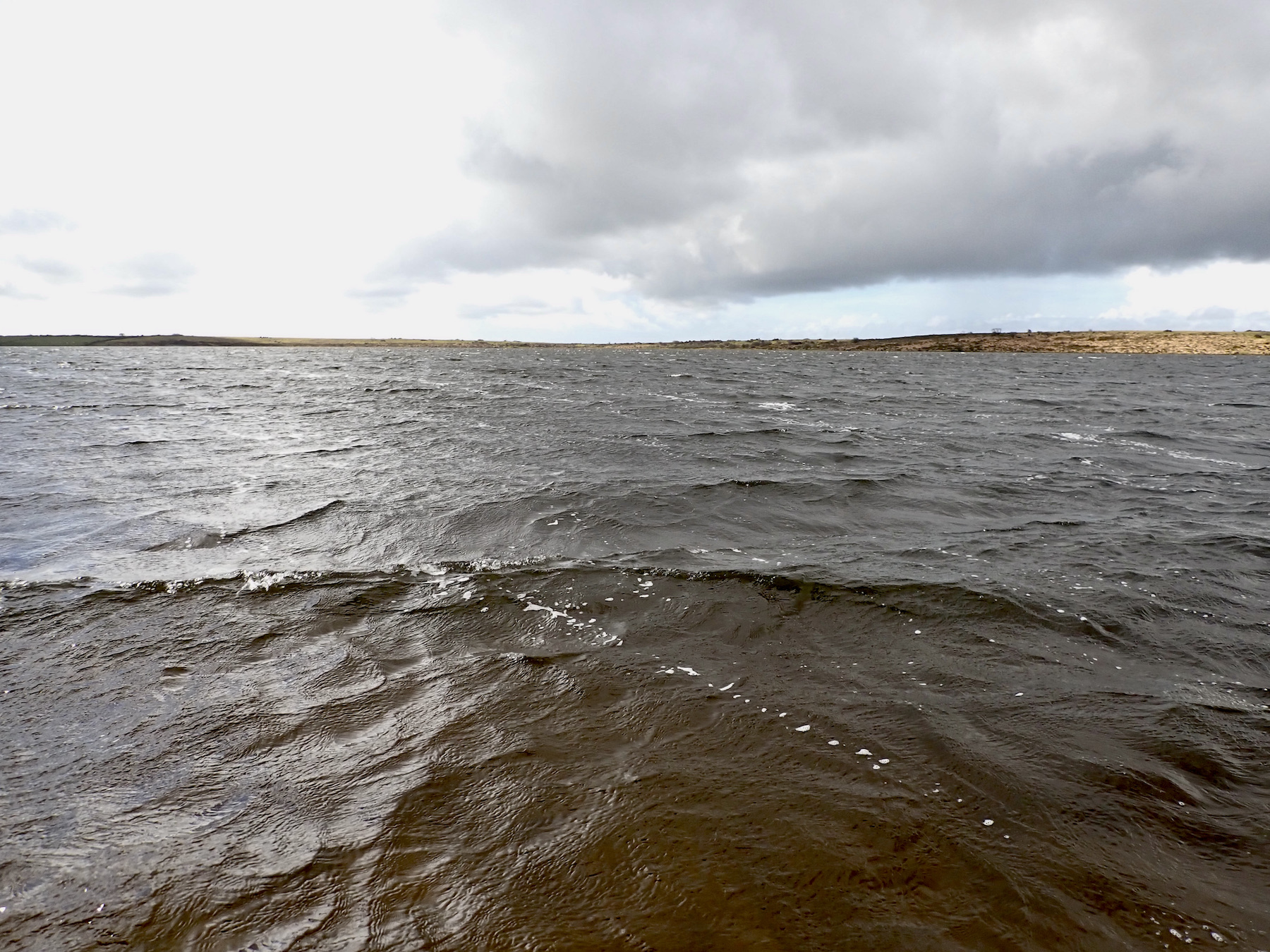
I had only fished the venue on one previous occasion so headed for the area I had fished before two years ago. Like Baldrick of Black Adder fame I had a cunning plan! Basically I would wander the shoreline casting a black woolly bugger on the point and a small black spider on the dropper. I would cast and take a step covering plenty of water.
I had every confidence in my cunning plan and persisted throughout the morning. After two hours I had not had a pull but surely persistence would pay off? Dark clouds crept ominously closer and the chill wind showed no sign of relenting. An angler fishing further along the bank caught a trout which gave me hope but also made me wonder if my lack of success was unique to me?
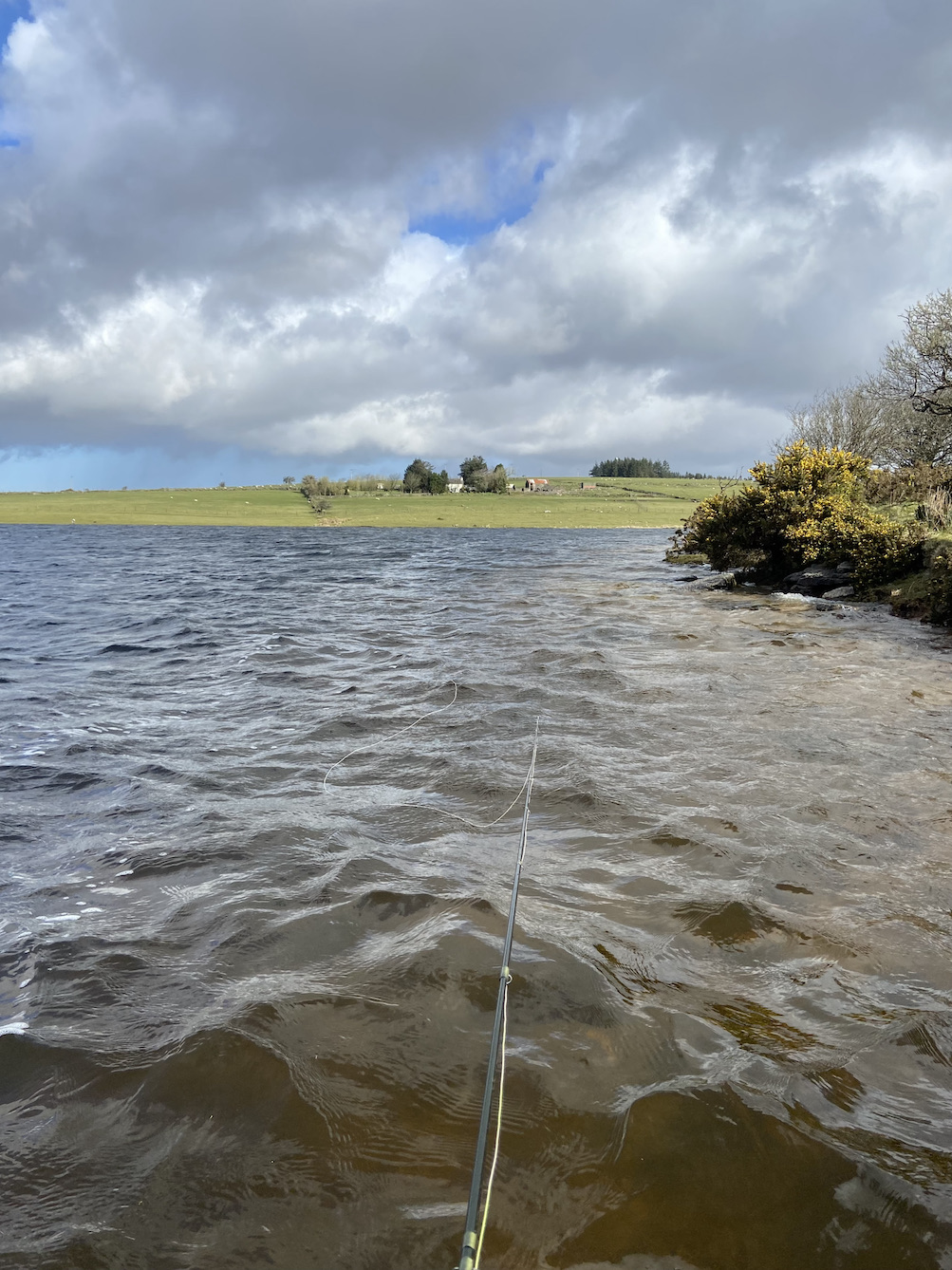
As heavy rain started to fall I thought of breaking for a drink and snack but all thoughts of this were put on hold as the line zipped tight and a lovely brown trout gave a pleasing account before slipping into the waiting net. After slipping the hook out and recording the fish I resumed fishing confidence fully restored. A few casts later and a savage tug a big swirl at the fly. Looked like a good fish and a chance gone. I fished on down through the bay and then retraced my steps fishing over the successful section again.
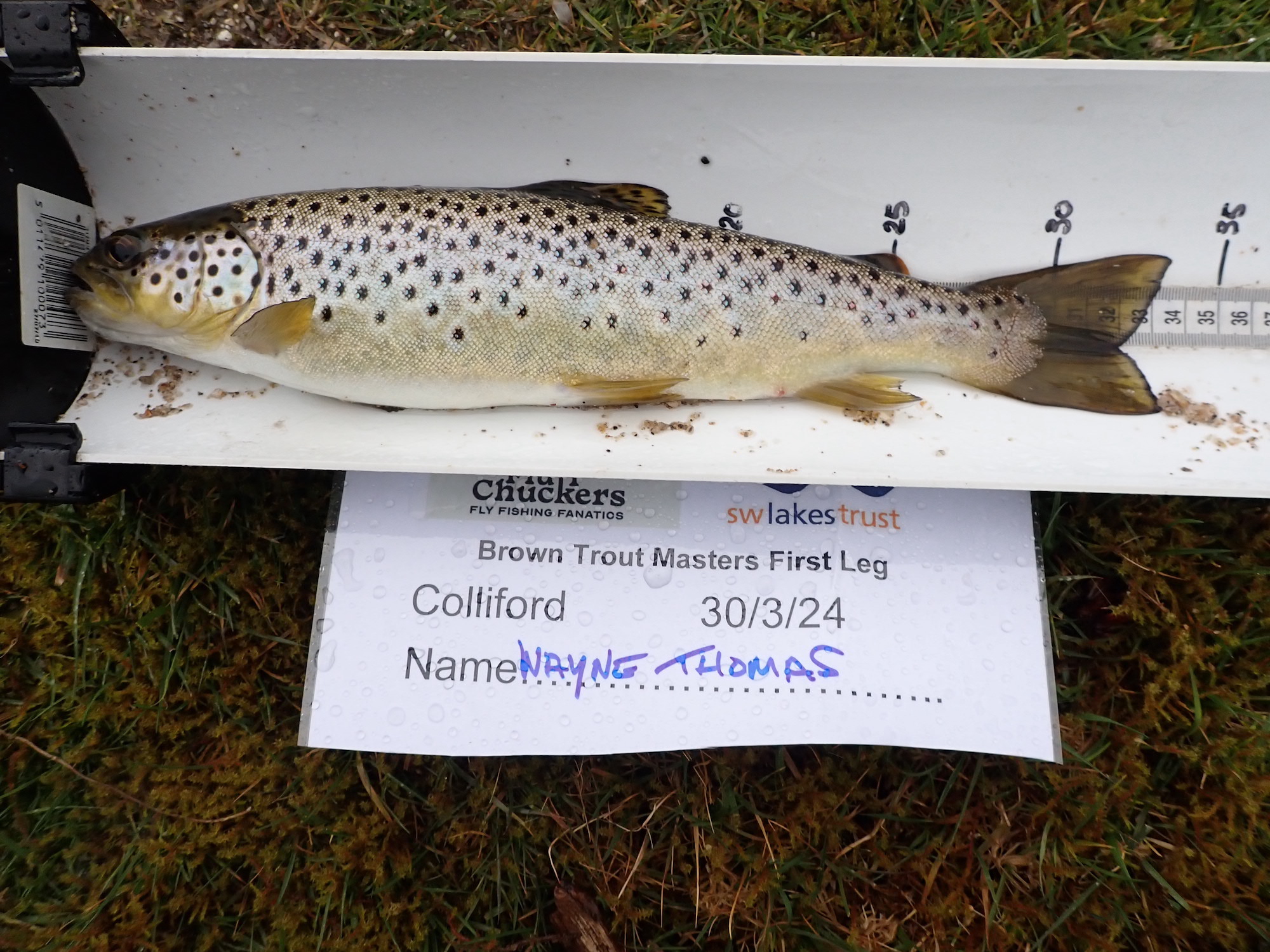
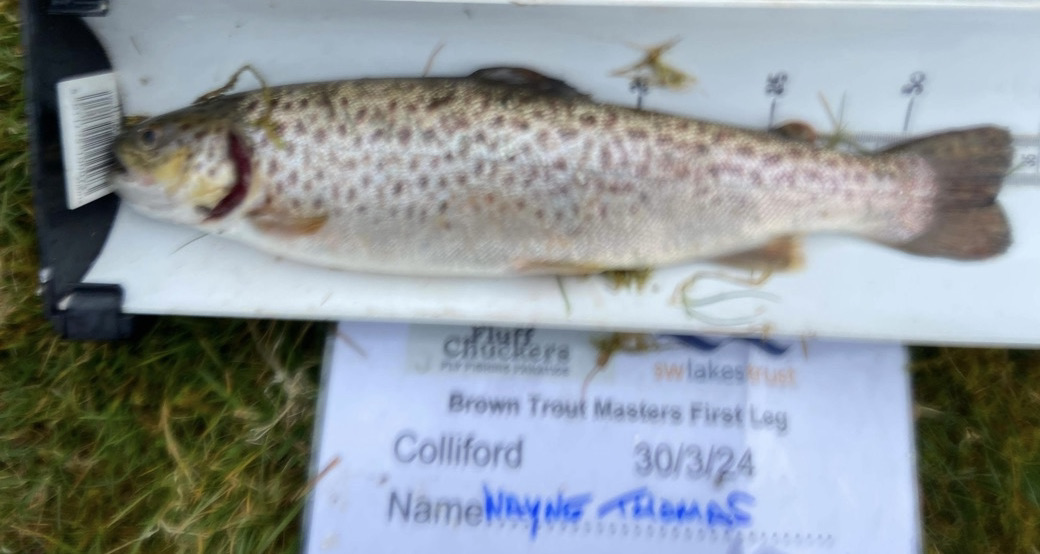
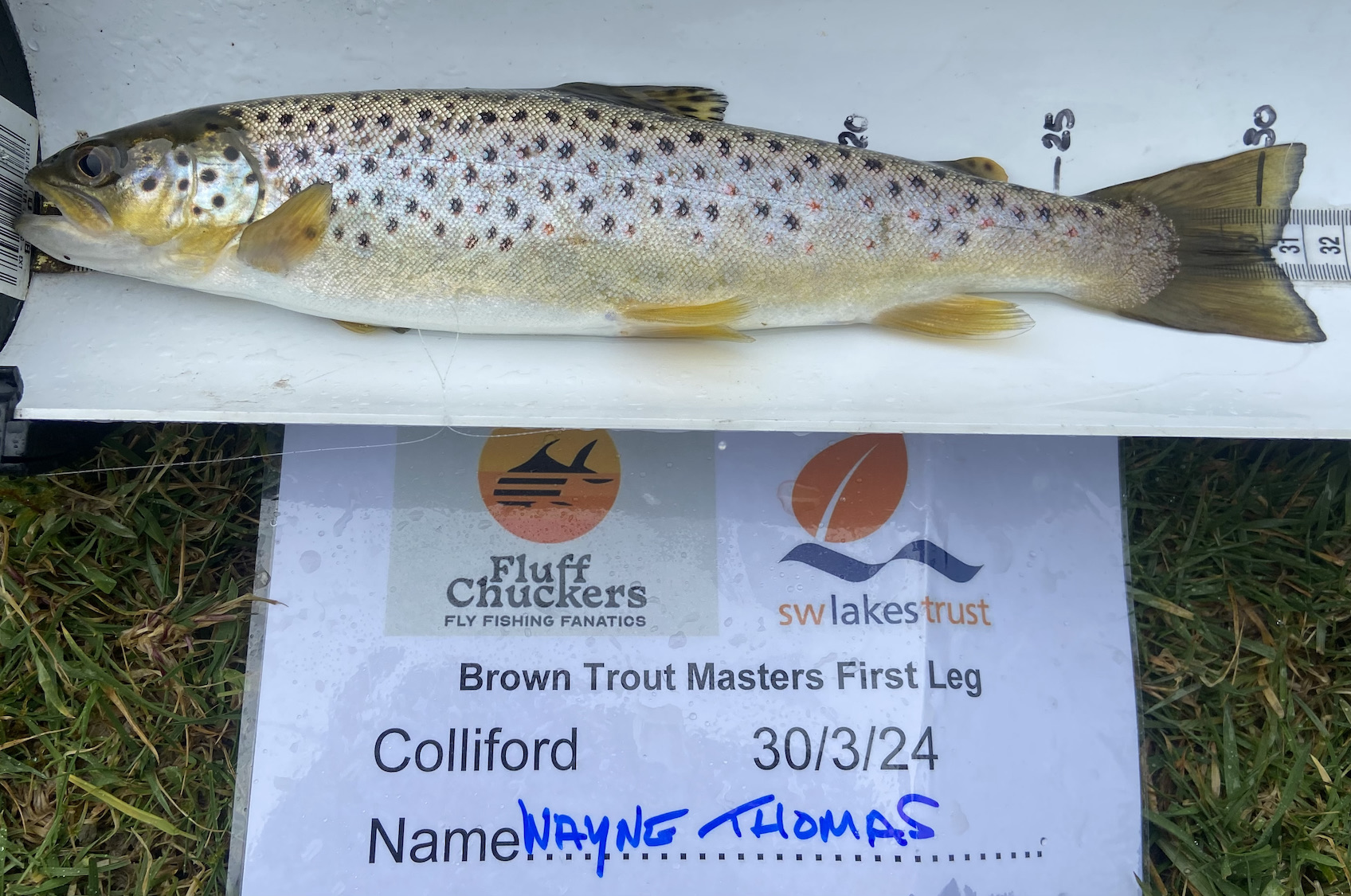
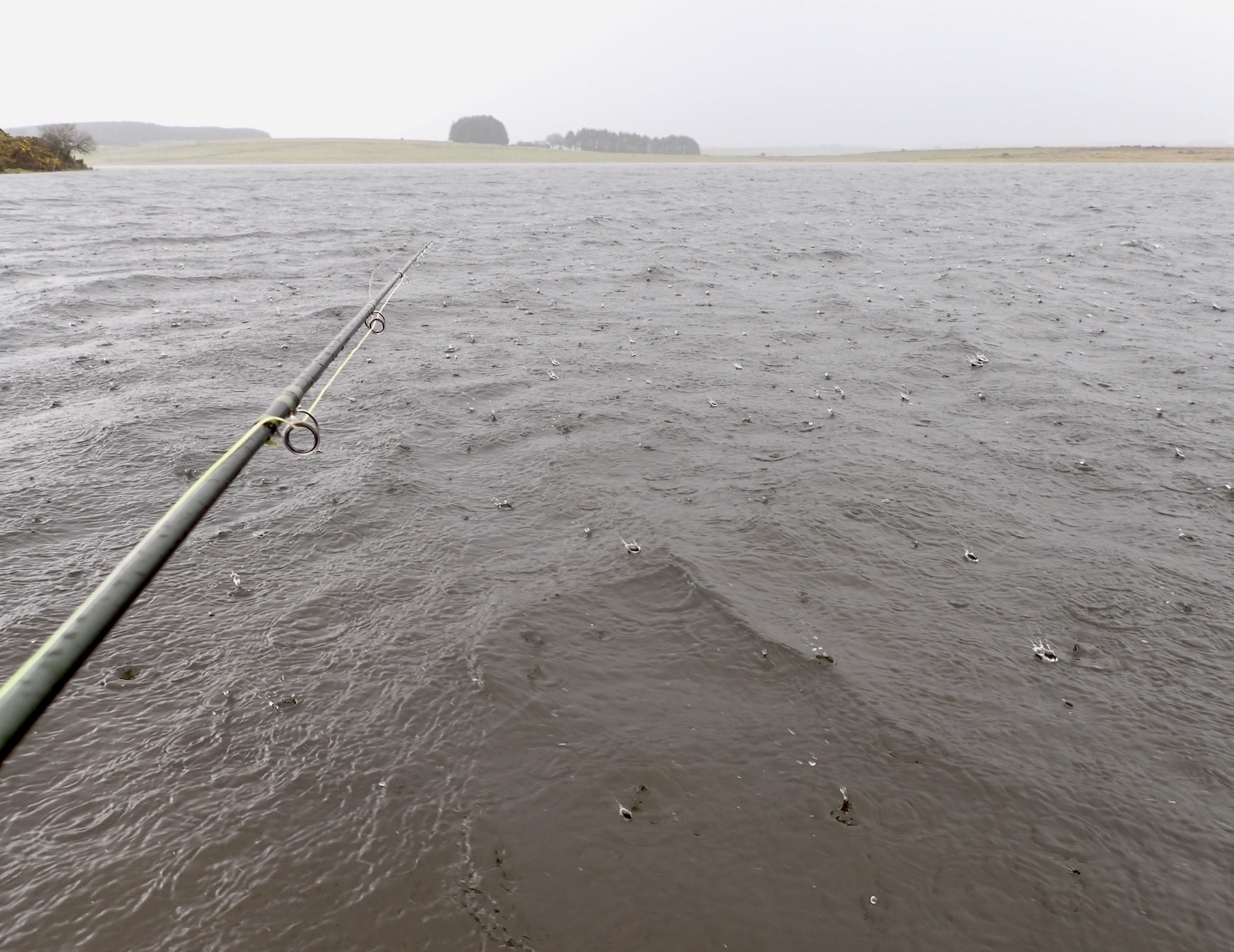
Two more trout followed in the next twenty minutes before all seemed to go quiet. I decided to try a new area and walked to a new section of bank. After half a dozen casts I hooked another trout that came off after 30 seconds.
With a few hours left in the day I decided to try the hotspot one more time before working my way slowly back to where I had started the day. I bumped into a couple of fellow fluff chucker’s on route and compared notes to find that whilst most had caught no one seemed to have bagged up big time.
The cold wind persisted but at least the cold rain had stopped falling. I heard sky-larks song drifting in the breeze. I looked out for early spring migrants hoping to see my first swallow or sand martin but the skies remained devoid of these harbingers of Spring and summer. At least the lake was brim full after an exceptionally wet winter.
I found some quieter water at the top of the lake and climbed out onto an old bank that allowed a nice long cast parallel to the reed fringed shore line. A trout rose within casting range and I instinctively changed my tip fly to a small tungsten headed black spider.
The cast landed perfectly and within seconds of touching down the line zipped tight and there was a boil on the surface. B***er another chance gone.
I fished on for the next half an hour without a pull and eventually called it a day with a couple of minutes before competition end.
I walked back to see what had been caught and found that I had done Ok. A couple of big trout had been tempted the best a beauty of 44cm. Venue regular Roger Truscott recorded twelve browns and had been favourite to win from the start.
Reflecting on my day I was pleased to finish third one more fish would have resulted in runner up spot. I should perhaps have persisted in the area I had caught in but the general consensus seems to be that roving works best. A classic case of should I stay or should I go?
I reality it really doesn’t matter for I had enjoyed the day immensely despite the cold wind and chilled fingers. I look forward to heat two in June when it will surely be warmer?
Many thanks to Rodney Wevill for all his efforts in putting the series together and of course to SWLT, Yeti, Lakedown Brewing co and for their generous support.
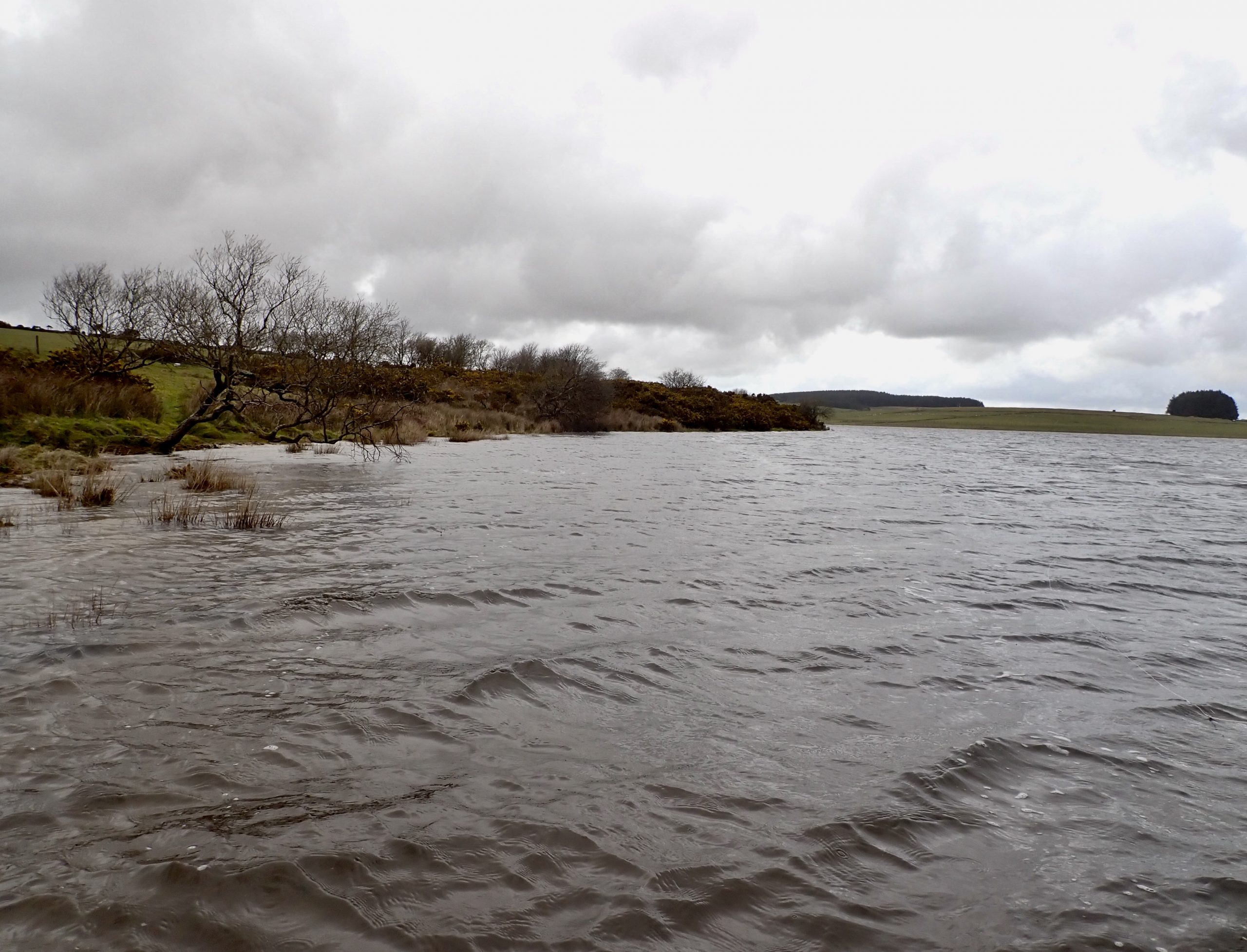
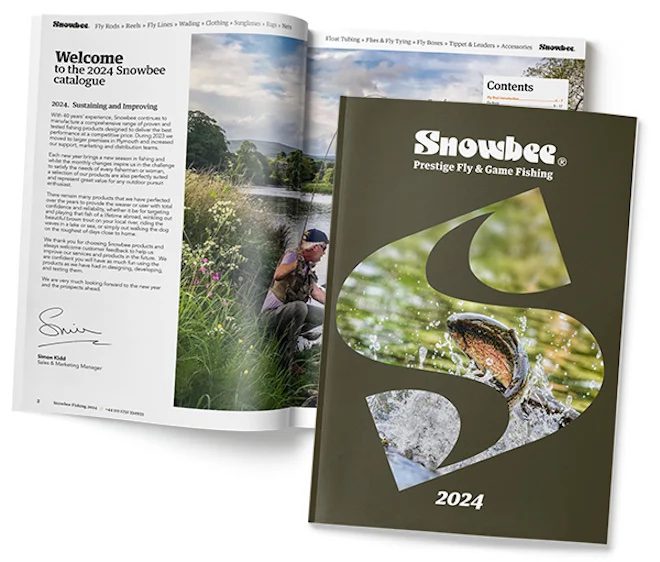
Announcement

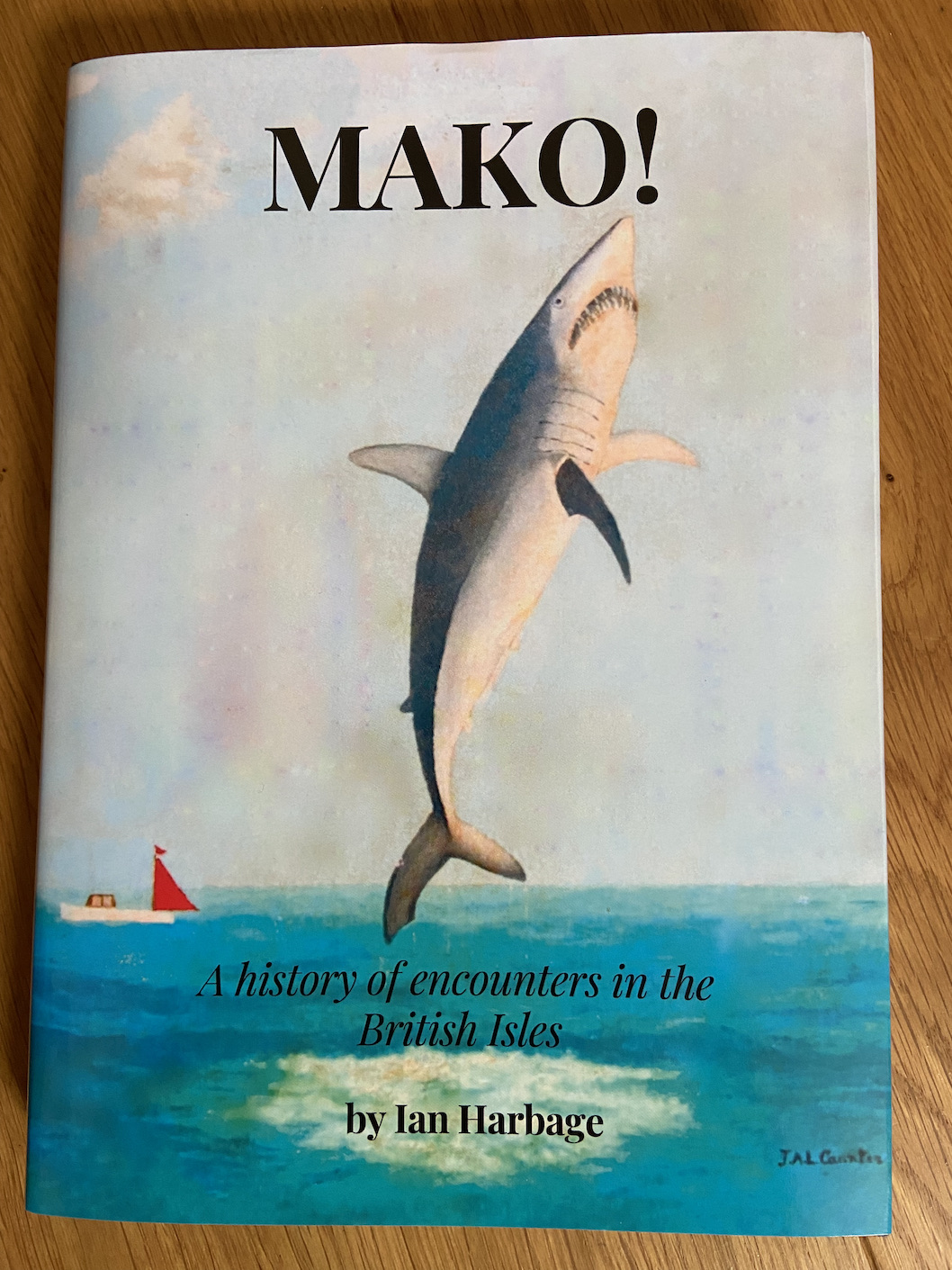
The book Mako! A History of encounters in the British Isles; has been a labour of love for Ian Harbage, Vice Chairman of the Shark Angling Club of Great Britain.
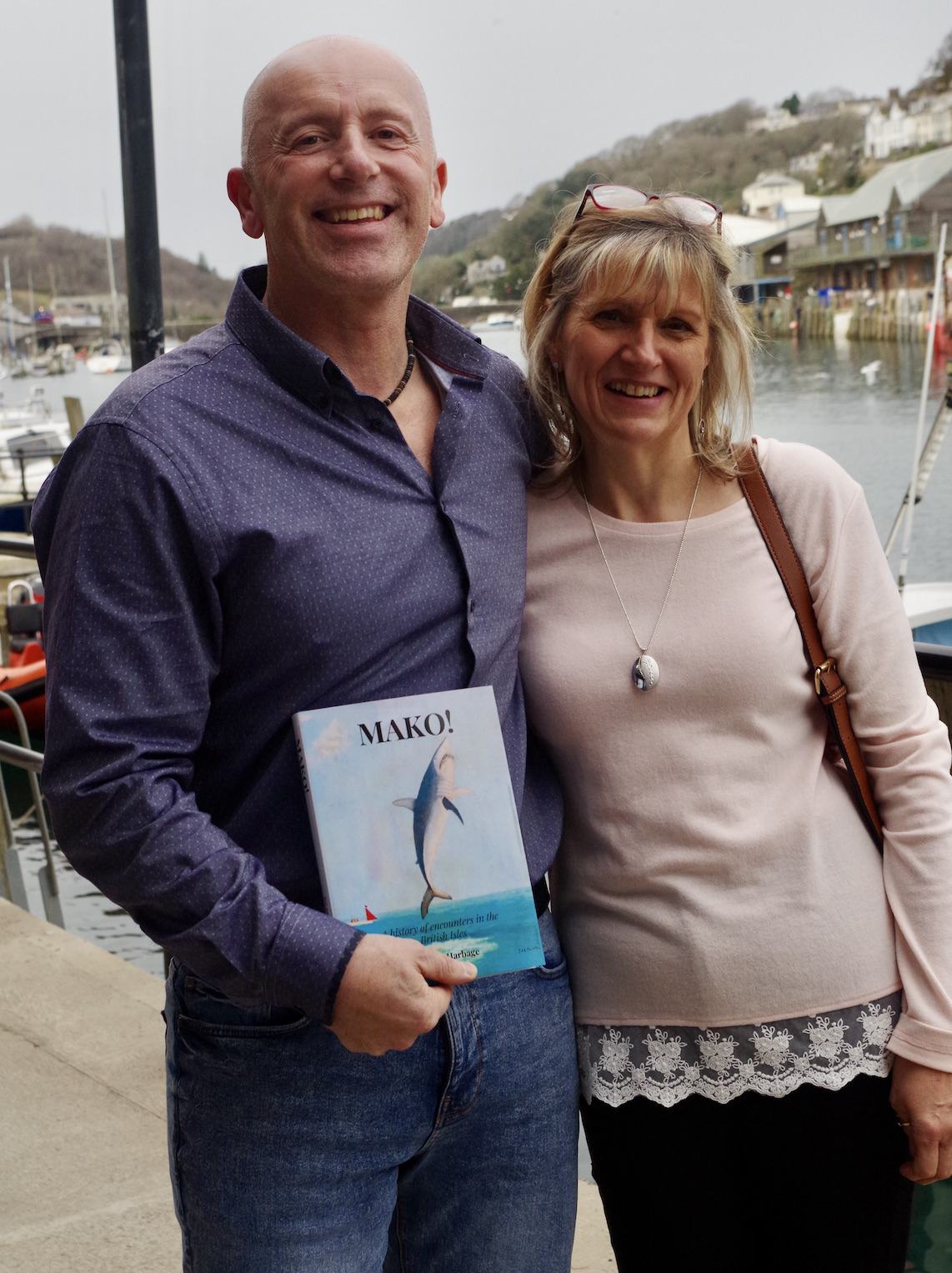
Ian Harbage first visited Looe as a six year old boy in 1975 and like many young children of the time was fascinated by the daily weighing of shark at the SACGB’s weighing station on East Looe Quay. Back then conservation was certainly not on the agenda and the shark mostly blues were slaughtered to be hung up, their carcasses dripping blood as their captors posed proudly for a picture. In 1975 the big movie at the cinema was “Jaws”, a film that portrayed sharks as ferocious killing machines. A young Ian was captivated during that decade and like many of that generation saw captain Quint the shark hunter as a true hero.
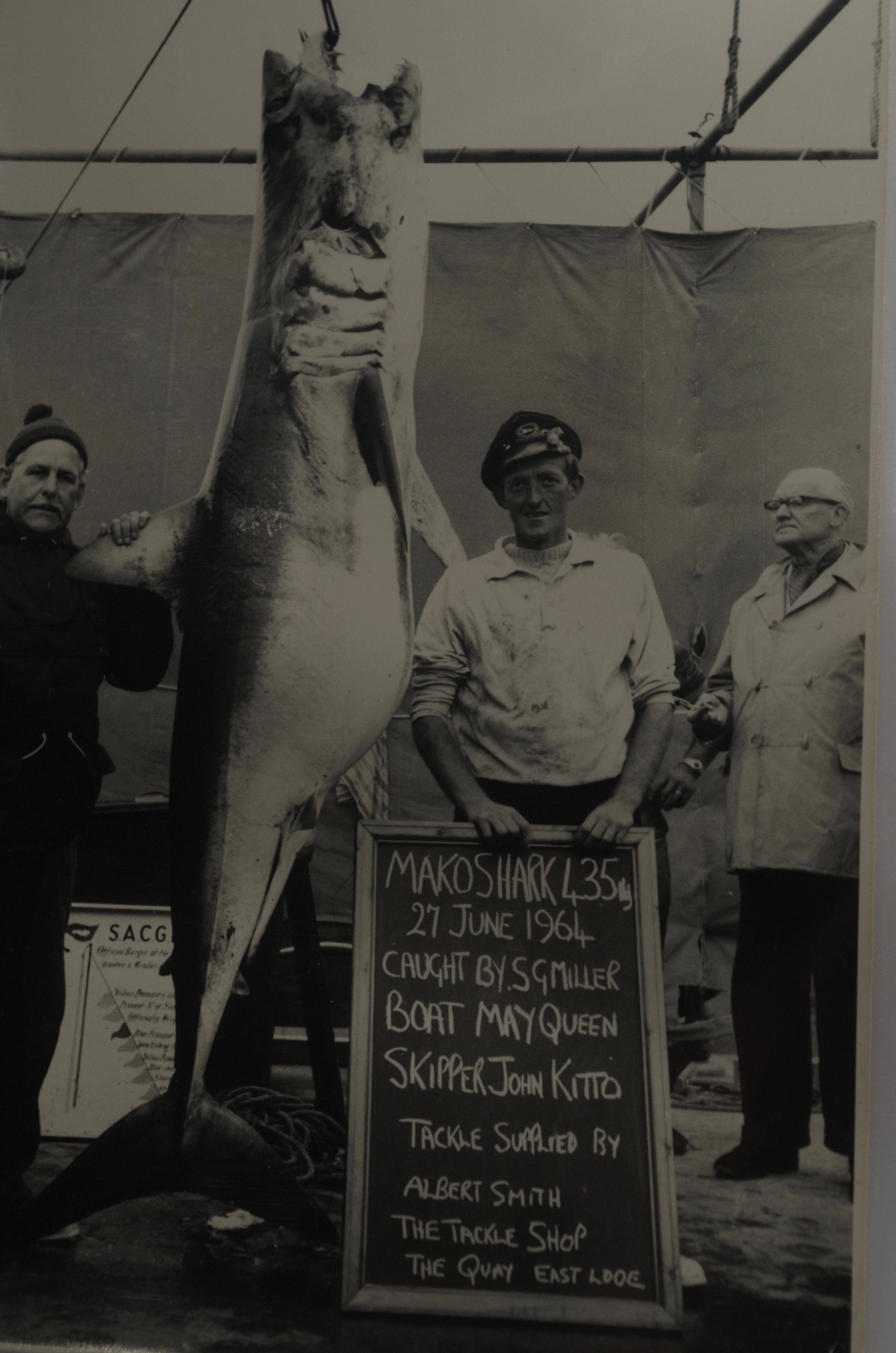
Fortunately close to fifty years on shark angling has modified its ways and is now focussed upon conservation with all shark released at the side of the boat. Tackle has been refined to reduce damage to the shark and valuable data is recorded to increase scientific knowledge of shark migrations across vast oceans.
Ian’s book is a fascinating tome that records the history of mako shark captures in the British Isles. Ninety-eight mako shark are recorded in the book a culmination of many years of detective work with many anglers and skippers interviewed their exciting tales retold and captured in this superb book.
Entwined within the tales of these mighty fish are glimpses of salty characters who oozed charisma and loved life upon the sea.
Ian was encouraged to write the book after meeting the Armishaw family who have been publishing fine angling books for several decades. Lee Armishaw of Watersmeet Publications gave his full backing to Ian to write the book after learning of the vast amount of knowledge Ian had gathered during a fifty year obsession with shark and in particular mako.
The book was appropriately launched at the Heritage Centre in Looe on Sunday, March 24th 2024. Pauline and I joined a room full of readers keen to receive their copies of this long awaited book. Ian took centre stage telling of how he had written the book his passion for the work evident for all to see. He read a fascinating and humorous chapter from the book that had the audience entranced. Ian thanked all members of the Watersmeet Publications team for their encouragement and expertise. Ian also thanked his wife Loraine for her support and patience over several years spent working on the book. Ian also gave thanks many others who had helped with the research.
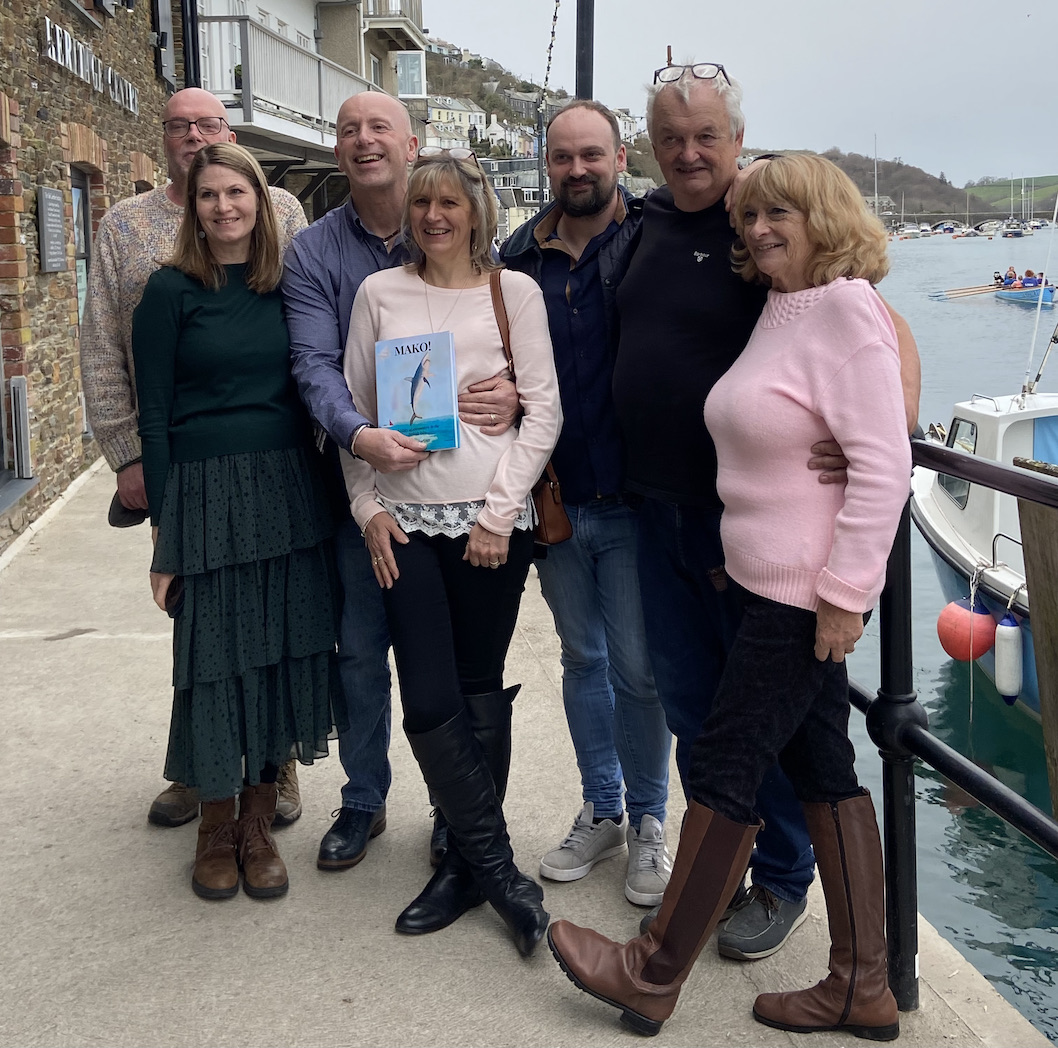
Dr Simon Thomas followed Ian delivering a fascinating and informative talk on the mako shark. The mako is built for speed capable of cruising over long distances in search of its prey with the ability to accelerate in ambush reaching speeds of perhaps 50mph. The trademark appearance of a mako shark is its ability to leap high out of the water. This is a sight that has cemented the mako in the many stories told by anglers who have hooked these magnificent fish.
The mako are found in ocean waters with a temperature above 16 degrees centigrade. Their range extending from New Zealand to North West Scotland. The mako can reach a weight of around 1500lb with a 500lb fish likely to be around 20 years old.
The golden era for mako shark catches in UK waters was between 1951 and 1972. The last Cornish mako was caught in 1980. Mako have been caught off Wales and Ireland in recent years and suspected sightings have been made in recent seasons.
I asked Dr Thomas if he believed climate change could result in a potential increase in mako numbers off the UK. He acknowledged that there is rapid and complex change within marine eco systems that may or may not be linked to climate change. The gulf stream influences our weather, climate and fish migrations its flow rate and global warming are complex and not necessarily one and the same.
Below is a link to Dr Simon Thomas’s talk
After Dr Simon Thomas’s talk Ian met with those who had travelled to purchase copies of the book that had virtually sold out its initial print run. Among those collecting their books was Looe Skipper, Phil Dingle, the son of Alan Dingle a family of legendary Looe Skippers who feature extensively in the book.


The Dingle family

All assembled at the event were privileged to share in a moment of celebration as the book records some of Looe’s rich shark fishing history.
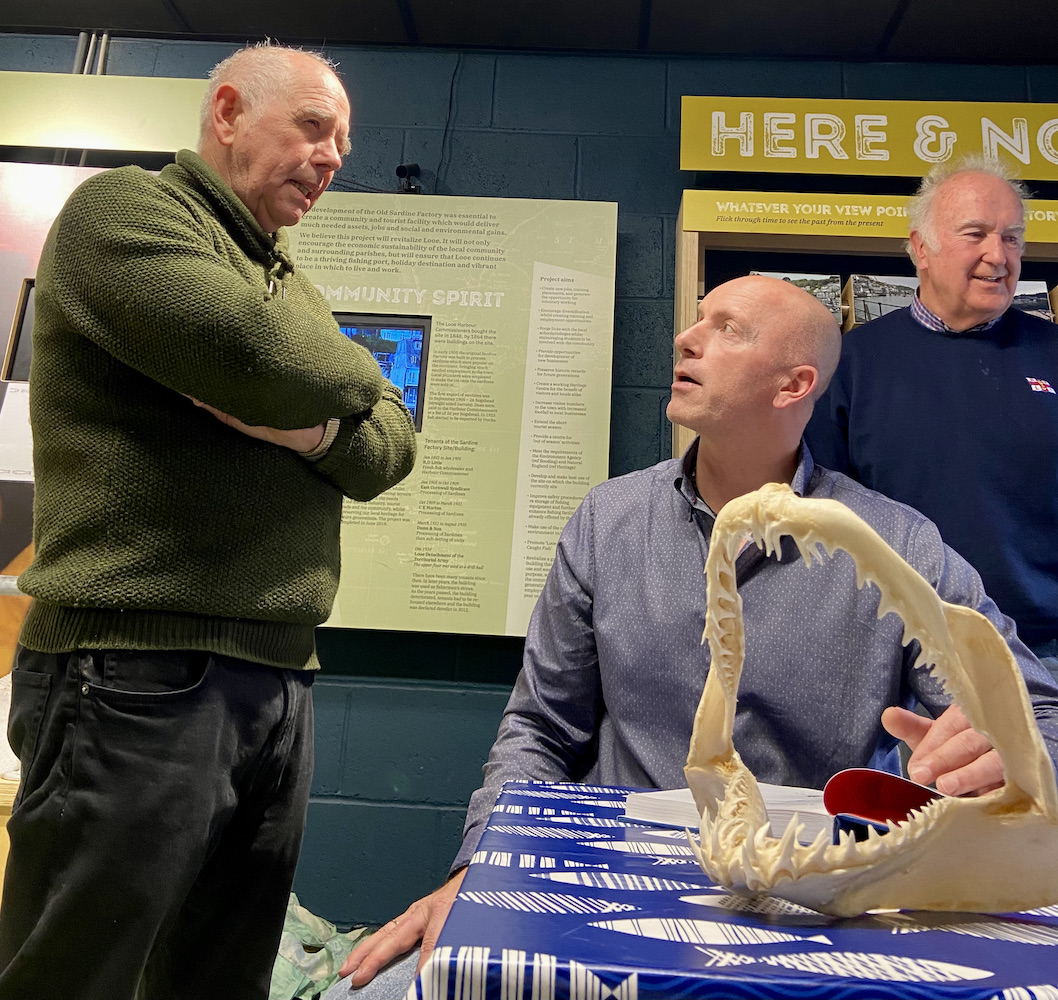
Looe has been the home of the Shark Angling Club Of Great Britain since its formation in 1953. The club’s founder was Brigadier J.A.L. Caunter, C.B.E. , M.C,. C.C. who wrote the book Shark Angling In Great Britain, published in 1961. The cover of the Mako! book comprises of a painting by Caunter that portrays a mighty mako leaping with a red sailed Looe shark boat drifting upon the sea reflecting a blue summer sky.
http://www.sharkanglingclubofgreatbritain.org.uk
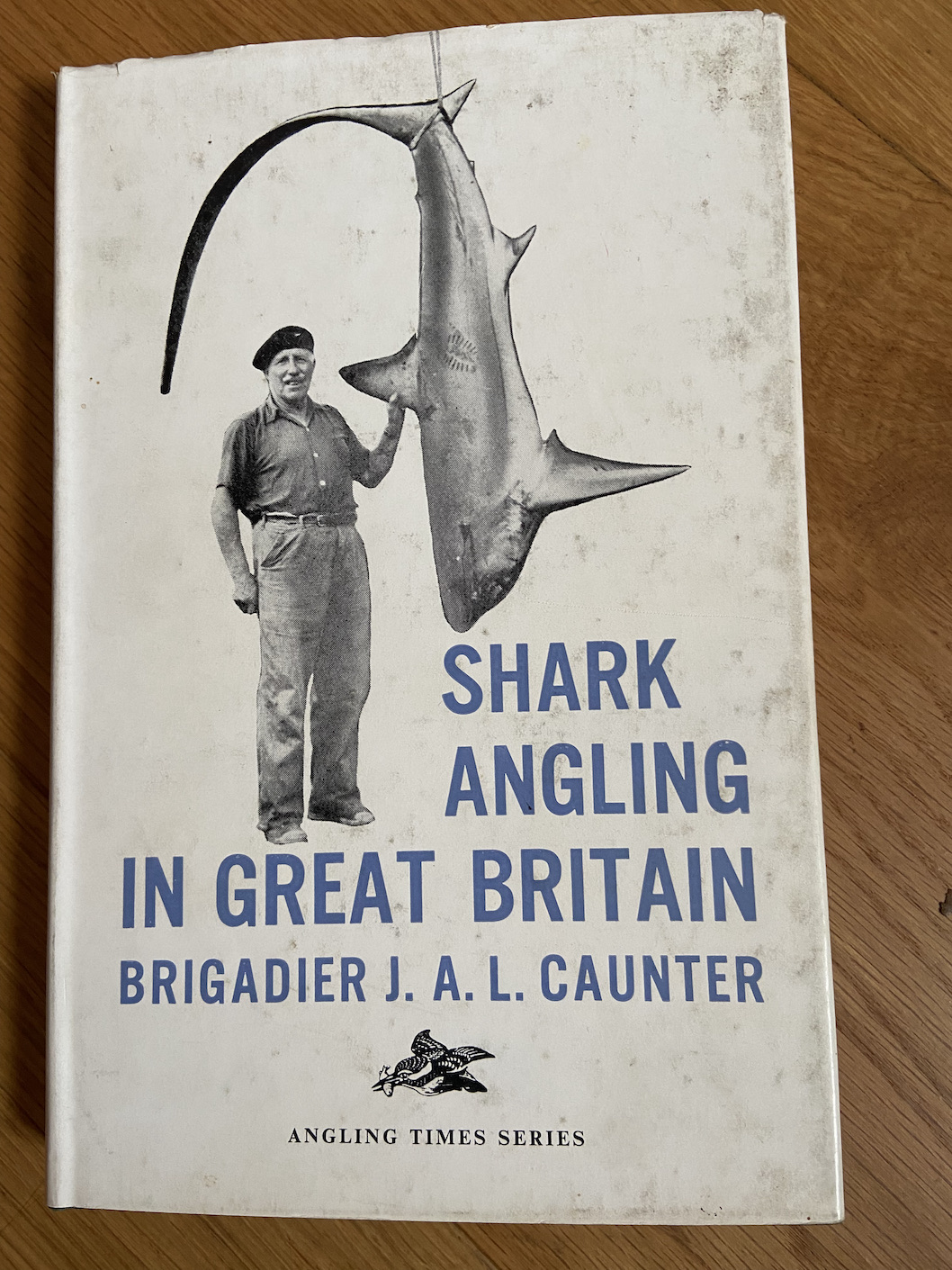
My own angling life started in Looe in the 1960’s when my parents visited Looe each autumn. Like Ian I gazed at the shark brought ashore each evening and dreamt of setting out one day to catch these monsters of the deep. I caught mackerel and garfish from the Banjo pier in those formative years and hold those treasured memories in my mind’s eye.
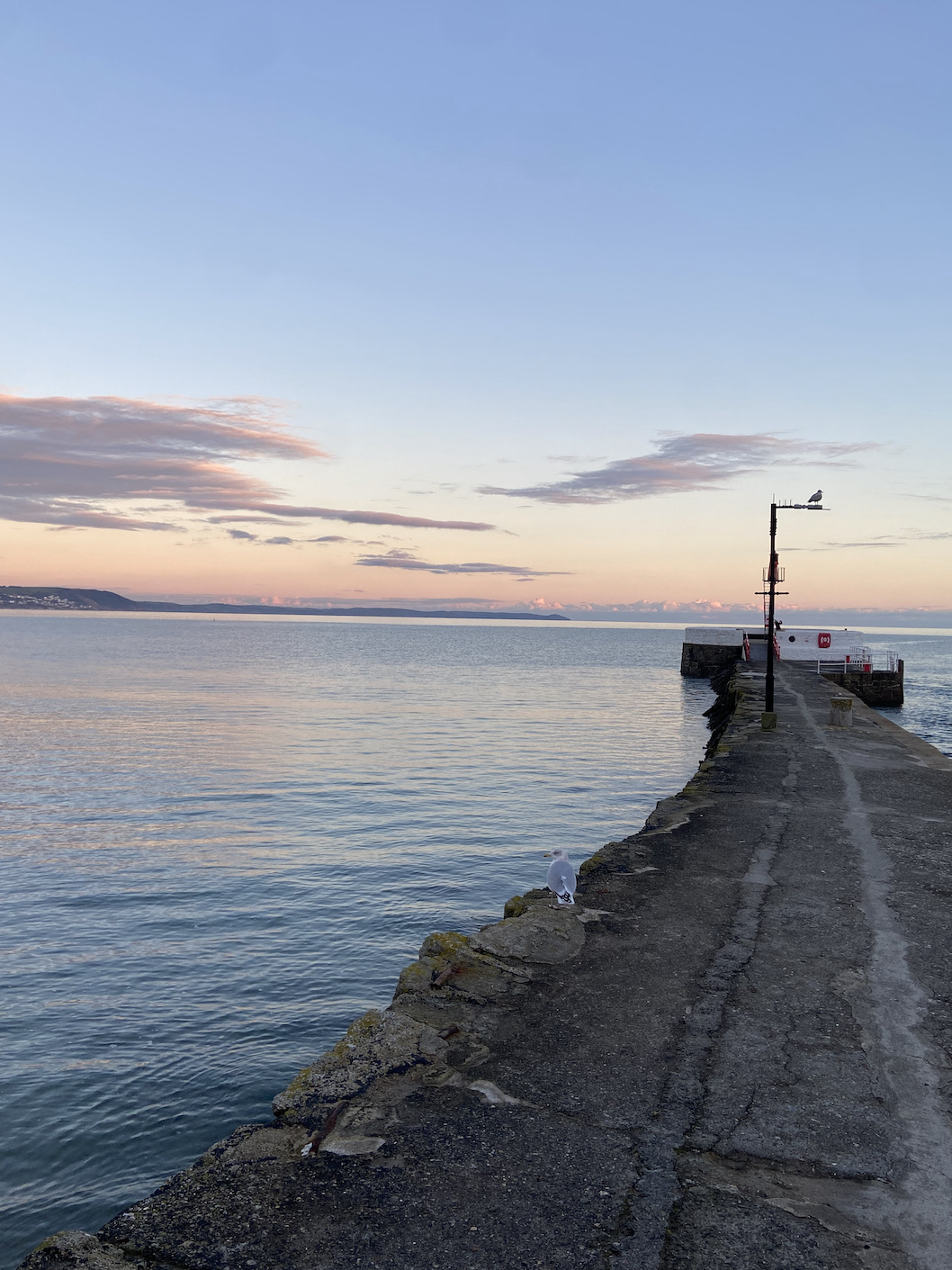
On the distant horizon on those autumn evenings I saw the rhythmic flashing of the Eddystone lighthouse. As a young angler I yearned to fish those mysterious waters where mighty shark swim. Many years later I returned and set out from Looe to catch blue shark and succeeded in catching a blue in excess of the SACGB qualifying weight. To hook a mighty mako must be one of anglings greatest thrills and to read of such battles at sea feeds the dreams.
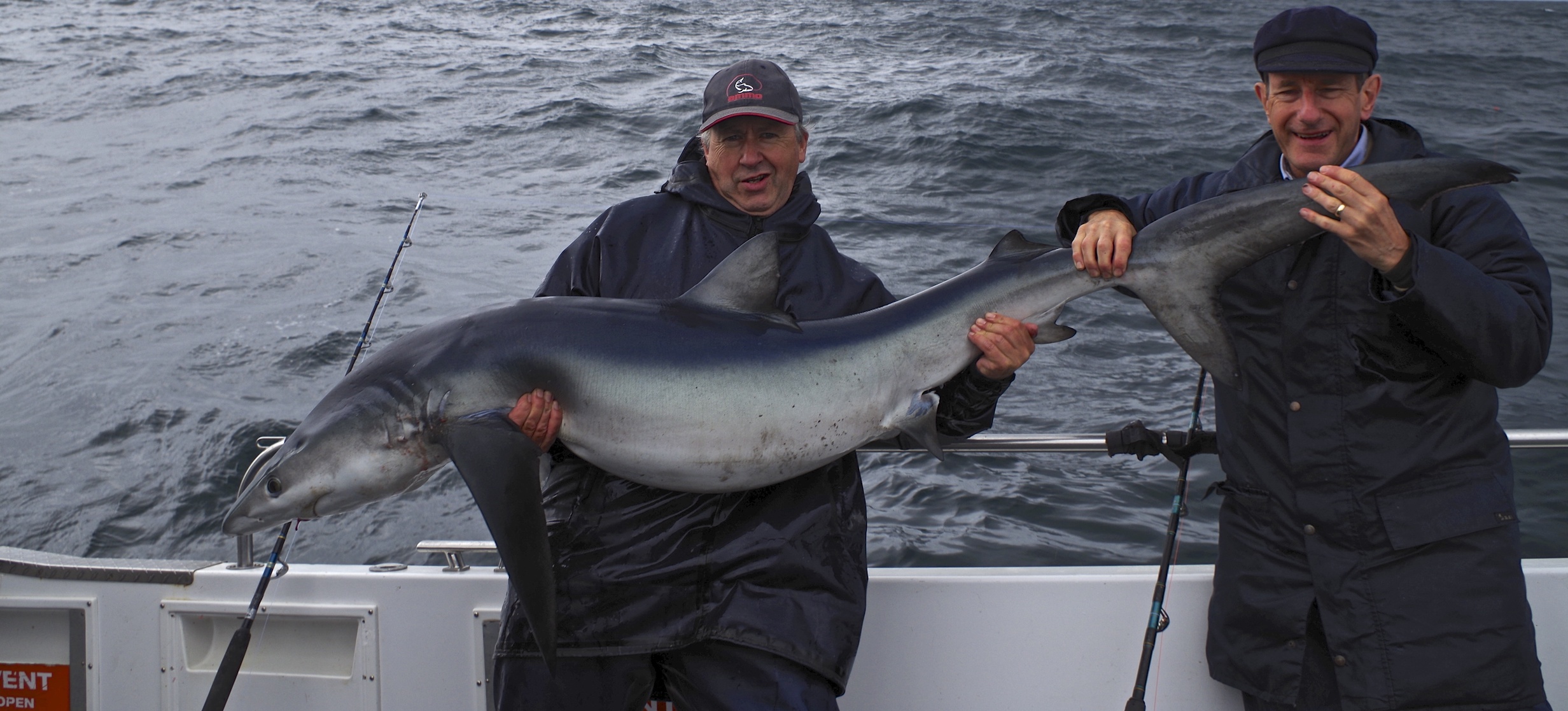
The recording of history is important and in Ian’s book he tells history as it was warts and all. This is how it should be for times change and we should not look back and judge previous generations too harshly. Whilst I feel a sense of unease as I look at the pictures of shark carcases hung up on the weighing station I know that if I had been there in those days I too would have taken part for it was as it was in those days.
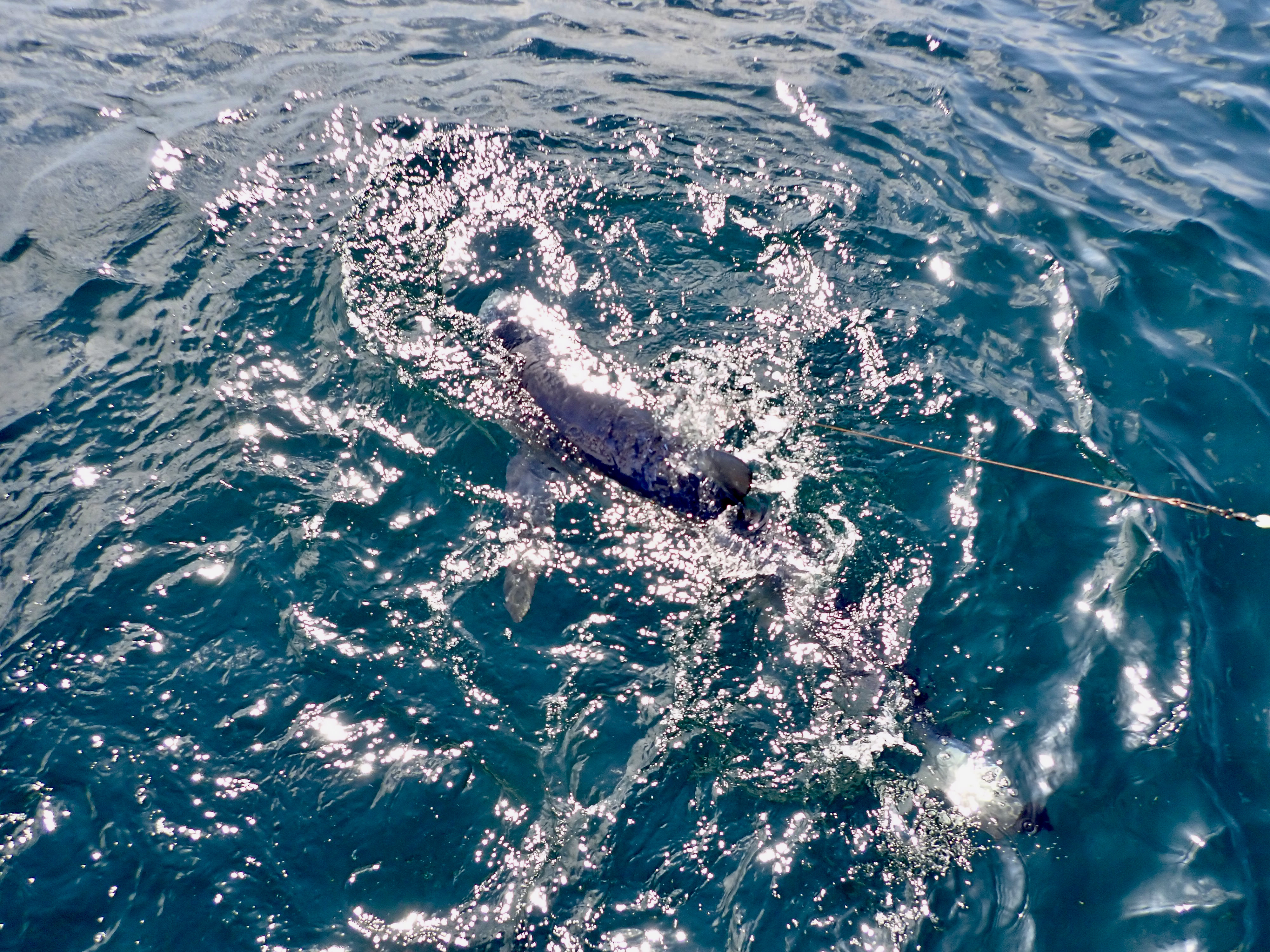
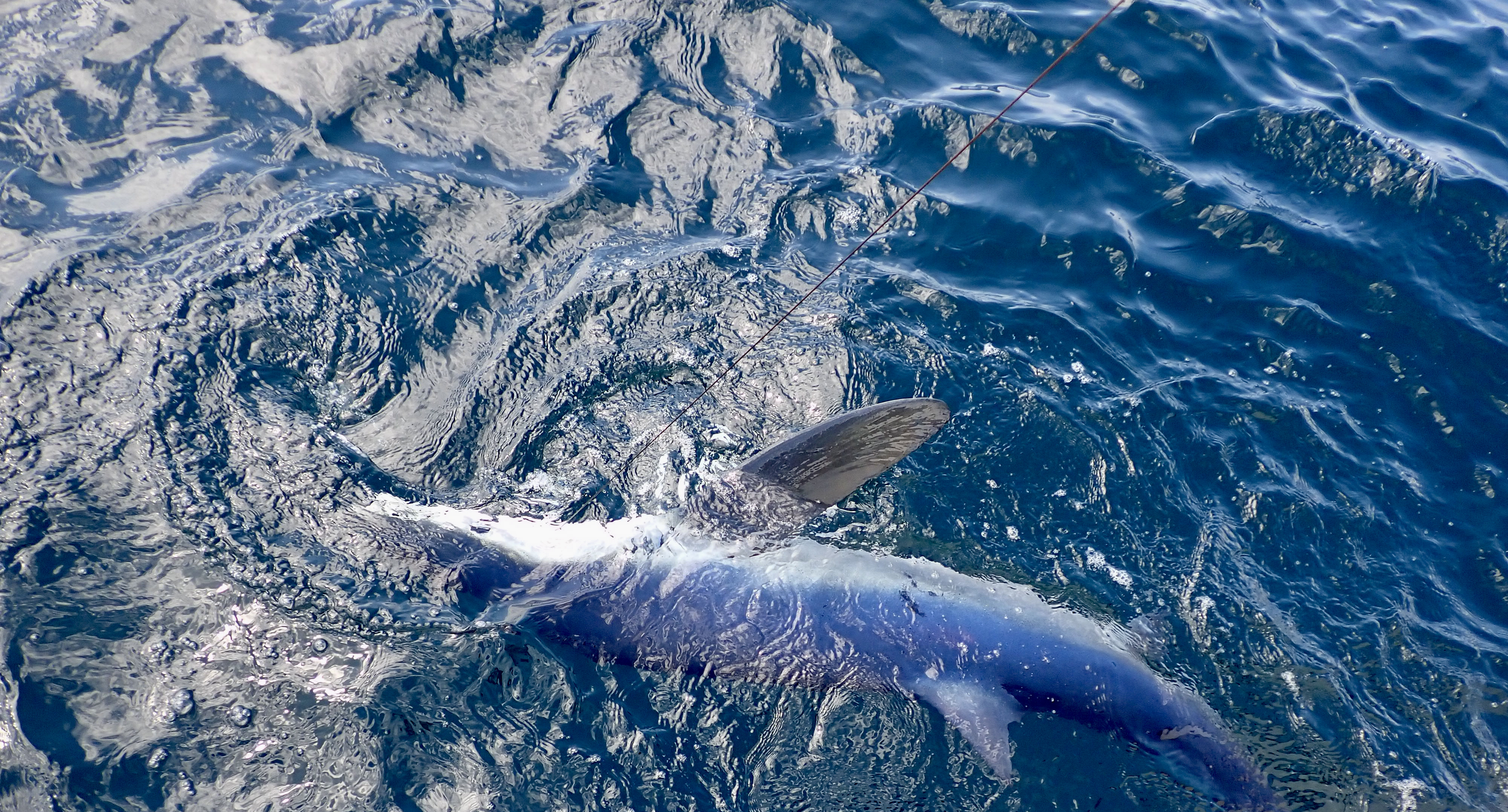
Looking through the many pictures in Ian’s book I recalled the names of many boats I had seen moored upon the quayside. Paula, Our Daddy and Irene amongst names that brought a fond recollection of times long since passed.
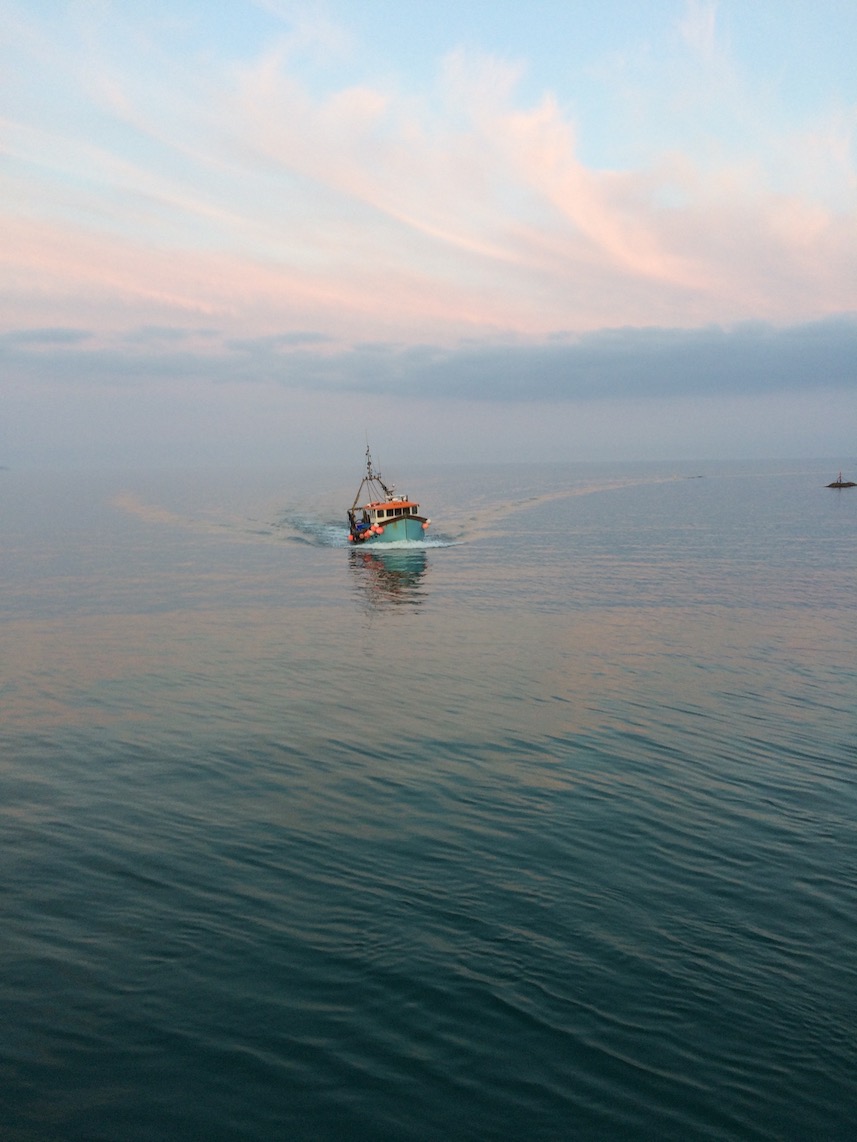
Shark angling has moved on and conservation is top of the agenda. The Pat Smith Data base set up by John McMaster and Dr Simon Thomas is recognised as a valuable source of information in learning about shark migration and populations. https://www.patsmithdatabase.com/about

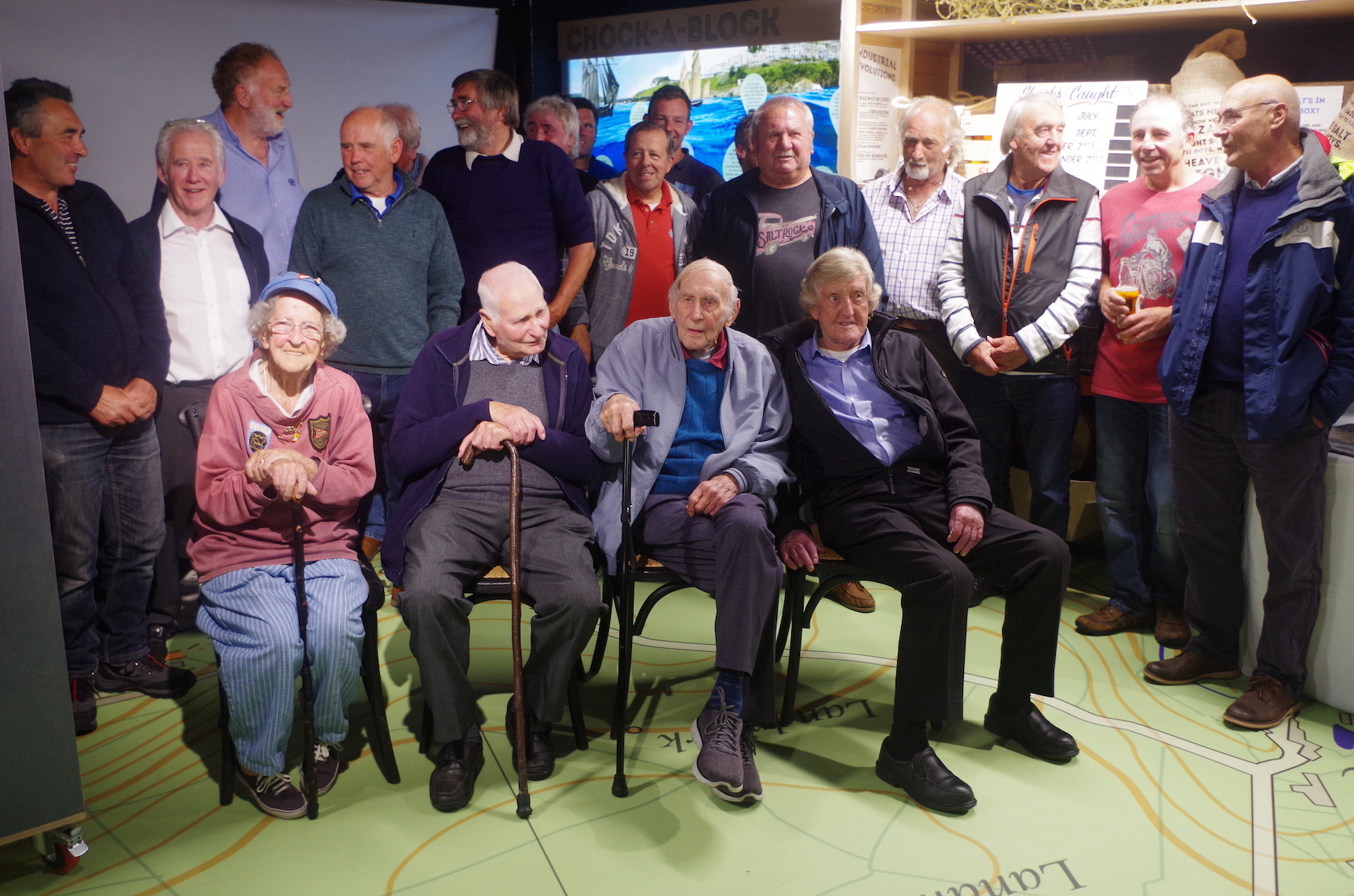
Whilst writing this feature I researched the inspiration for Captain Quince in Peter Benchley’s ‘Jaws’ book who I believed to be Frank Mundas. Interestingly Mundas who built his reputation as a shark hunter and set a world record when he caught a 3,427lb great white shark off Montauk in the US. Frank Mundas was to become a passionate shark conservationist. There is perhaps a strange irony in this relationship between hunter and prey. Several years ago I attended a fascinating talk by Paul Boote and Jeremy Wade. During the talk about the mighty mahseer of India a book by Jim Corbett was mentioned. ‘Man-Eaters of Kumoan is an enthralling read that tells of Corbett’s tracking and killing of numerous tigers. Corbett’s books are enthralling and paint a fascinating picture of the relationship between hunter and prey in far off days. Like Mundas Jim Corbett became a passionate conservationist working tirelessly for the protection of tigers. His name lives on with the Jim Corbett National Park in Uttarakhand named in his honour.
As climate change impacts upon our oceans the future of shark angling is as it should be, a mystery. Who knows what lurks beneath as the boat drifts in the dubby’s oily slick?

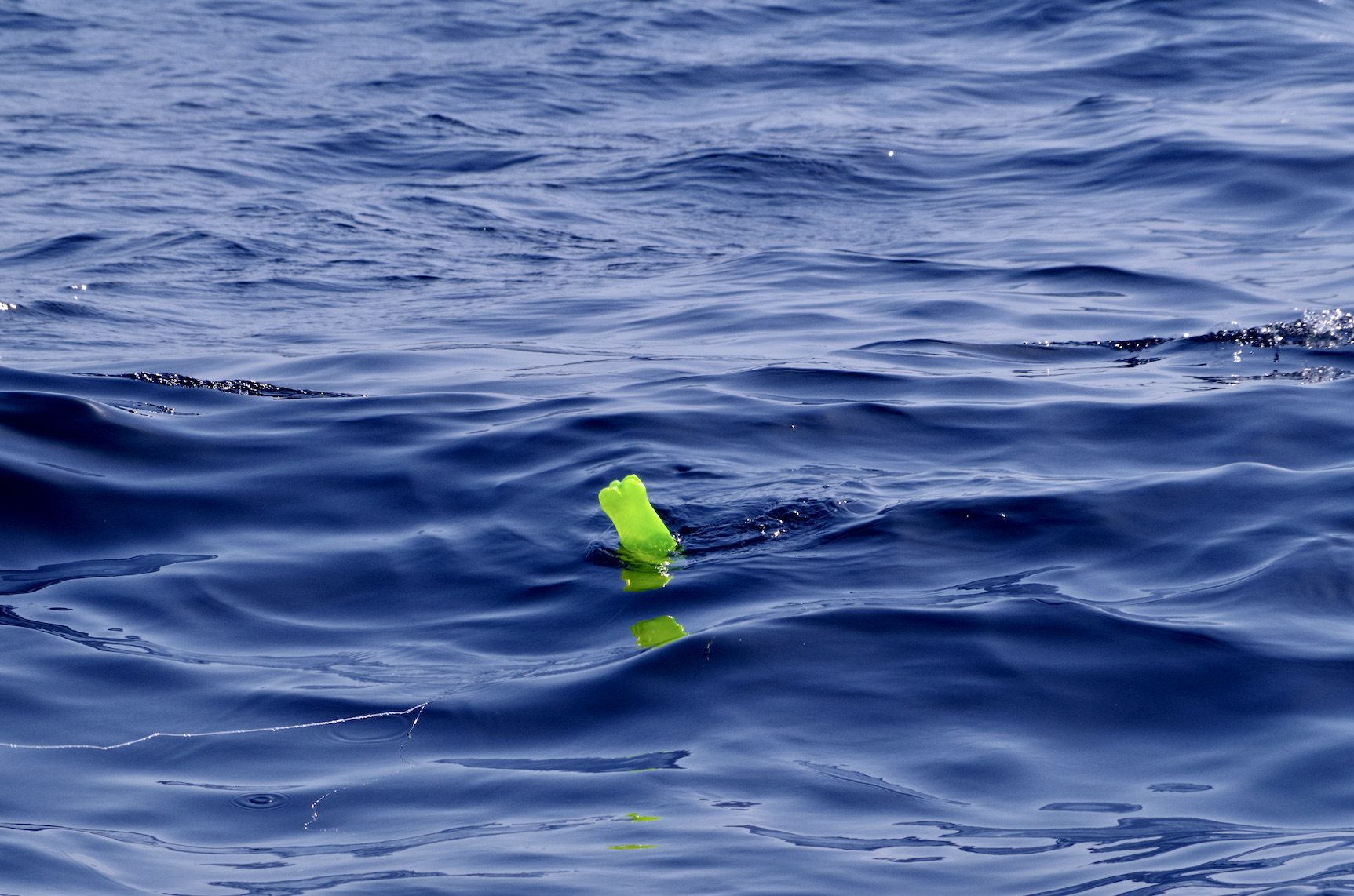
Barnstaple and District Angling Association have acquired half a mile of prime salmon fishing on the middle Taw that was once owned by the late John Saunders. On March 22nd members met with John’s widow Pam and their son Chris to hand over the fishing, Pam warmly wished members many happy hours at the water’s edge.

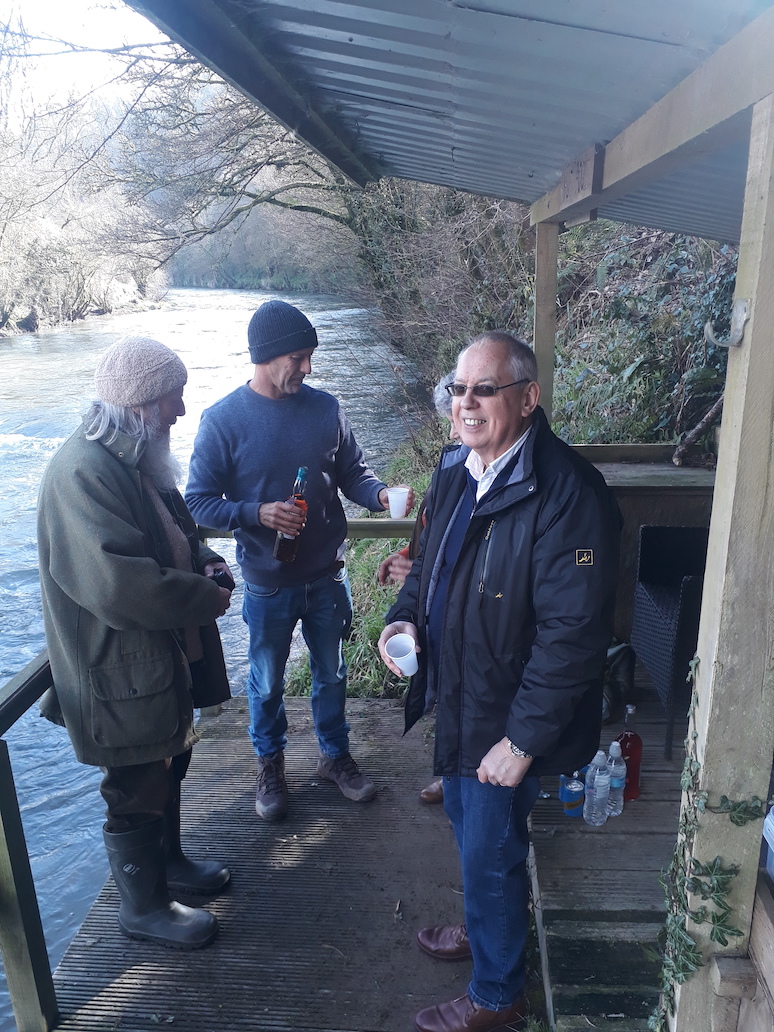
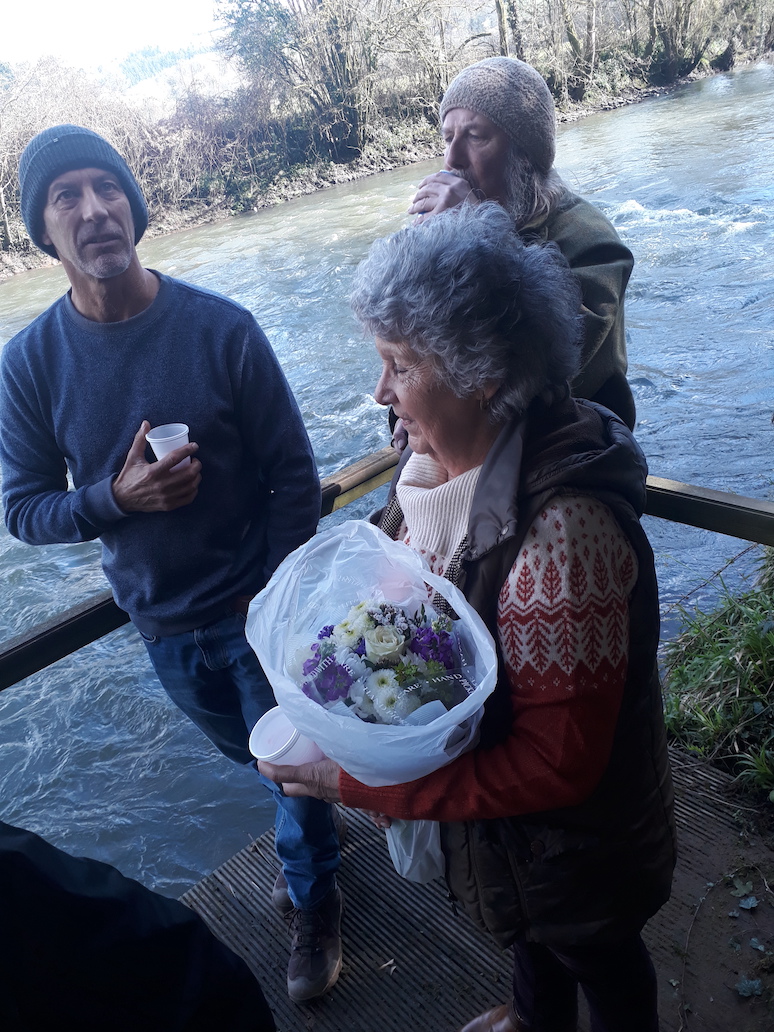
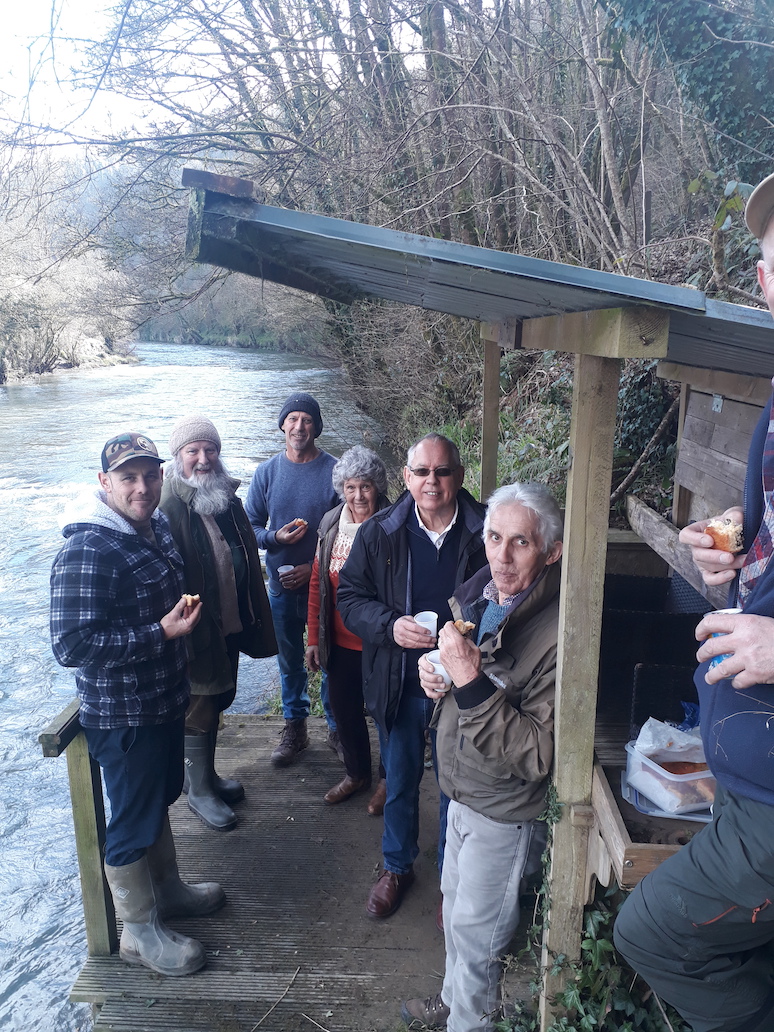
The following day I joined members at the rivers edge for an introduction to the clubs new water. Club member and long time keeper on the water Chay Boggis gave a valuable introduction to the water. Pointing out known salmon lies and safe wading areas. The river was at the top end of its fishable range but as river levels begin to drop and Spring gets underway prospects for salmon and sea trout are excellent. As the warmer days and lighter evenings arrive there will be the chance to target the plentiful wild brown trout that rise freely.
The club established close a century ago welcomes new members and has water on the Lower Taw at Newbridge and a coarse fishing lake near South Molton. Access to the new water for club members is via syndicate membership that is currently full.
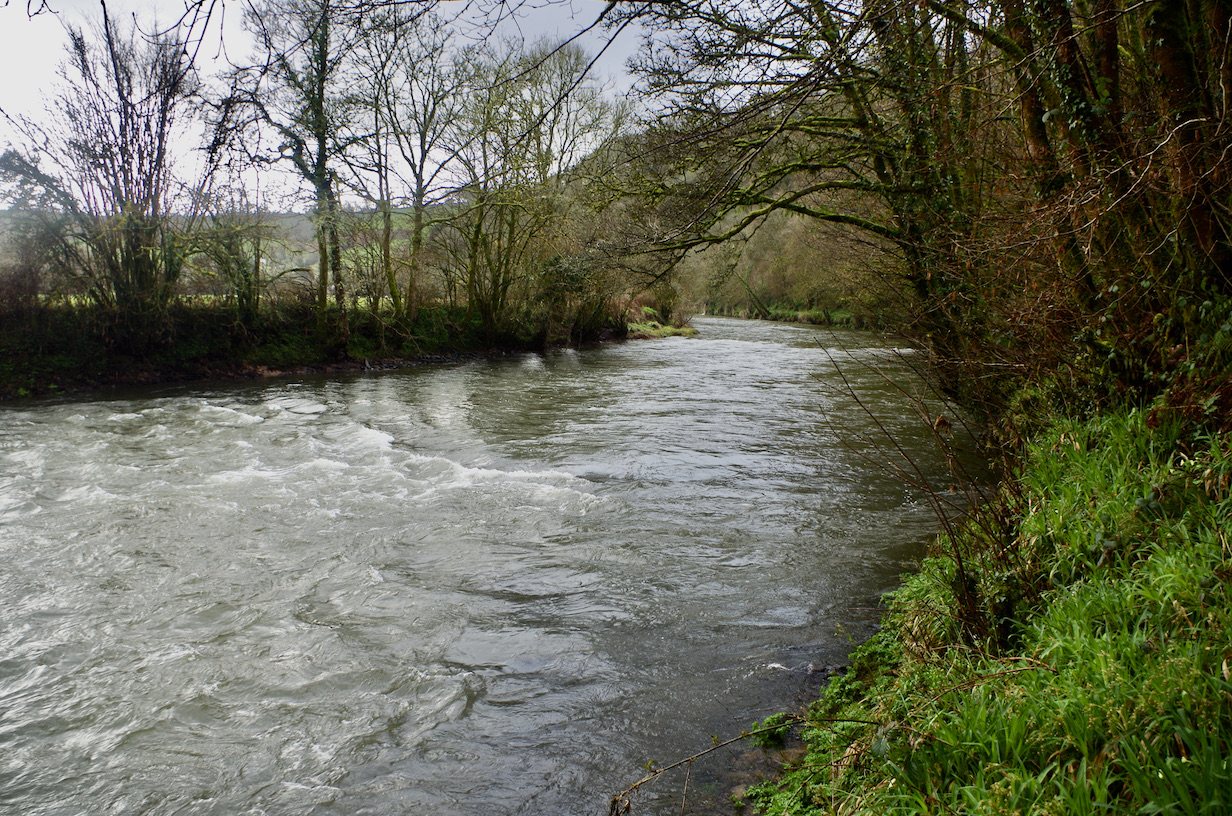
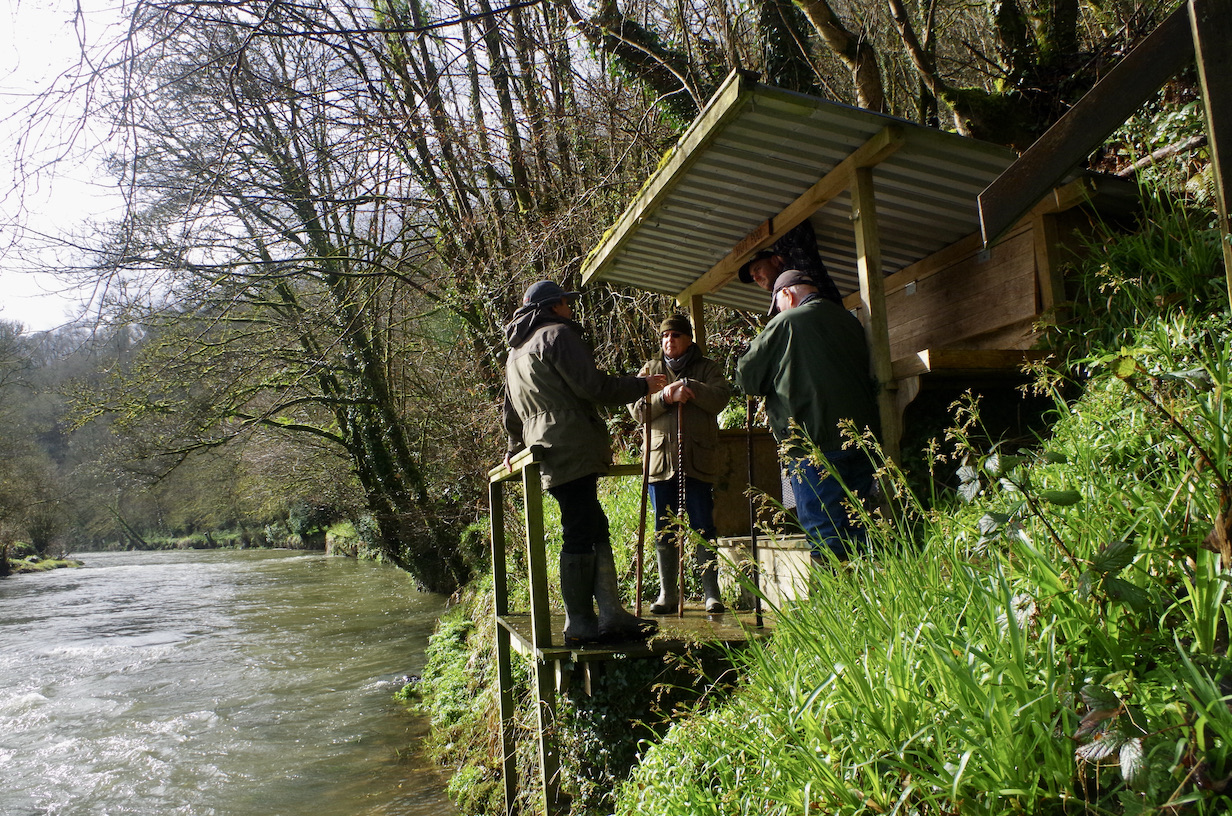
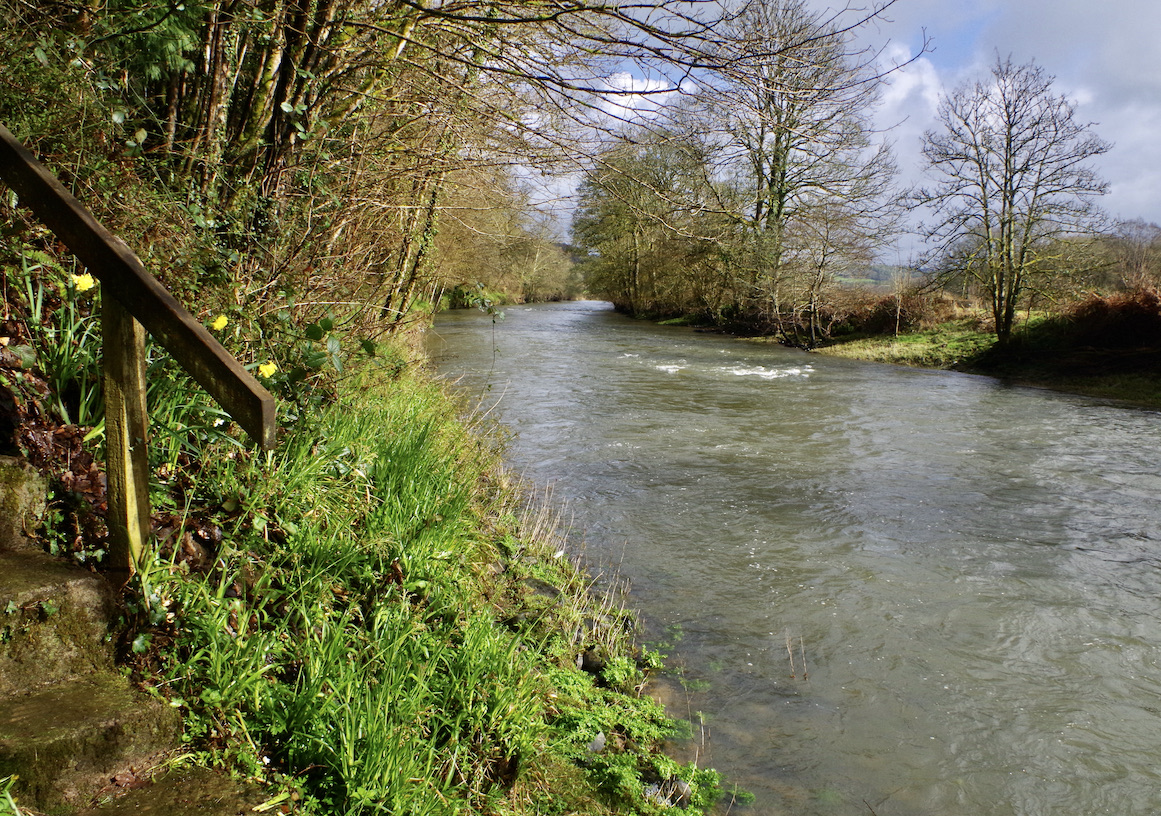


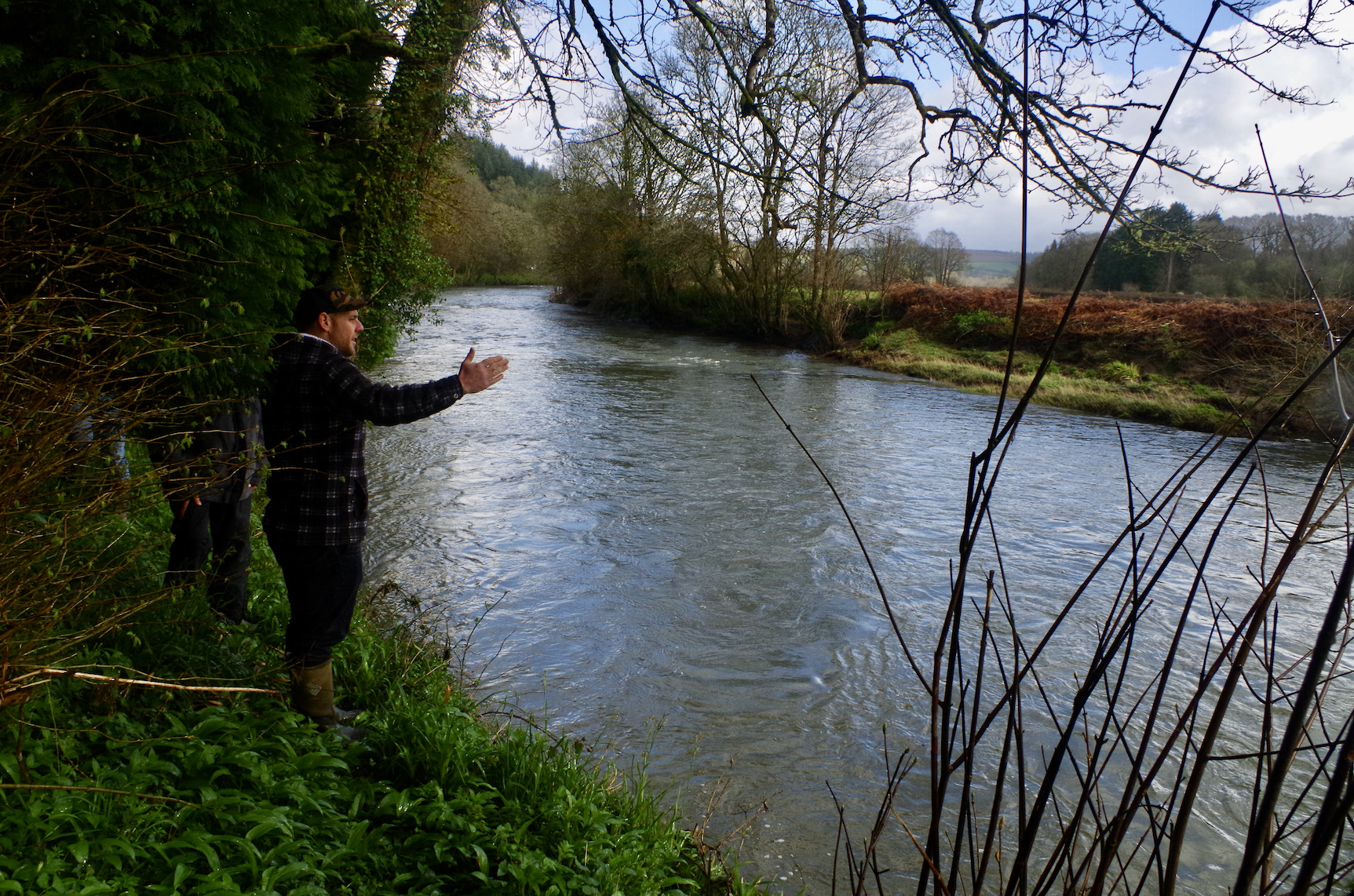
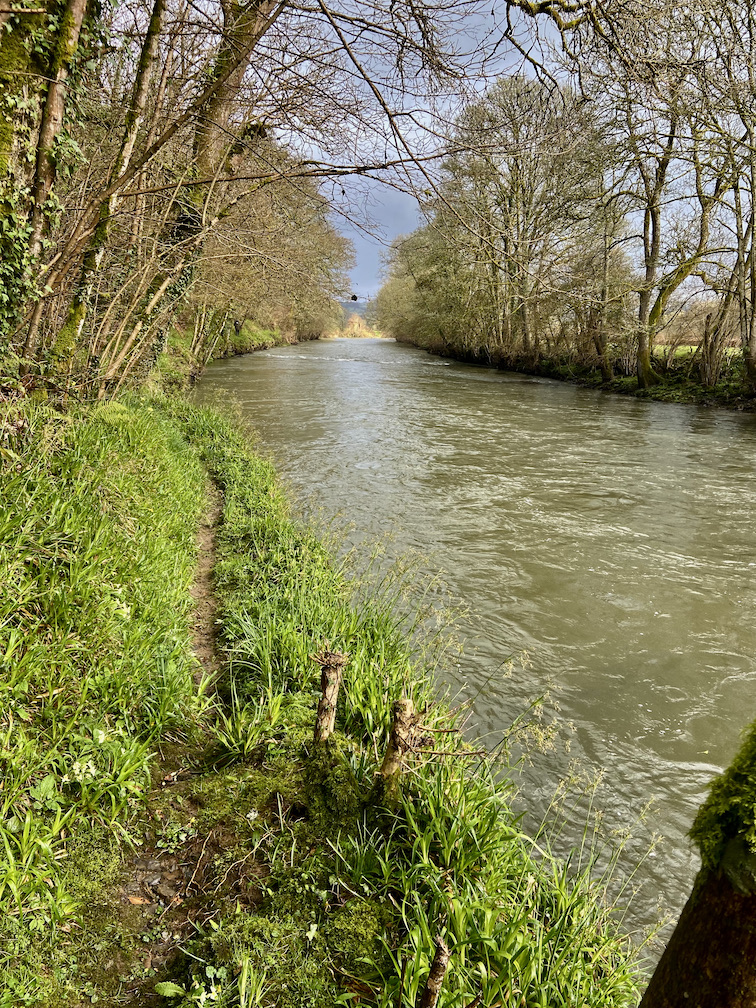
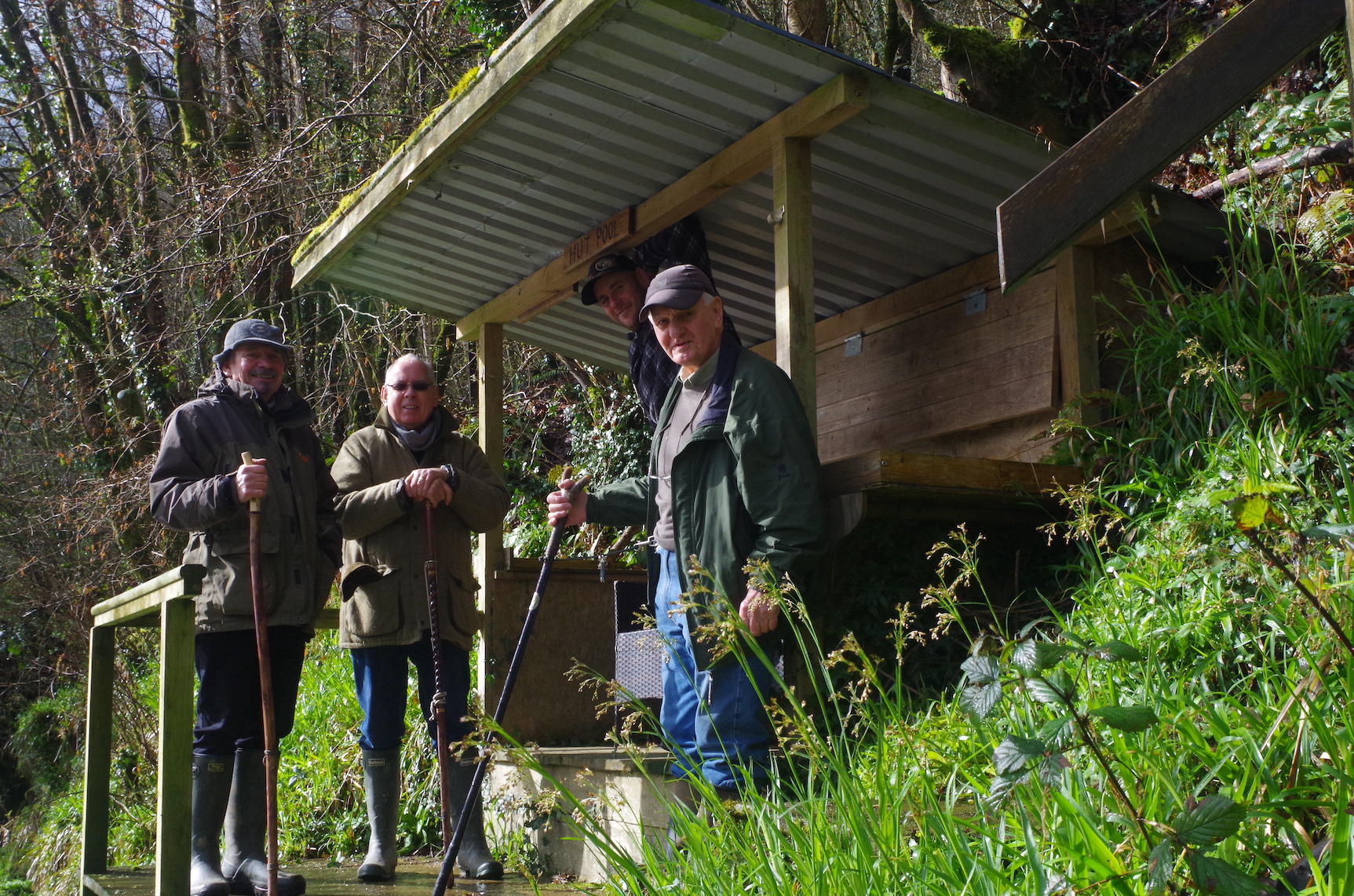
The Arundell Arms at Lifton is a longstanding Country Hotel with a rich history for shooting and fishing. When I saw that a new Orvis outlet was opening there in mid-March a visit for Pauline and I was undoubtedly in order.
After one of the wettest February’s on record and an exceptionally wet start to March the 2024 start to the salmon season has been very much a non-starter. And as we drove through Devon crossing the Torridge and Tamar enroute we noted the muddy and swollen bank high rivers. There would be no fishing for a few days at least.
We arrived at the Arundell Arms mid-morning and walked into the new Orvis store to be greeted warmly by David Pilkington. A gentlemen I had not previously met but a name that is synonymous with West Country Fly Fishing.

David Pilkington joined the Cornwall River Board as a trainee bailiff at the age of sixteen and joined the team at the Arundell in 1976 as assistant river keeper and fishing instructor. We chatted with David about his years at the Arundell and inevitably reflected upon the catastrophic collapse in salmon and sea trout numbers. Like many anglers of our generation I feel that we perhaps share both a deep rooted sadness at what we have seen and an acknowledgement that we were lucky to fish through such wonderous days of abundance.

A wide range of salmon, sea trout and trout flies suitable for West Country waters were available and I inevitably succumbed to temptation purchasing a few salmon and trout flies. I just hope they appeal to the fish as much as to me! An impressive rack of Orvis fly rods and reels were on display, clothing waders and tackle adorned the opposite wall all exuding quality that was reflected by the price tag.
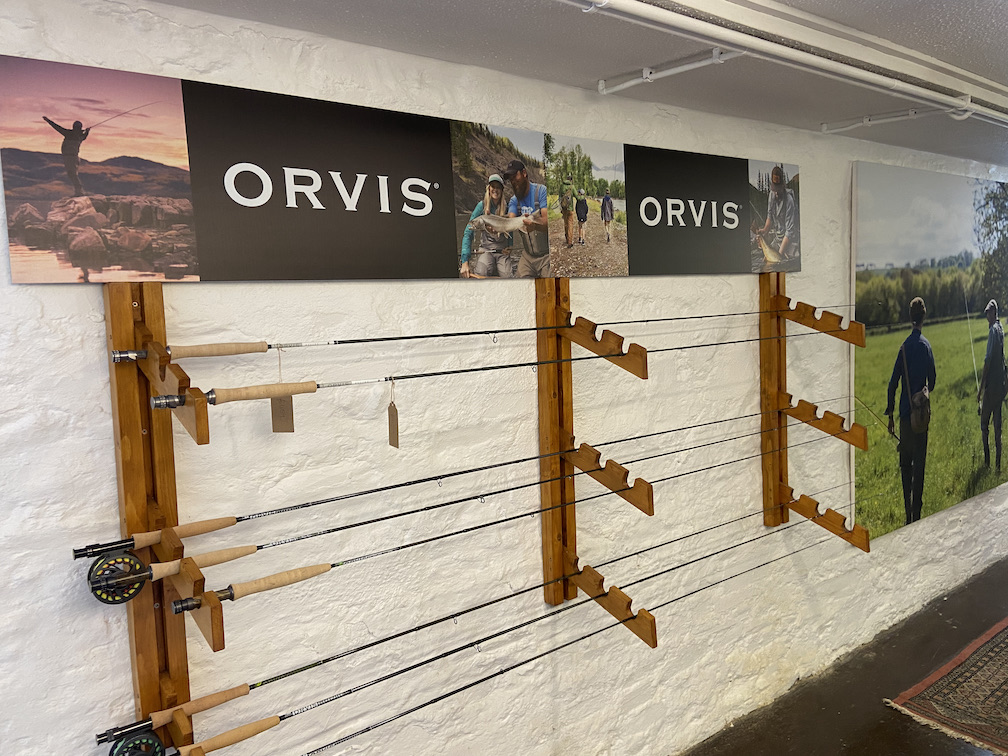
After chatting with David we engaged in conversation with the Arundell’s new owners. Simon Village and Arabella Munro. They took over the Hotel in 2020 during the height of the Covid pandemic a challenging time to embark upon such a venture for sure.
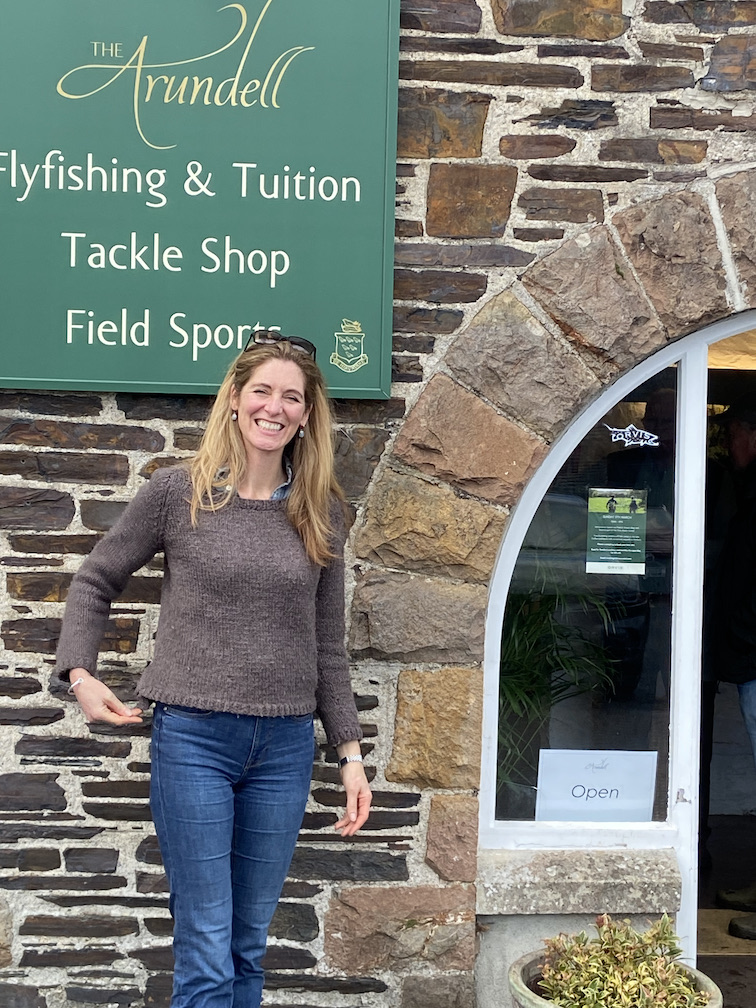
Simon was undoubtedly well versed in the Hotels rich history and traditions and recounted the glorious days when the Hotel was under the stewardship of Conrad Voss Bark and his wife Anne Voss Bark. The Arundell Arms is one of few remaining Country Sports Hotels left in the West Country. I recall with fondness the Carnarvon Arms and Tarr Steps Hotel on the Barle in Somerset and several other establishments that were once thriving hubs of country life.
Simon and Arabella’s passion for preserving this rich cultural heritage was evident as we chatted about the river, its fish and its fishers. These Country Hotels with fishing and shooting have over the years hosted many with wealth and influence upon the land along with many of anglings greatest writers. Unlike many large country historic houses that are now preserved by the National Trust or run as theme parks these establishments still maintain a real beating heart of Country life and tradition.
Whilst the demise of salmon and sea trout is undoubtedly very sad. The thriving wild brown trout and grayling give hope for a bright future at the Arundell. Twenty two miles of glorious river meandering through the border lands of Devon and Cornwall.

After booking Sunday lunch we headed to the famous Cockpit to grab a fresh coffee before trying out one of the new Orvis rods on the lawn. The cockpit was once used for the barbaric sport of cockfighting. In recent years it has been the Hotels rod room and location for pre fishing briefings. There is a great deal of research carried out before these rods are released and it was a joy to have a few casts with a rod of undoubted quality.
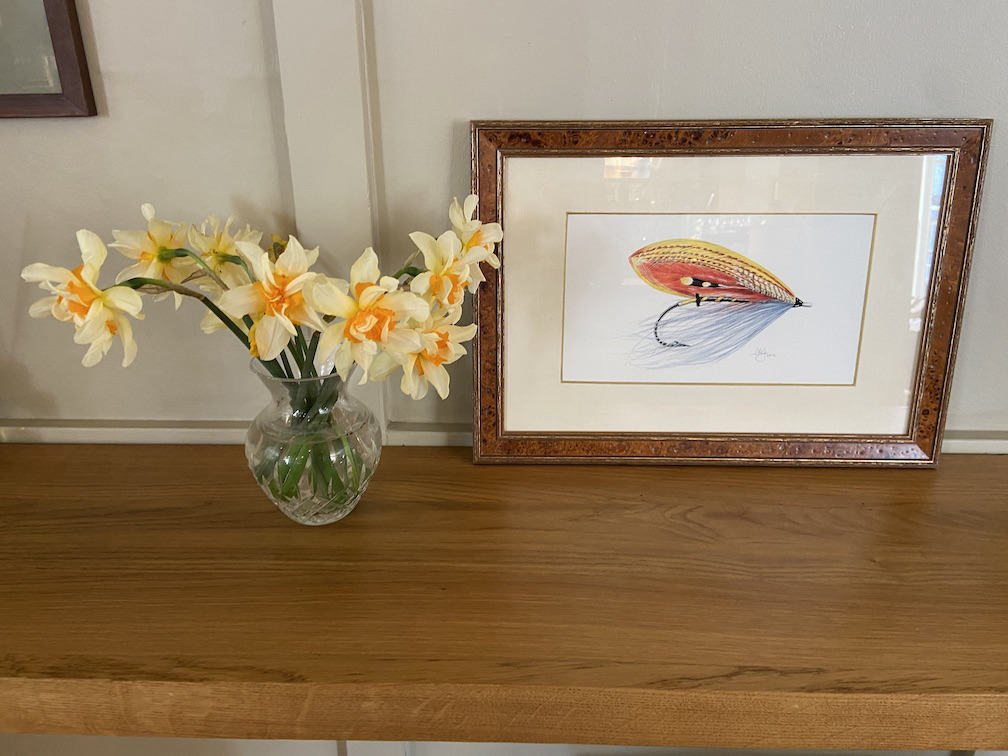
Pauline and I enjoyed a delicious lunch in the Hotel Bar as warm spring sunshine beamed in through the windows. A smouldering log fire, Spring flowers, Suitably piscatorial pictures on the walls along with cheerful friendly staff made it a perfect way to spend a Sunday lunch.
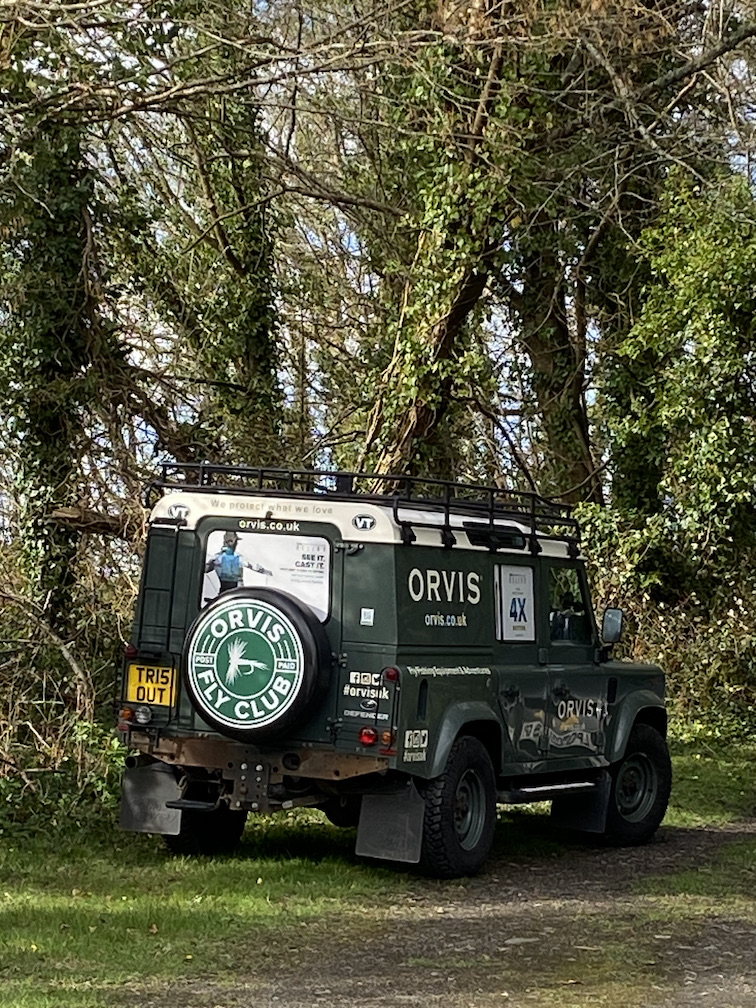
Suitably refreshed we headed to Arundell’s Tin Hay Lake half a mile down the road. The lake is an old flooded quarry its gin clear waters providing superb fishing for stocked browns and rainbows. Today Orvis and Arundell team members were offering expert tuition to a mixture of experienced anglers and keen novices.
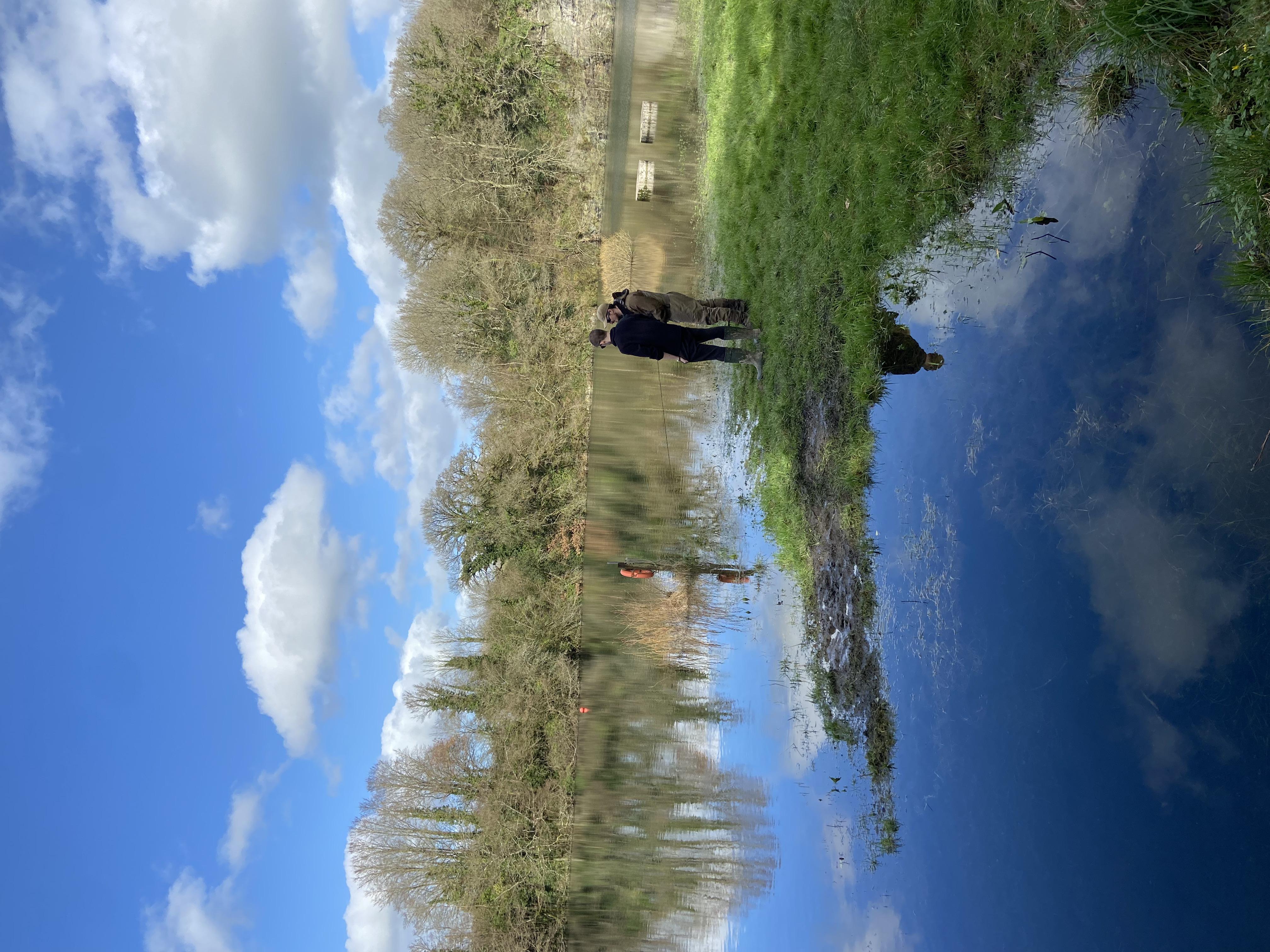
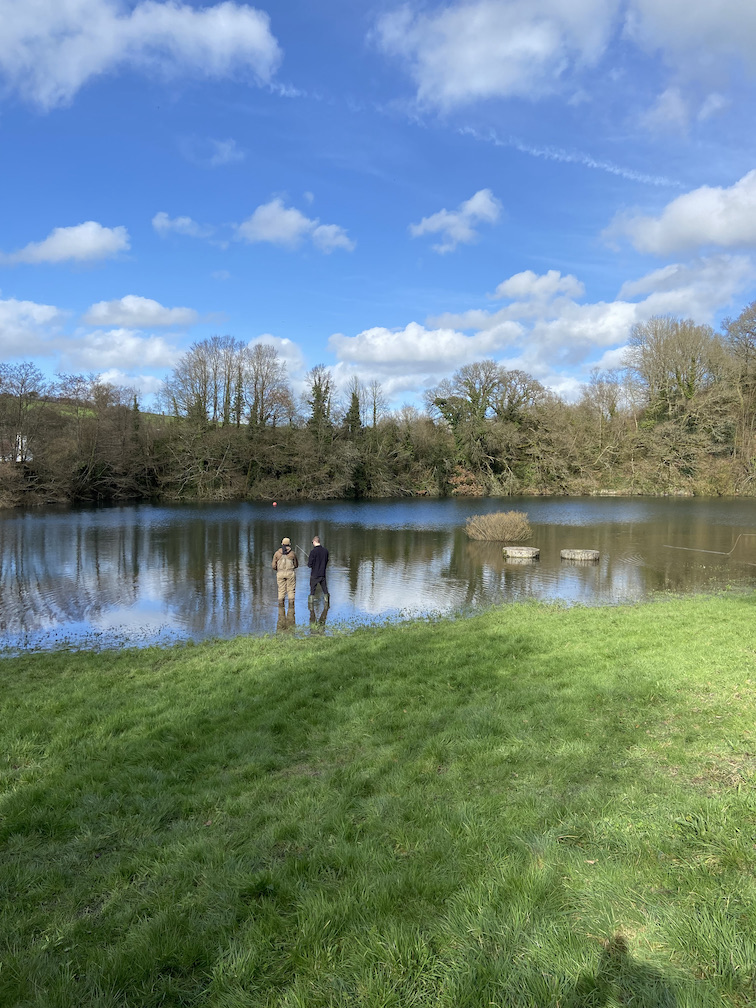
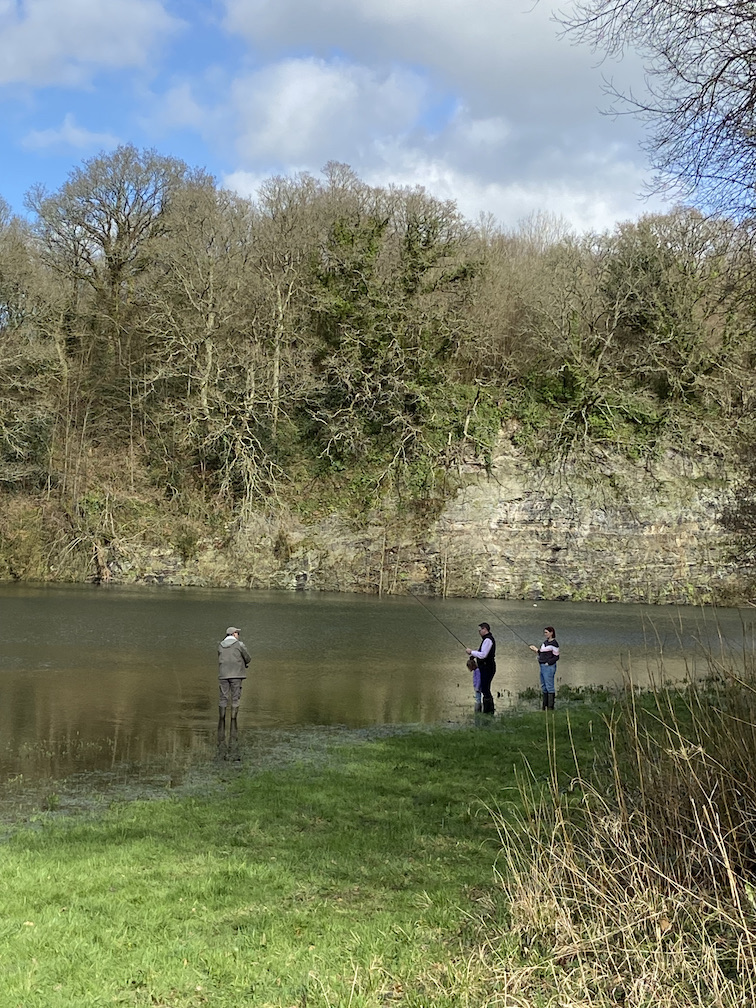
We chatted with members of the Orvis team and local anglers. We also conversed with Luke Bannister maker of fine split cane rods, we delved into the joys of fishing and how those magic wands that deliver flies to the trout are instruments of delight. I pondered upon the worth of rods with price tags upwards of £1000. My own analogy was to liken the difference between a cheap run-around car and a Ferrari. The distance can be covered just the same with both cars as a trout fly can be delivered with equal effect to the wily trout. And so the question we are left with is not in relation to the catching of fish but more the delight in using tools that ooze that essence of quality that cannot always be seen or quantified. The difference between a true diamond and cubic zirconia ring perhaps.
We also drifted briefly into the toxic world of modern politics and the fight to clean up the nation’s rivers. There is certainly a growing and united movement of protest about the state of our rivers.
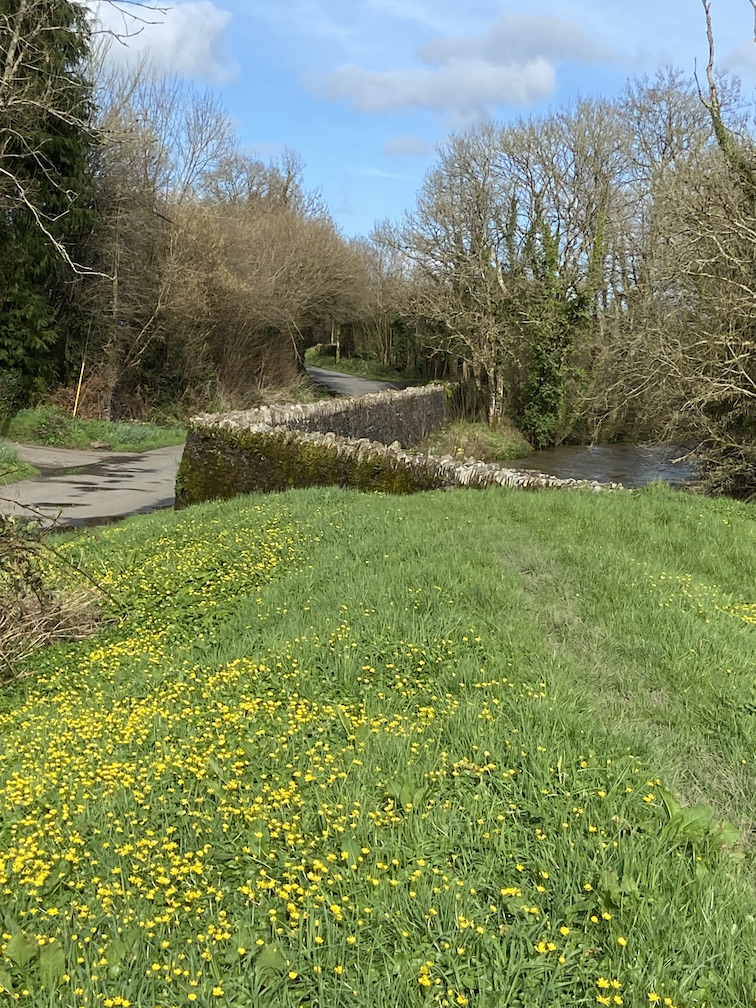
After a pleasant and engaging conversation we headed off for a walk along country lanes. The road took us over a bridge that crossed the River Thrushel a tributary of the River Tamar. The hedges and riverside banks were brightened with the carpets of yellow celandines. Daffodils were still in bloom but past their best an indication of increasingly early springs.
The river was alluring despite its turbid brown colour its gurgling sound adding a pleasing symphony to the spring day.
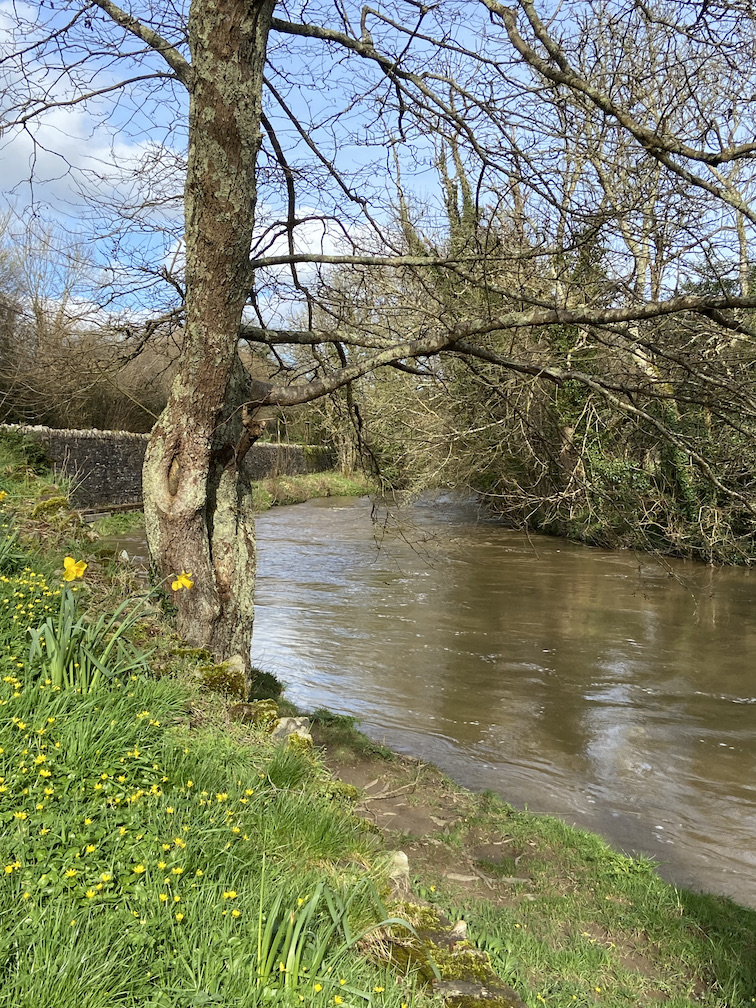
The country scene is one that will linger in my minds eye until the day I depart this earth.
After a pleasing and engaging day at Arundell I have plans to return later in the Spring rod in hand to explore waters that to me are uncharted. I will of course call into the store for some sound advice and maybe a fly or two recommended by David and the Arundell team.
01566 784666
Many thanks to Richard Wilson for sharing his monthly prose on North Devon Angling News. I would urge all who tread upon our green and pleasant land to read this article. I have had many encounters with ticks over the years. When fishing some of our overgrown rivers I have returned home later in the day to find these nasty critters sinking there teeth into my skin. Its a bit like Russian roulette some are loaded with deadly lymes disease whilst others are not carriers. I have heard of several people who have been infected and we constantly remove them from our cat. Others find them in abundance upon their dogs. Awareness is undoubtedly a major factor in getting treated but thats not always straight forward as Richard explains below.

This is a good time to be a tick with Lyme Disease to share. You and I may bemoan the weirdness of the weather, but ticks love it.
As the world gets warmer and wetter, they’re partying. 10 years ago, in the wooded valley I call home, we had two distinct tick seasons – from mid-March to June, and a shorter burst in the autumn. Last year I picked up my first in early February and my dog had his last in November, and they continued without a break right through summer.
Ticks are the original muggers. They lurk on the tips of grass fronds, often in and around woodland, waiting for an unwitting victim to brush past. They’re looking for a free meal which, for us, turns into a lose-lose transaction. The tick gets our blood and we get Lyme Disease, a bacterial infection with very unpleasant consequences.
I’ve been paying attention to this because I’ve just been diagnosed with Lyme. Worse, I’ve had it untreated for about 8 years, which is why I can also say that most doctors wouldn’t recognise it even if they caught it, and that I wouldn’t wish it on anyone.
There are two basics to understand about Lyme Disease, and they come hand-in-glove: An early diagnosis is both essential and very hard to get. Speed is everything because, given the chance, there’s no organ in your body or corner of your central nervous system that the Lyme bacteria won’t vandalise.
So how do you know if you’ve been exposed? A lot of people never see the tick that infects them. It can latch on at 1mm long, infect and then fall off. Others gorge themselves, growing bloated with their head buried in your flesh. The longer they stay, the greater your risk of infection. Thankfully, dog tick removers do a great job for us too.
The official advice is that the first visual clue of infection is a circular red rash around the site of a tick bite. This is where the medical profession starts to screw up.
In 2016 I had a tick bite and circular rash which I took into my doctor’s surgery. The nurse said it wasn’t Lyme (it was solid red from centre to edge and didn’t match the bull’s eye photo on her screen). No treatment was offered and, back then, I was as clueless as the nurse. I now know that anysort of rash or blistering (no rash) that might be tick-related should be treated as Lyme Disease. I also know that many Lyme cases never show a rash or blisters.
For patients and doctors, it gets worse. Blood tests, if done at all, deliver false positives and negatives in equal numbers in up to 25% cases. So even if a doctor suspects Lyme, and mostly they don’t, the test results are very likely to be wrong.
The next problem is your doctor. Once the bacteria get to work, your symptoms will be mistaken for heart disease, flu, a mild stroke, dementia, diabetic neuropathy, fatigue syndrome, Bells Palsy, arthritis, all manner of intestinal and organ malfunctions, viral infections, Parkinson’s, slacking and so on. Victims are constantly exhausted and, in my experience, at times look unevenly grey. This last blotchy observation is not in the textbooks – it should be.
There is no slam-dunk symptom for doctors to see that couldn’t be something more familiar. And to get an idea of what’s familiar, a quick look around their waiting room is revealing. The majority of patients are obese and bring diabetes, coronary heart disease and the such-like. Those who are not obese are mostly old with all that goes with advancing years. There are a small number of children with sniffles and one or two adults who’ve lost arguments with power tools. There are super-size chairs, but no dispensers of free tick removers and no warning signs or leaflets on how to avoid Lyme. It’s invisible.
Stand in most doctor’s surgeries and you’d never guess that Lyme Disease is the most prevalent insect/parasite-borne disease in North America and Europe and one of the fastest-growing infectious diseases in both. That’s big. According to the CDC, almost 500,000 Americans get it every year. Many, many more in both North America and Europe are infected but undiagnosed. There’s a lot of trouble coming for a lot of people.
Here’s why it took 8 years for me to get treatment: As said above, I first went to my doctor’s surgery in 2016 with a circular red rash caused by a tick. Patients treated with antibiotics at this stage mostly complete a fast 100% recovery, which is why medical guidelines say treat first and confirm the diagnosis second. Antibiotics are very low risk, but the consequences of delaying treatment are serious. In my case, medical ignorance delivered the wrong diagnosis.
The trouble started slowly. Within 2 years the fatigue, aches and pains were worryingly intrusive. Multiple trips to the doctor, scans and tests revealed nothing. Increasingly worried, I remembered the tick rash and asked for a Lyme test. It came back negative. Nobody told me how inaccurate the tests were, and still are.
Fast forward through many more scans, tests, a gall bladder removal that was supposed to resolve my woes (and didn’t), a 2nd negative Lyme test and more. I was a minor medical mystery. Then, this autumn, I paid for a 3rd test and it came back positive. The next day my doctor re-tested with both the standard LISA test and a Western Immuno Blot test. Both came back positive. 3 positives in a week, including a Western Immuno Blot, is as good as a positive diagnosis gets.
Such a late discovery brings problems. Given time Lyme bacteria also attack and disrupt our Autonomic nervous system which controls all those things that just happen without conscious thought: Blood pressure, breathing, heart rate, digestion and so on. They also disrupt our short-term memory, which is why, if I stop to make a coffee, I may have to remind myself that I’m writing about Lyme. That’s very disconcerting. Weirdly, I don’t forget why I culled an adjective or shunted a sub-clause down a paragraph. It’s also why my blood pressure can veer from 180:140 to 80:50 and my heart sometimes sounds like Animal, the Muppets drummer, playing deranged rhythms with one hand. And as medications are added to treat the symptoms, so cause and effect get complicated.
If getting a diagnosis is difficult then getting rid of Lyme is even harder. Symptoms can persist long after the antibiotic course is completed and the longer you’ve had the disease, the longer they’ll last. When this happens researchers are very careful to refer to Post Treatment Lyme, and not Long-or Chronic-Lyme. This may sound like semantics, but it’s important.
I have been treated with 2 courses of antibiotics (the sledgehammer and then pile-driver versions) and it’s extremely unlikely that any of the bacteria have survived this onslaught. They’re dead. So now I’m living with the damage the Lyme bacteria have done, especially to my nervous system. I felt like sh*t then, and still feel it now. Mending this could take years.
Imagine a human-scale version of a deserted battlefield. The war is over, the armies have gone home and all that remains is a landscape of devastation and dysfunction. Eventually, the land will recover, the trees will grow back and any unexploded munitions will be removed. How long will this take? We don’t know. Welcome to Post Treatment Lyme Disease.
__ ___ ___ ___ ___
A Footnote: Whole-genome sequencing of Borrelia burgdorferi, the tick-borne bacterium that causes Lyme Disease, has shown a huge range in variety and complexity. This is thought to explain the multiple Lyme disease symptoms, from severe arthritis in children to fatigue and debilitating joint, neurological, and cardiovascular impacts in adults.
For further reading, I recommend the Lyme specialists at Johns Hopkinsand Harvard.
Soon there will be a vaccine (it’s in Stage 3 trials). And about time too.

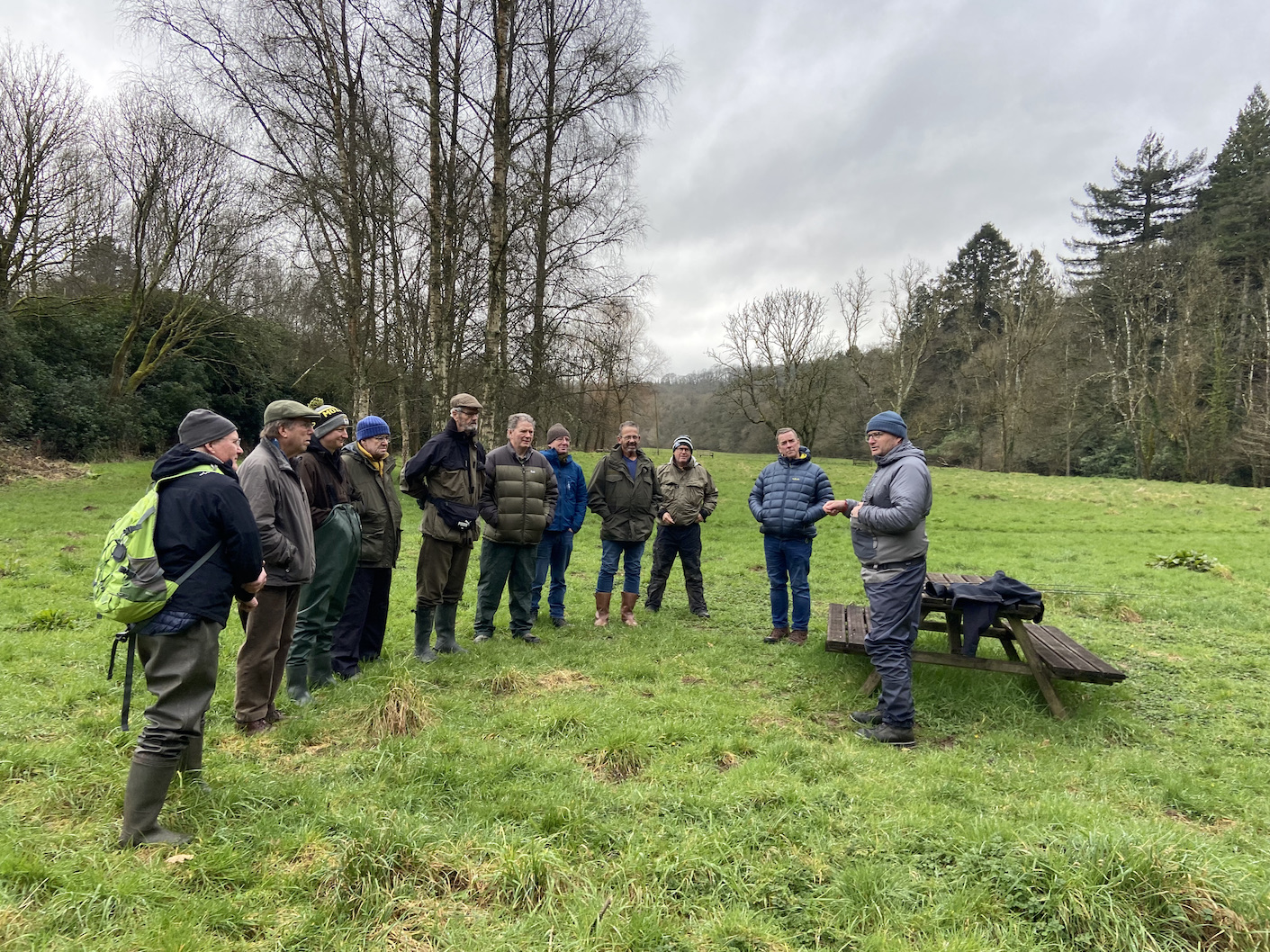
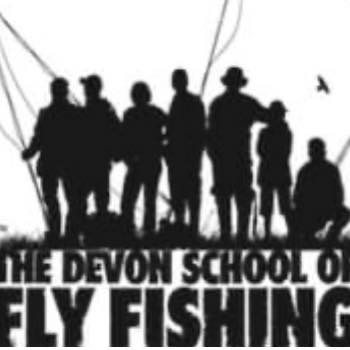
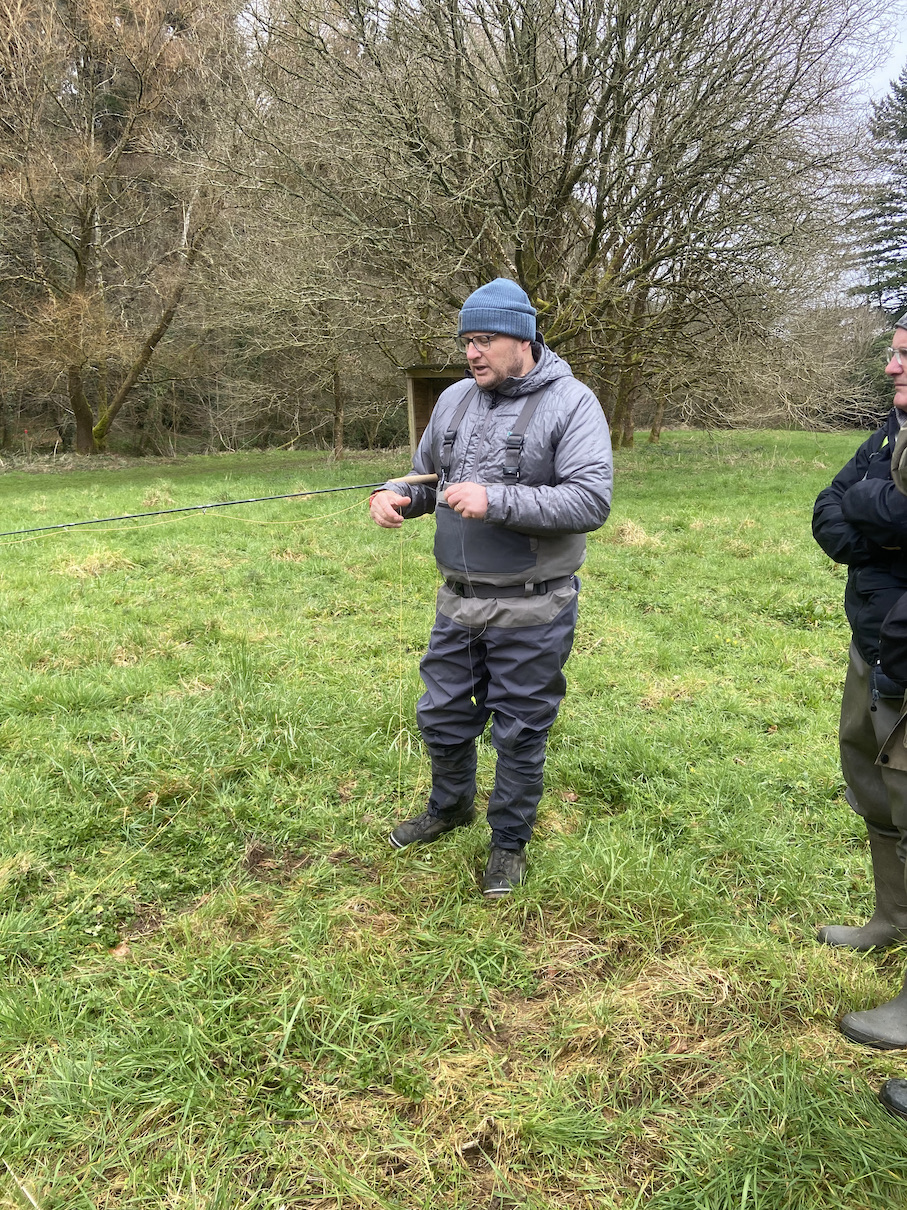
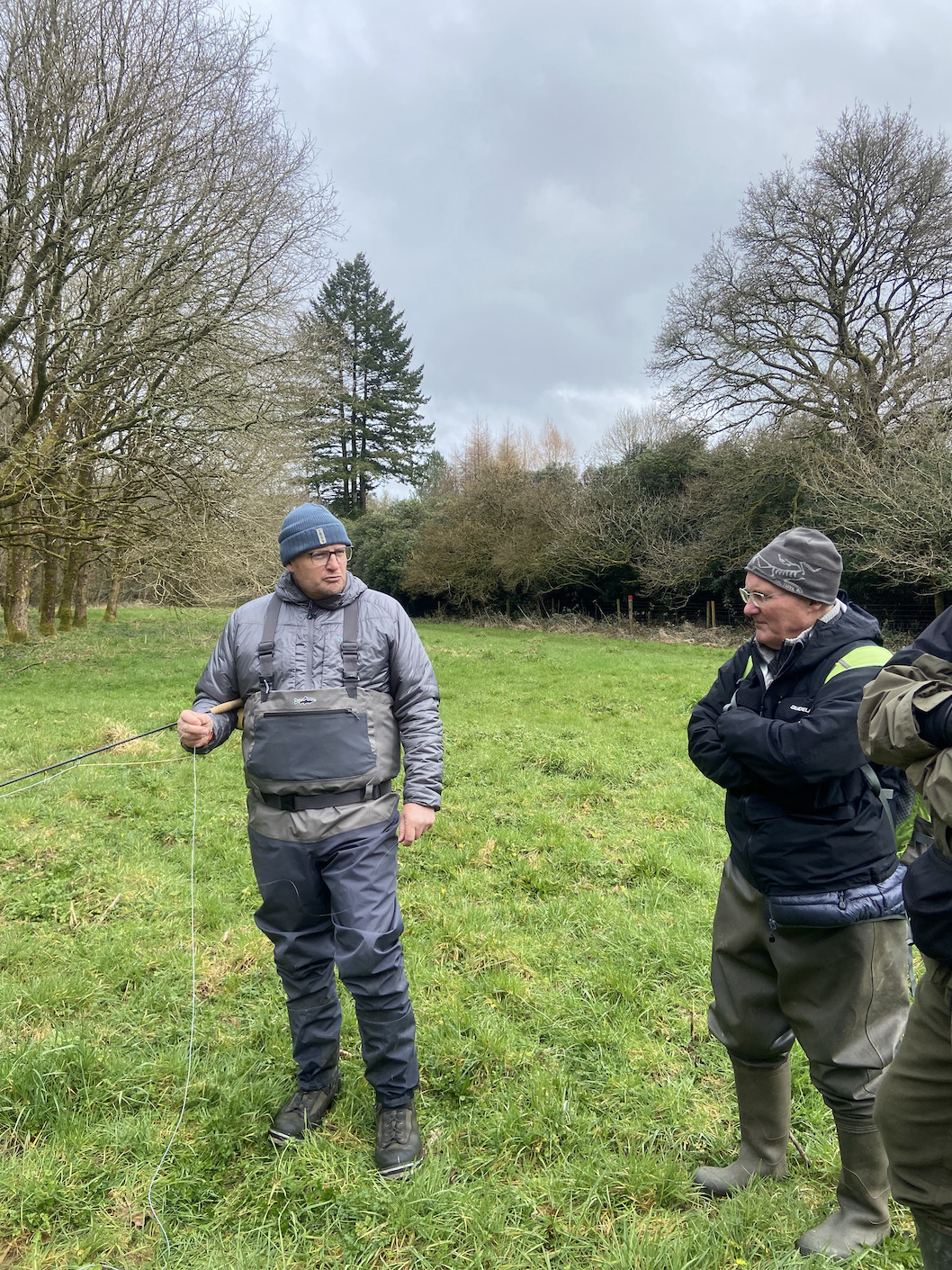
I was privileged to be invited to attend the Taw Fishing Club AGM at the Fox and Hounds at Eggesford last Saturday. The Taw Fishing Club has five and a half miles of fishing on the Upper Taw and its tributaries offering some excellent fishing for wild brown trout.
I arrived at 10:00am to join members in the field adjacent to the River Taw where Gerald Spiers of the Devon School Of Fly Fishing was offering a casting clinic for members. It was good to be close to the river with the evidence of Spring all around. Gerald chatted about the intricacies of casting and fly presentation in depth. Engaging the audience in discussion on mending the line, fly choice, reading the water, casting loops, arc, wrist position, and how to approach the water. He also discussed the finer details of tackle choice advising on leaders, tippets, rod choice and line care. I am sure all walked back to the hotel for lunch enthused for the coming season and eager to employ the knowledge imparted by Gerald. The art of fly fishing and fishing in general is a never ending game of interaction with nature that offers an absorbing fascination that can never be quelled once hooked.
Members and guests mingled over lunch and engaged in conversations that I feel sure contained many fishy tales. On our table the fishy agenda drifted into the toxic world of politics and the environment. It seems increasingly apparent to me that populist politicians are leading the human race on a slippery road to extinction. Failure to acknowledge uncomfortable truths to ensure election is a symptom of a generation that is increasingly disconnected with the natural world.
The Taw Club has been running successfully for over a century and is presently in a very healthy state thanks to a hard working committee Chaired by Gordon Murray with secretarial responsibilities carried out by Chris Searles. The club has a current membership of fifty and welcomes new members to its ranks. The Taw Club is a friendly group that offers plenty of opportunity to mingle and learn during club teach ins and bank clearing days.
The Chair addressed a large proportion of the membership at the meeting and highlighted concerns mirrored across angling clubs throughout the land. There was conversation around the aging dynamics of club membership and the need for a younger generation to take up rods on the water. Angling participation and social interaction has undoubtedly been impacted upon by covid and recovery is slow.
The health of the river was top of the agenda with a focus on working with landowners to safeguard the future. Gordon expressed his views on pollution and quoted the phrase; “ Kind Words butter no parsnips”. Farming incentives to deliver habitat improvement, River fly monitoring, Citizen Science Water Quality Sampling and the vital work of an underfunded Environment Agency was all discussed with passion. It is essential that this desire to safeguard our rivers is put into practice.
The Environment Agency was represented by North Devon’s Fishery Enforcement Officer Sam Fenner who engaged with the club members offering advice and guidance on a range of river related enquiries.
There was discussion around invasive species including signal crayfish and mink. The increasing population of beavers were also acknowledged which are generally thought to bring wide benefits to the rivers eco systems.
An exciting increase in shad spawning in the Taw system was noted with hope that this will bring focus upon the importance of the Taw system to this rare and endangered species.
Catches of wild brown trout across the club’s waters has been consistently good over recent seasons with between 300 and 500 trout registered by members each season. The use of an online recording system has been a very beneficial recording tool ensuring up to date information is shared across the membership.
The AGM was concluded with a talk from Gerald Spiers who gave some valuable advice on wading safely. His three top tips being to wade slowly and upright, wear studded waders and use a wading staff.
Membership details for the Taw Fishing Club can be found at :-
https://www.tawfishingclub.org/membership-and-rules
 http://www.lance-nicholoson.co.uk
http://www.lance-nicholoson.co.uk

When my good friend Martin Turner sent a question via messenger saying he was going to Wimbleball mid-week would I go for bank or boat? As luck would have it I already had the day pencilled into my diary and asked if he minded me joining them on the bank?
A few days later I convinced Martin that there was no rush to get at the water for early dawn and as a result we decided on stopping off at Dulverton for breakfast. We walked into The Copper Kettle Cafe at around 9:15am and ordered up their mini breakfast and hot drinks. Half an hour later we set off glad we had gone for the rather adequate mini breakfast.
Martin and I have always plenty to discuss and had talked non stop since leaving my house in Loxhore and had still not exhausted the agenda when I climbed out of the car an hour after dark following the days fishing.
It had been a bright and sunny day with a strong East to SE wind adding a bite to the moorland air. We had decided to start off near Bessom’s but on meeting Martins friend Mike Snudden walking the path and reporting no action we changed our plan and diverted to Rugg’s that was sheltered from the cold wind.
I had been absent from Wimbleball for far too long and was eager to re-engage with this water that has a beguiling wild feel. It’s hard fighting rainbow trout are renowned amongst the Fly fishing fraternity testament to the hard work undertaken by Mark Underhill and his family over recent seasons.
Early March and to me fly selection is simple, surely any lure with black and green fished on an intermediate line is the order of the day.
We spread out along the bank and set about searching the icy waters emersed in our own worlds. I relished the cool water as I waded out to my waist, the chill water on the fingers as the line was retrieved. I expected that thrilling pull at any moment as I settled into the rhythm of cast and retrieve.
I took stock of the surrounding rolling hills, the stark bare trees of early spring, blue sky and occasional fluffy white clouds. The margins were populated with frogspawn and melodic bird song drifted on the chill wind.
I was surprised not to have caught after close to an hour and strolled over to Martin and Mike who were engaged in conversation with a fellow fisher.
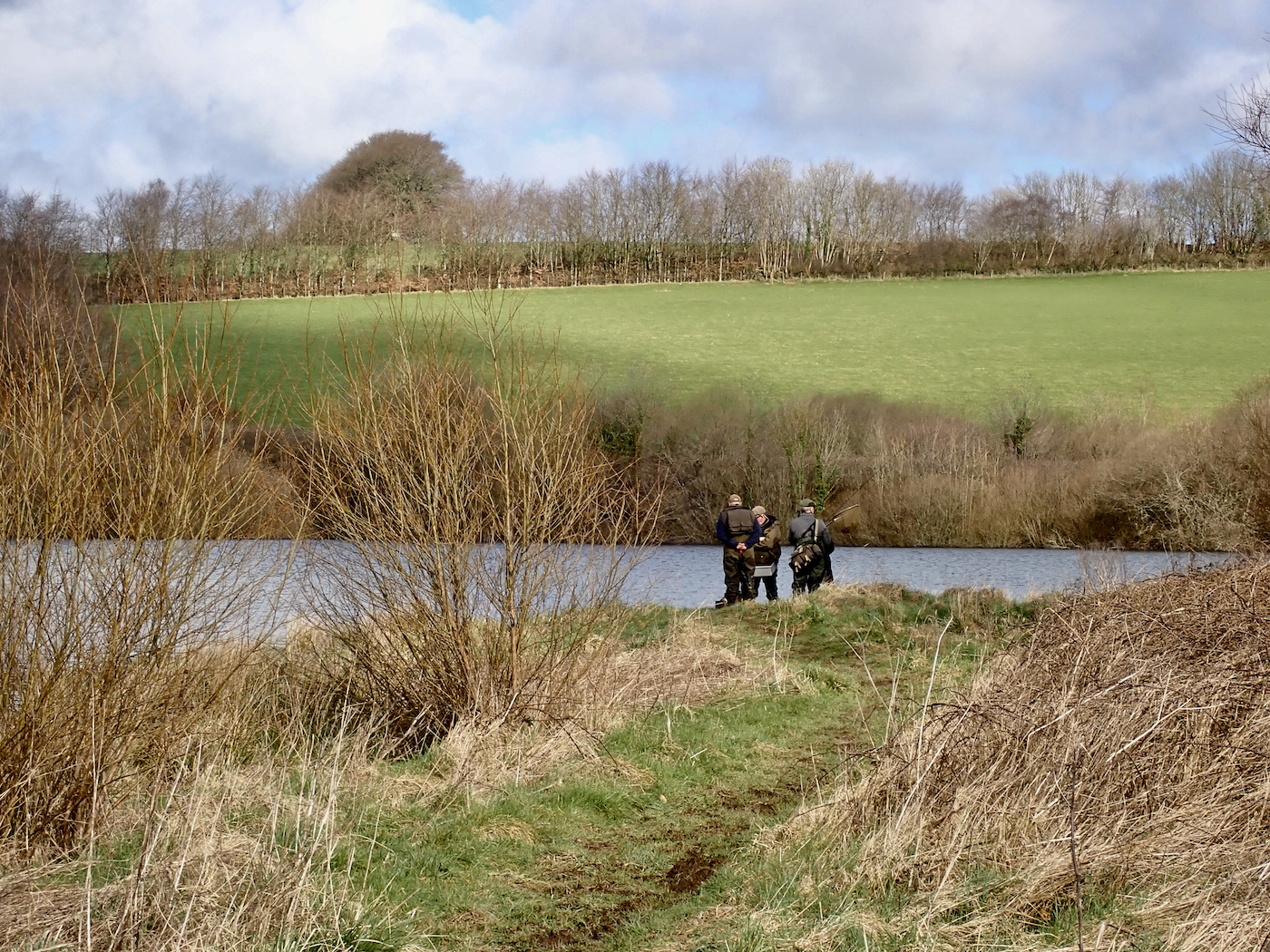
The angler was Chris Guest who I had engaged with frequently on social media over recent seasons. It is always good to meet in person and we chatted fluently for several minutes comparing notes on bass, trout and books.
My theory on not needing an early start proved questionable as Chris had caught nine trout before we arrived with ice in the margins.
As Chris had not caught whilst we were present we decided upon a move to a new area.
The boat launching area has been kind to me in the past and it was to here that we moved. Punching a line into the bitter cold wind proved hard work and I soon had an urge to move to an area with a little more shelter where I had enjoyed success on previous trips.
In truth it was good to have a brisk walk and warm up a bit after several hours fishing. I had foolishly tempted fate earlier boasting to Martin and Mike that I had not blanked at Wimbleball since its new era.
After half an hour of searching the water I was delighted to feel a savage pull through the line. A large rainbow trout of perhaps five pounds erupted from the water, a couple of yards to the left there was another swirl as another large trout appeared in a flurry of spray! The result was inevitable as the two trout that had seized two flies on my cast headed in separate directions!
A few minutes later Martin and Mike arrived to hear my tale of woe. Mike had banked a good rainbow of around 2lb whilst Martin remained devoid of any action.
My line zipped tight once more and for a few moments I enjoyed brief connection with what looked and felt to be a good trout. I missed one more trout but by now I was feeling confident and expectantly fished eventually avoiding a blank day with a slim full tailed rainbow of just over 2lb.
I was delighted to look across to Martin fishing fifty yards to my right his rod bent over a fish leaping clear of the water in a flurry of spray. After an exciting tussle a lovely rainbow of well over 3lb graced the net.
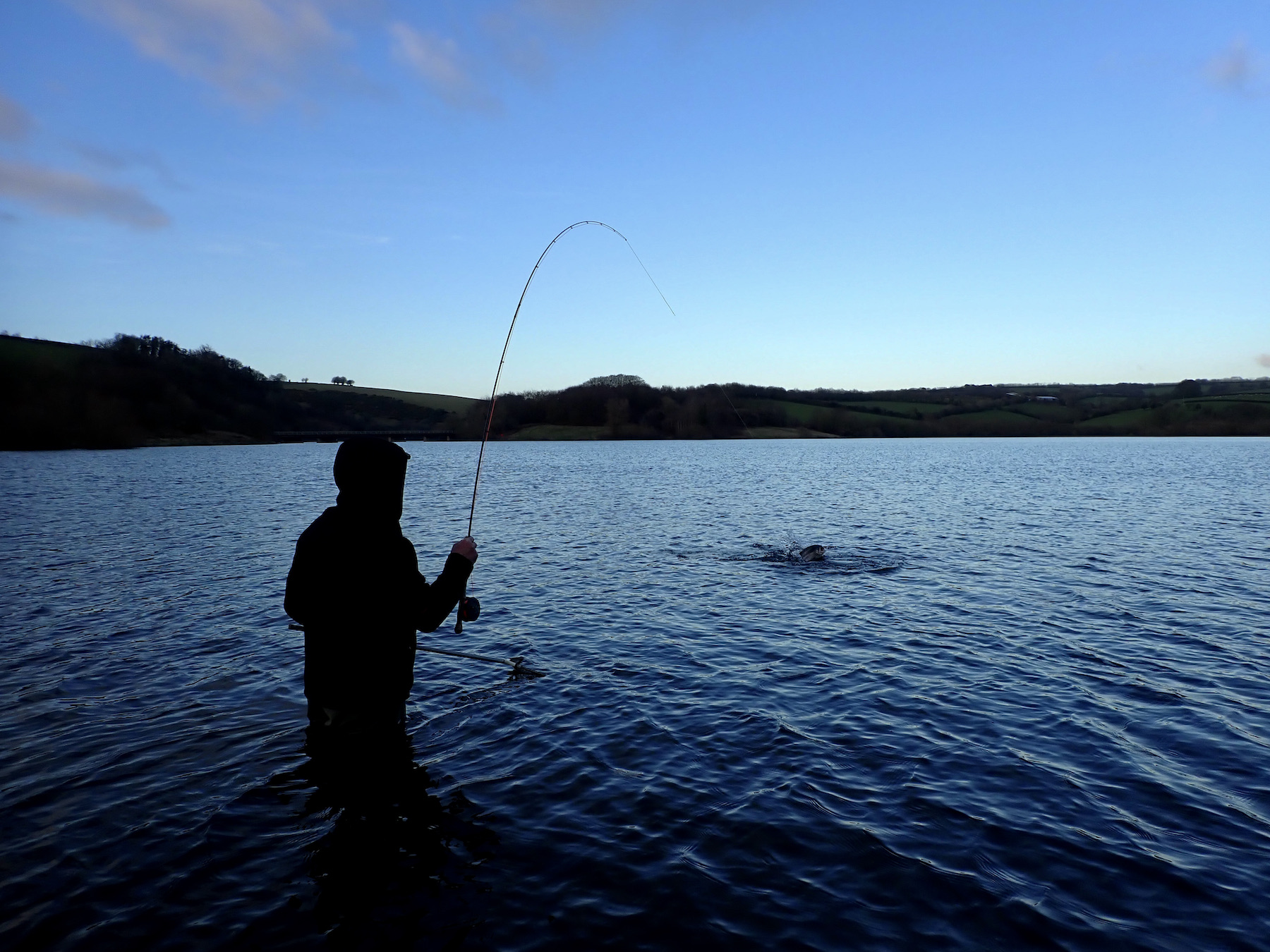
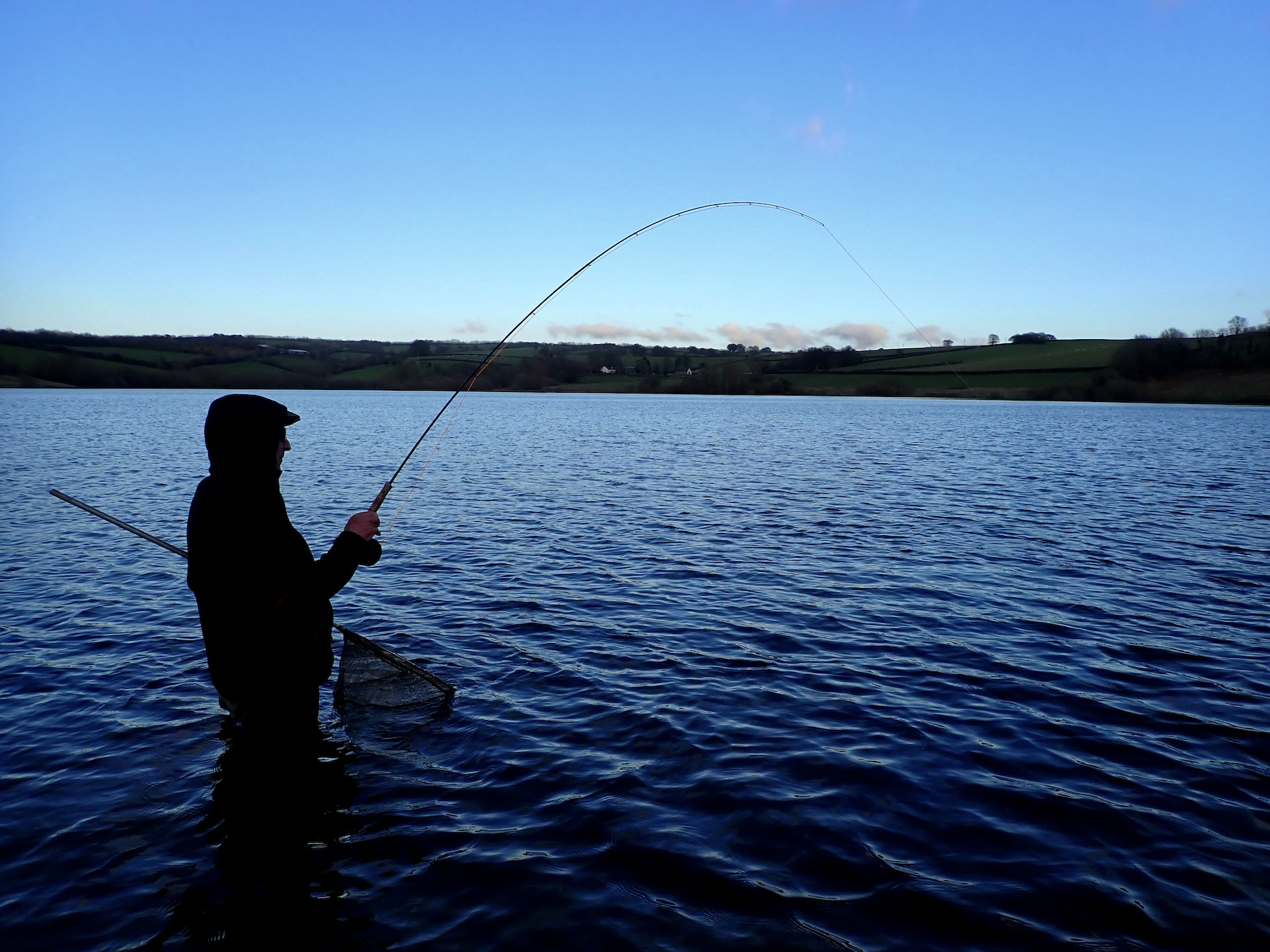
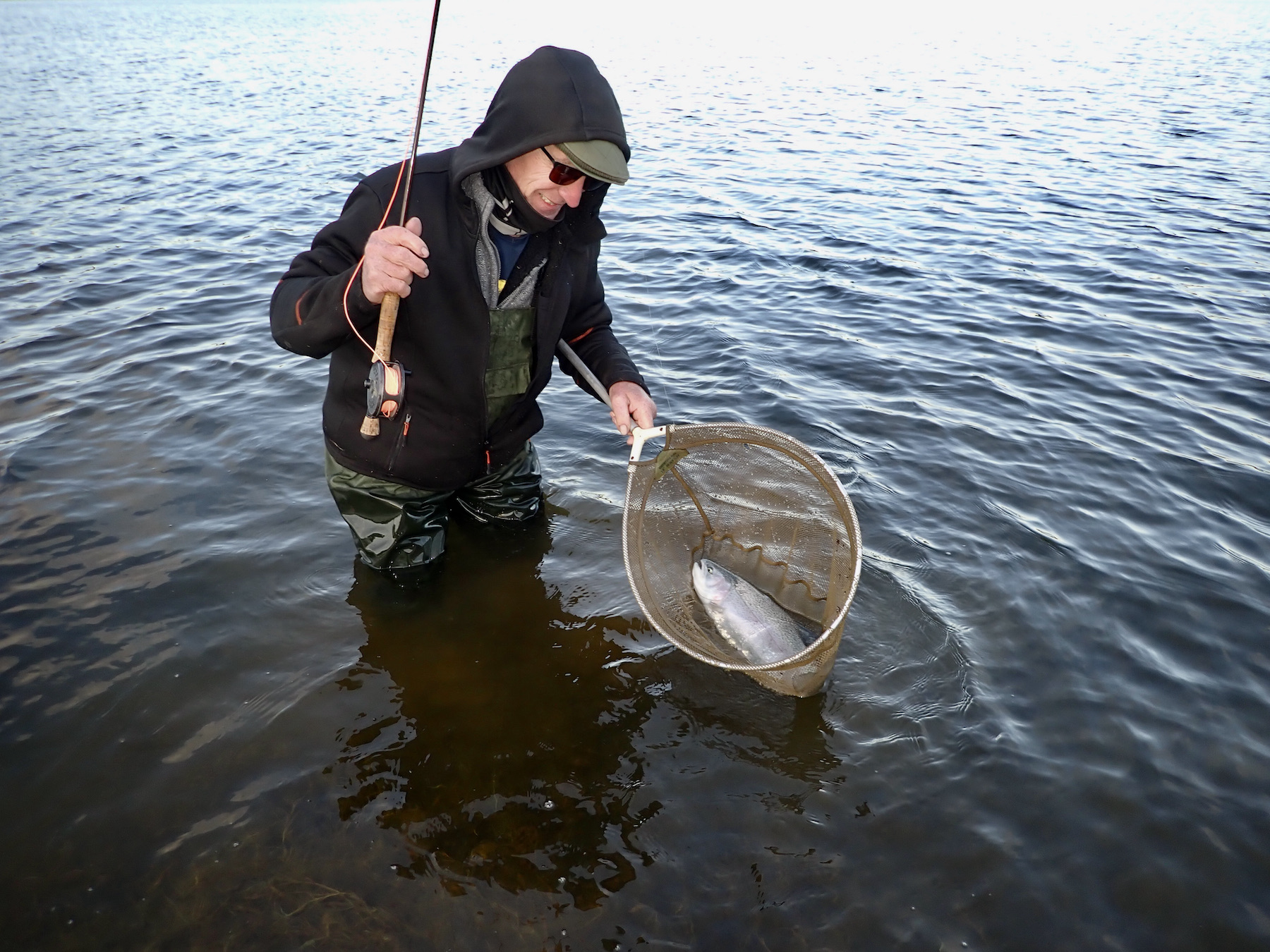
I soon added a second rainbow to my bag a chunky fish of perhaps 3lb 8oz and missed a couple of takes.
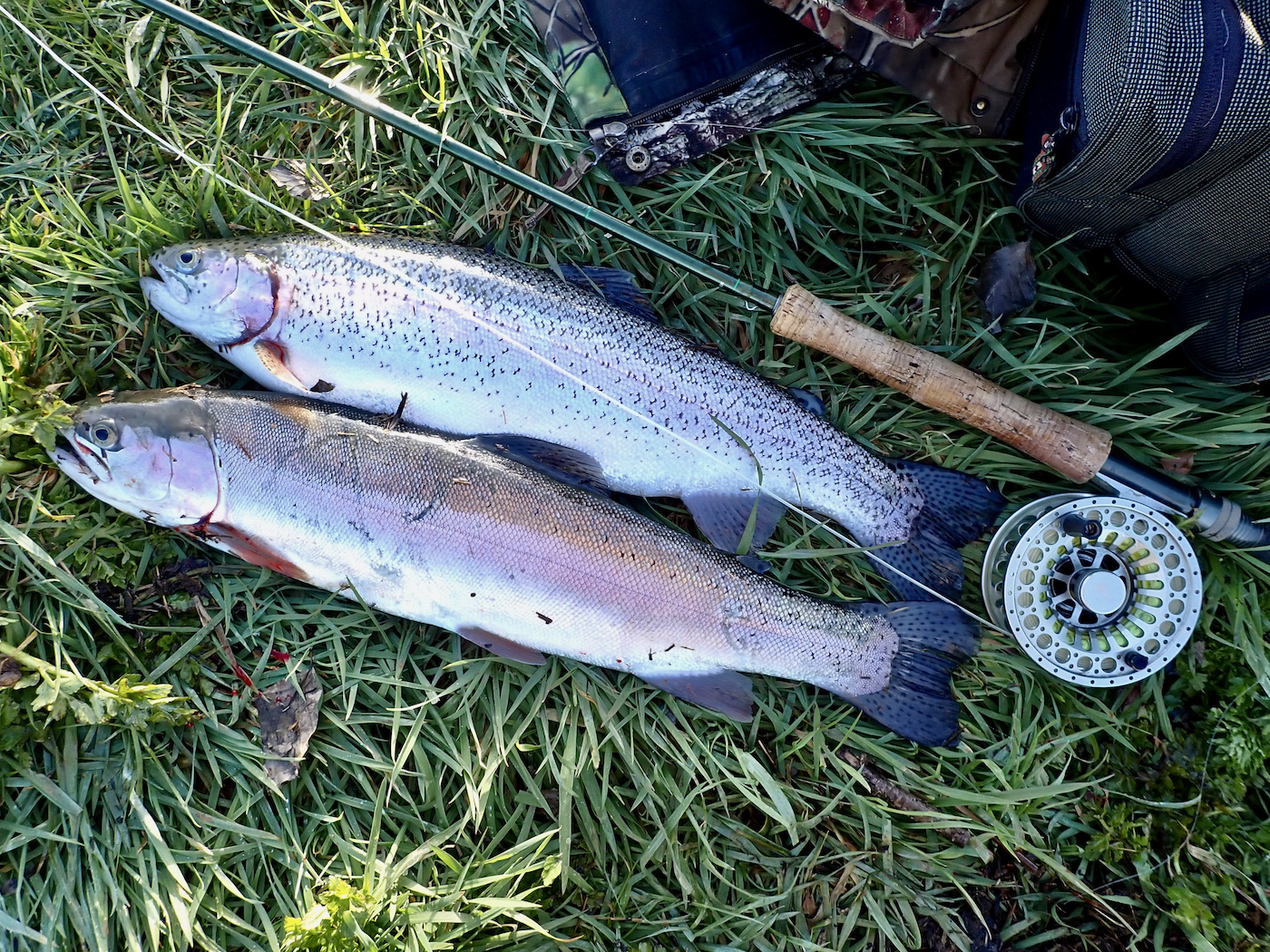
Once again Martin stood in the icy water his rod in a pleasing curve and his reel singing as a big trout surged to and fro. It was now close to five o clock and the sun was sinking slowly behind us. I stood beside Martin sharing the moments and snapped away trying to capture a few images of fishy drama in the slowly fading light of the day.
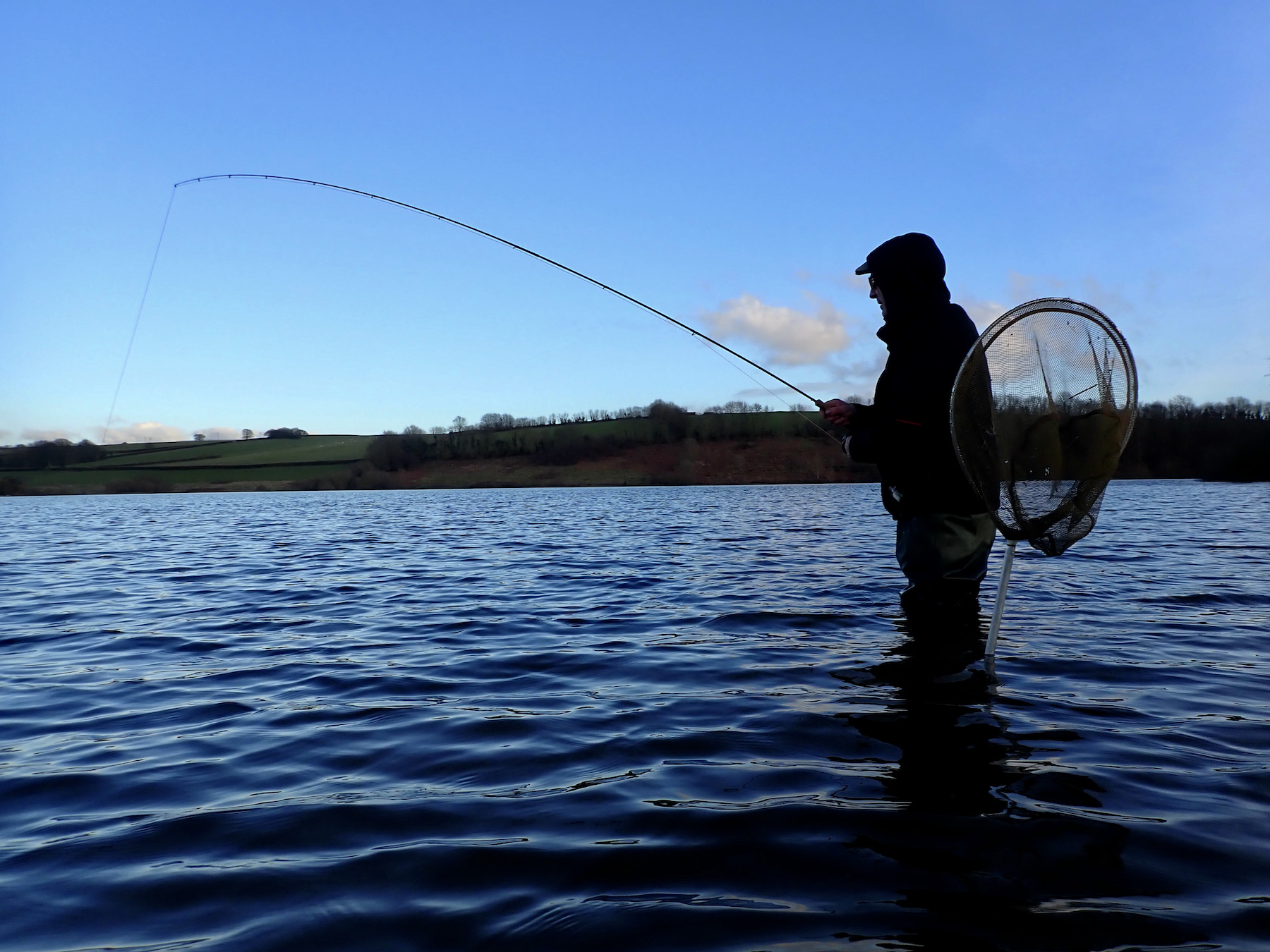
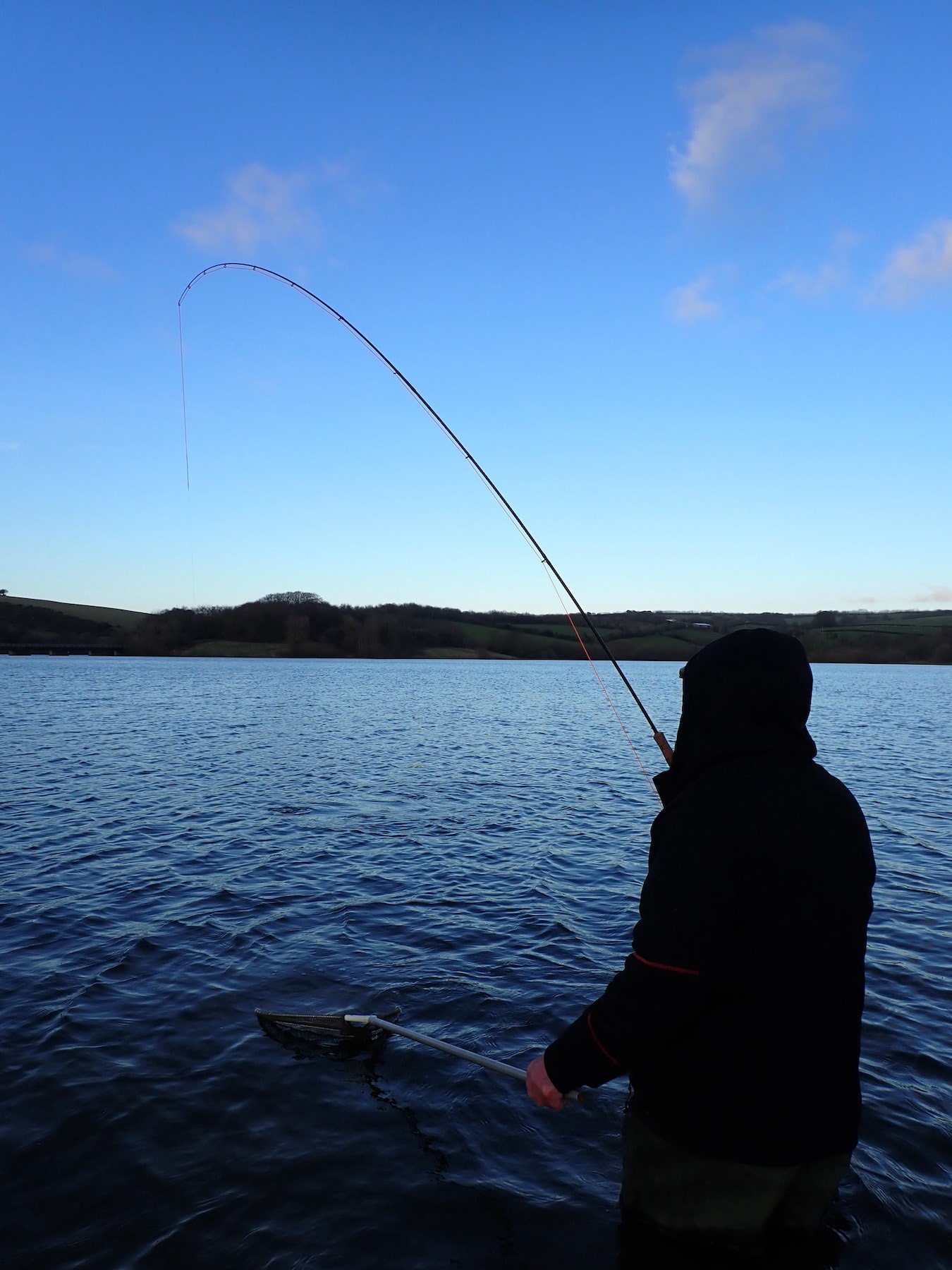
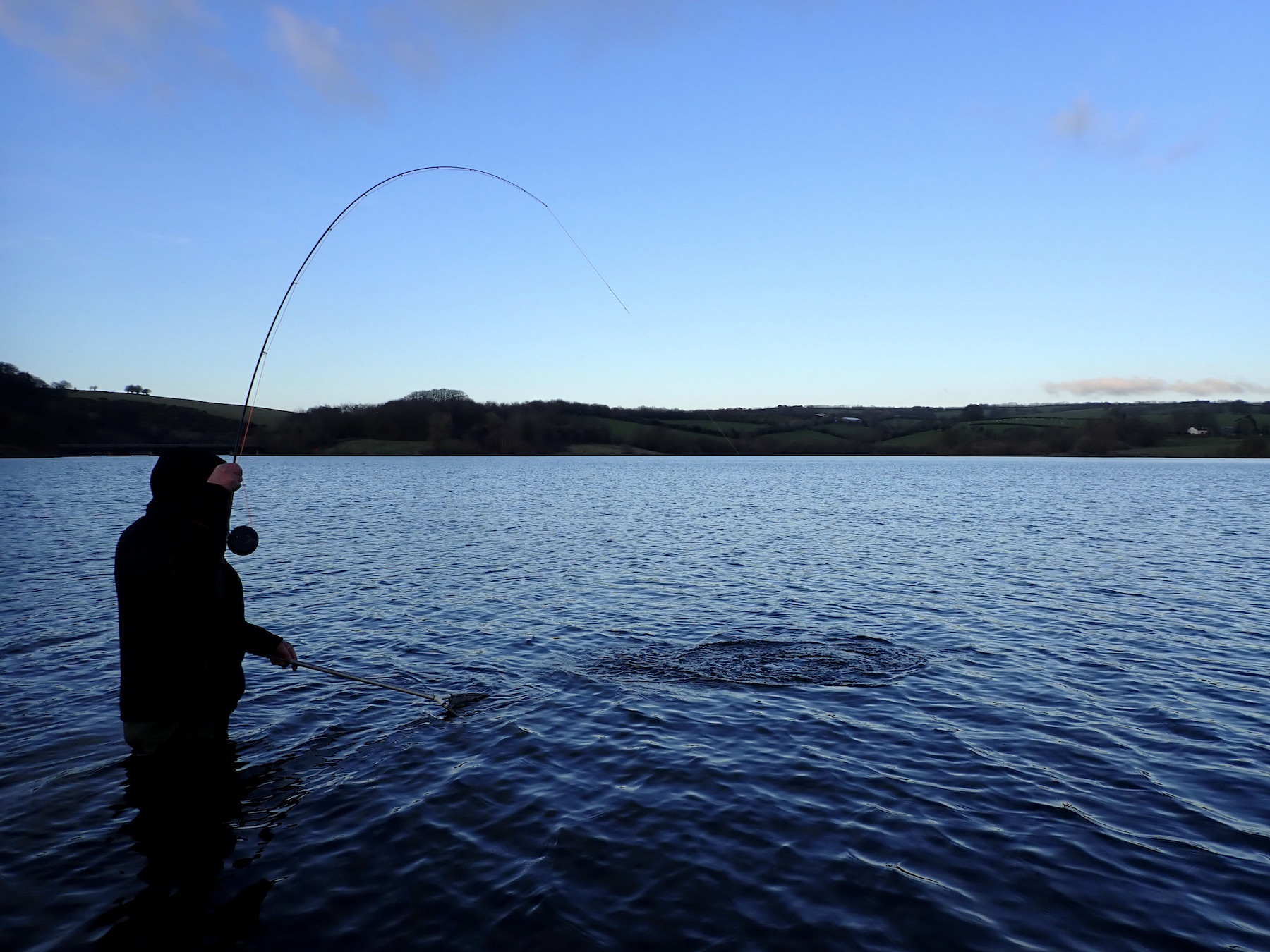
After perhaps five minutes a fine blue rainbow trout of close to five pounds was held aloft in triumph. Mike arrived back holding a fine rainbow of close to four pounds along with the tale of a large fish that had taken him to the backing before departing with his fly.
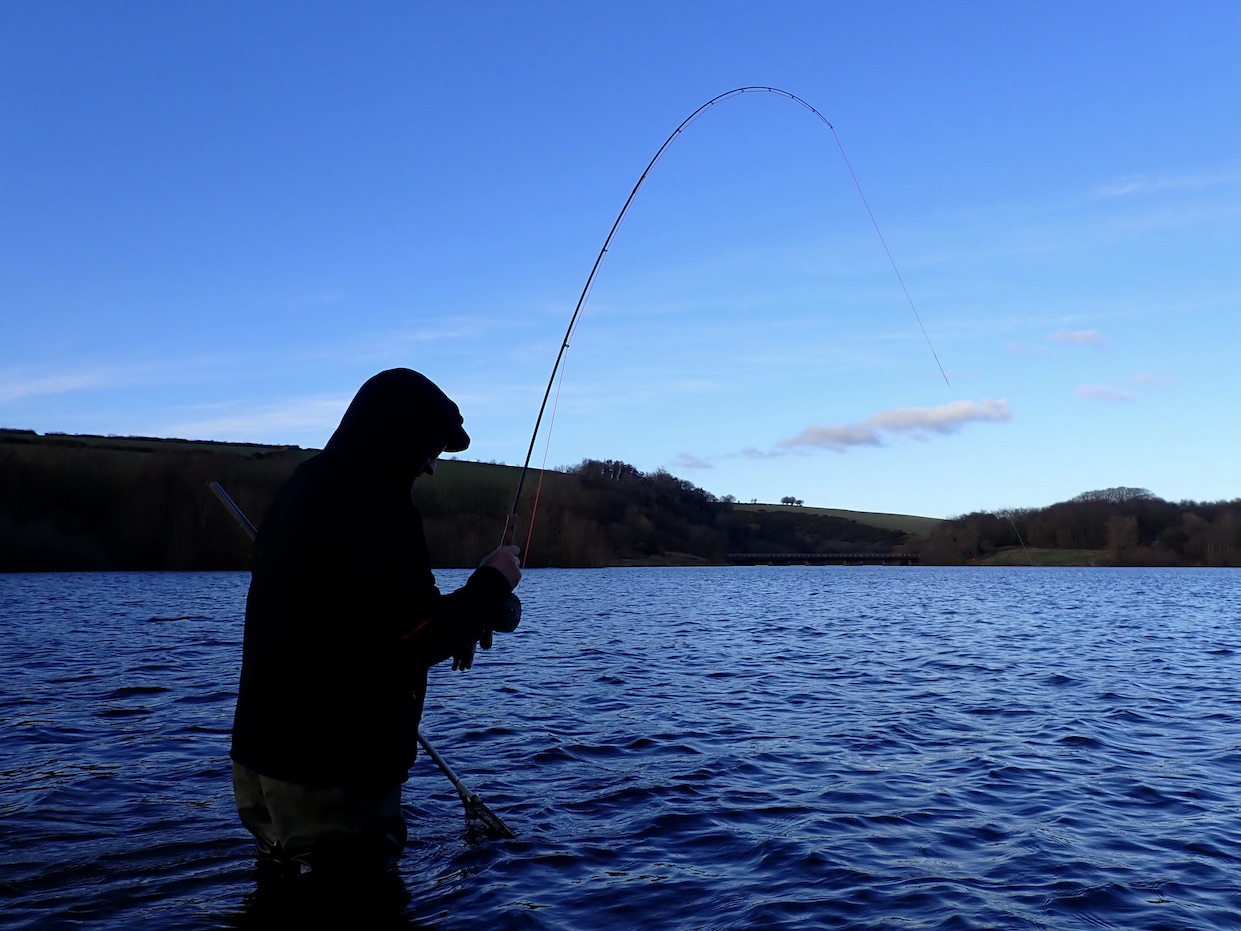
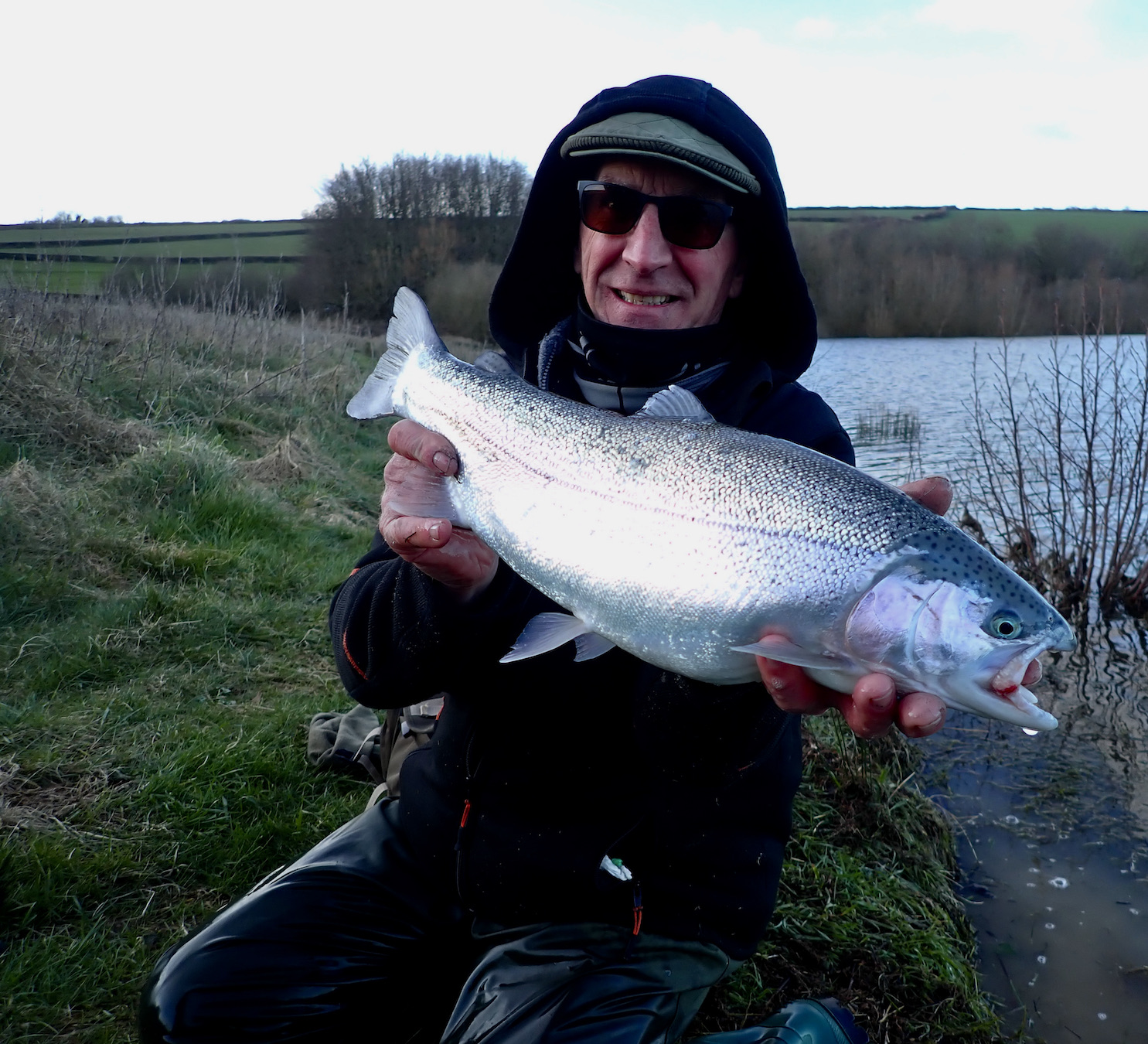
I grabbed a photo of Martin and Mike holding a pair of Wimbleball’s finest. Mike headed for home whilst Martin and I fished on eager for another connection as the chill of evening descended.
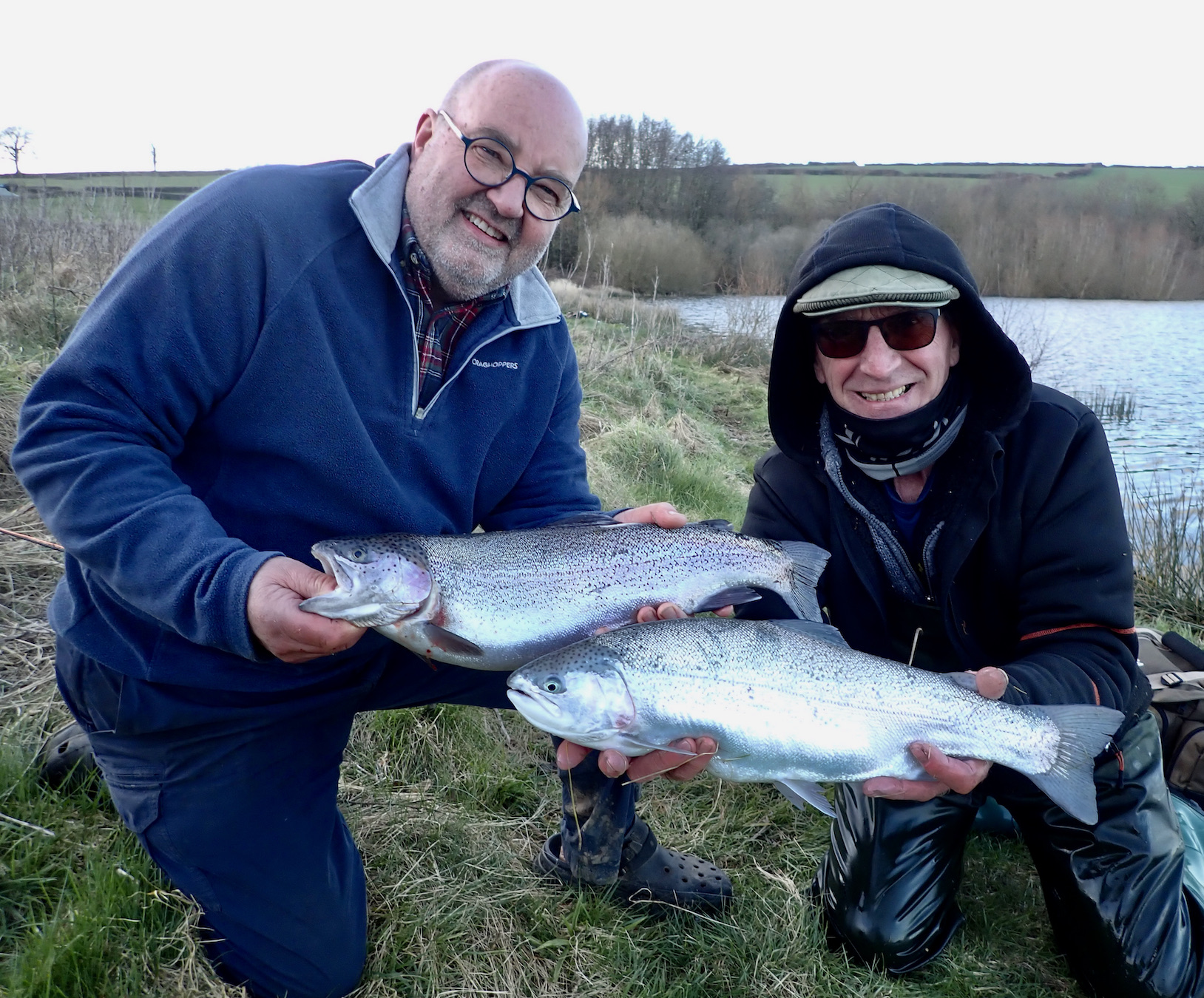
As we walked back the car holding a brace of rainbows each we reflected upon the day and how enjoyable it had been. Whilst we have had days with far more fish we both agreed that these days when its hard work are so often more memorable and rewarding.
These days of early season are so full of promise as we look forward to those warmer days when we will drift teams of buzzers in a gentle ripple driven by a warm southerly wind that will surely blow the bait into the fishes’ mouth.
Wind from the West, fish bite the best.
Wind from the East, fish bite the least.
Wind from the North, do not go forth.
Wind from the South blows bait in their mouth.

